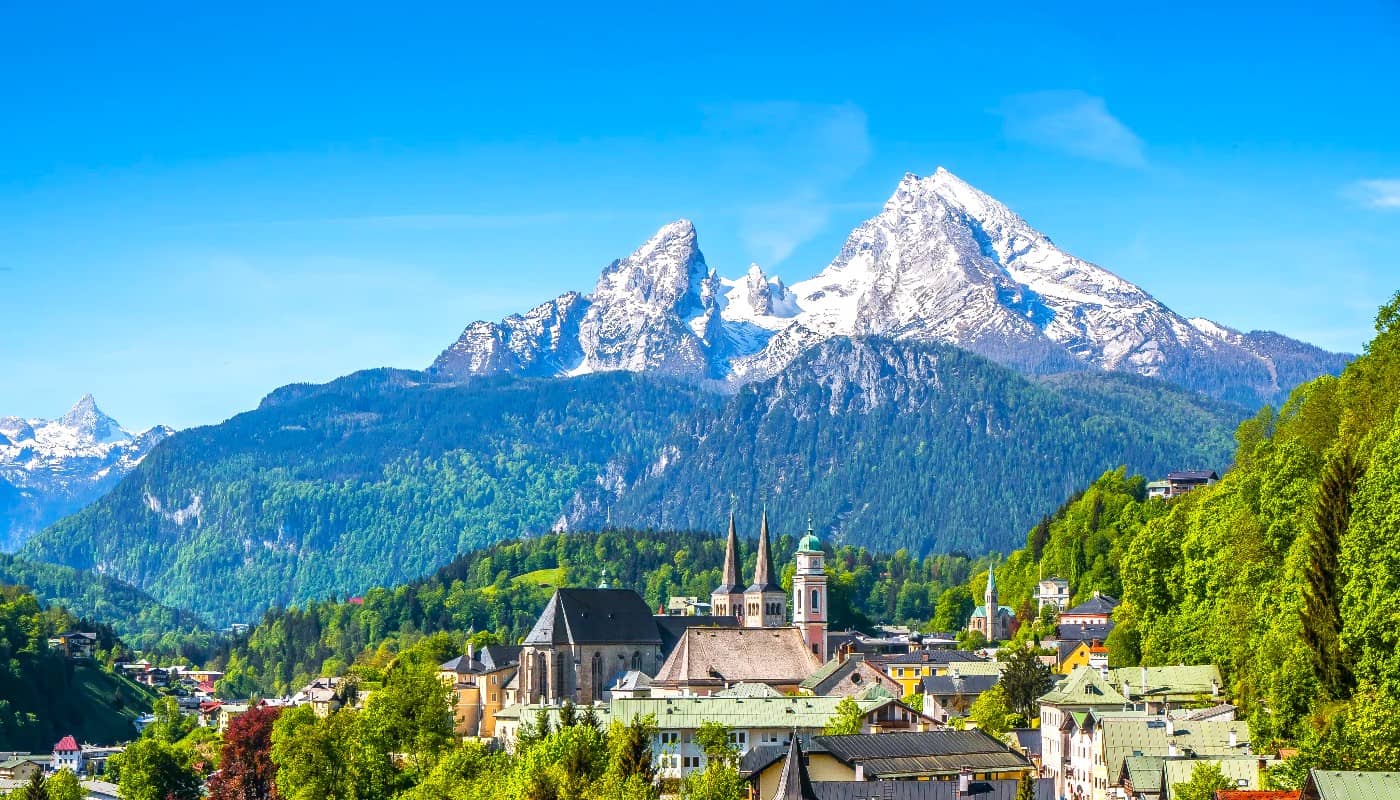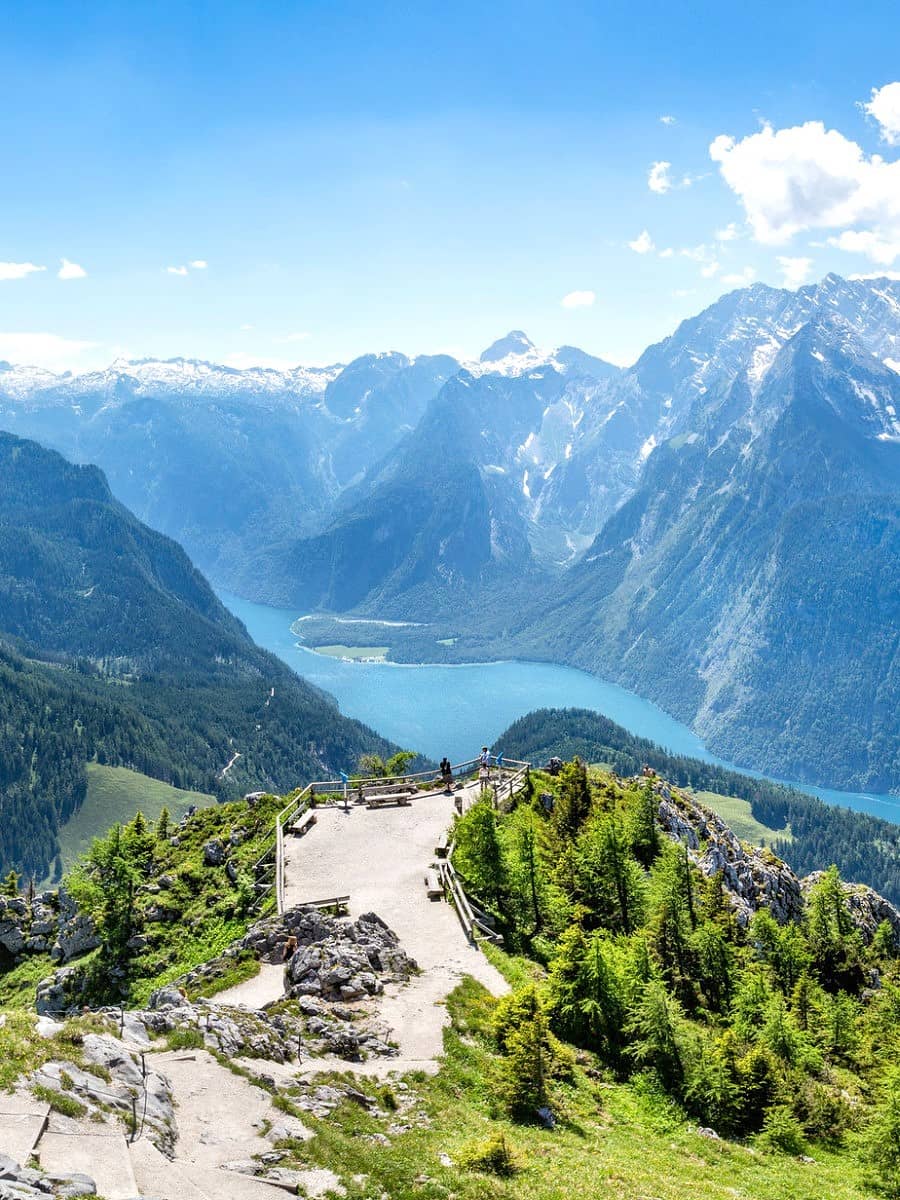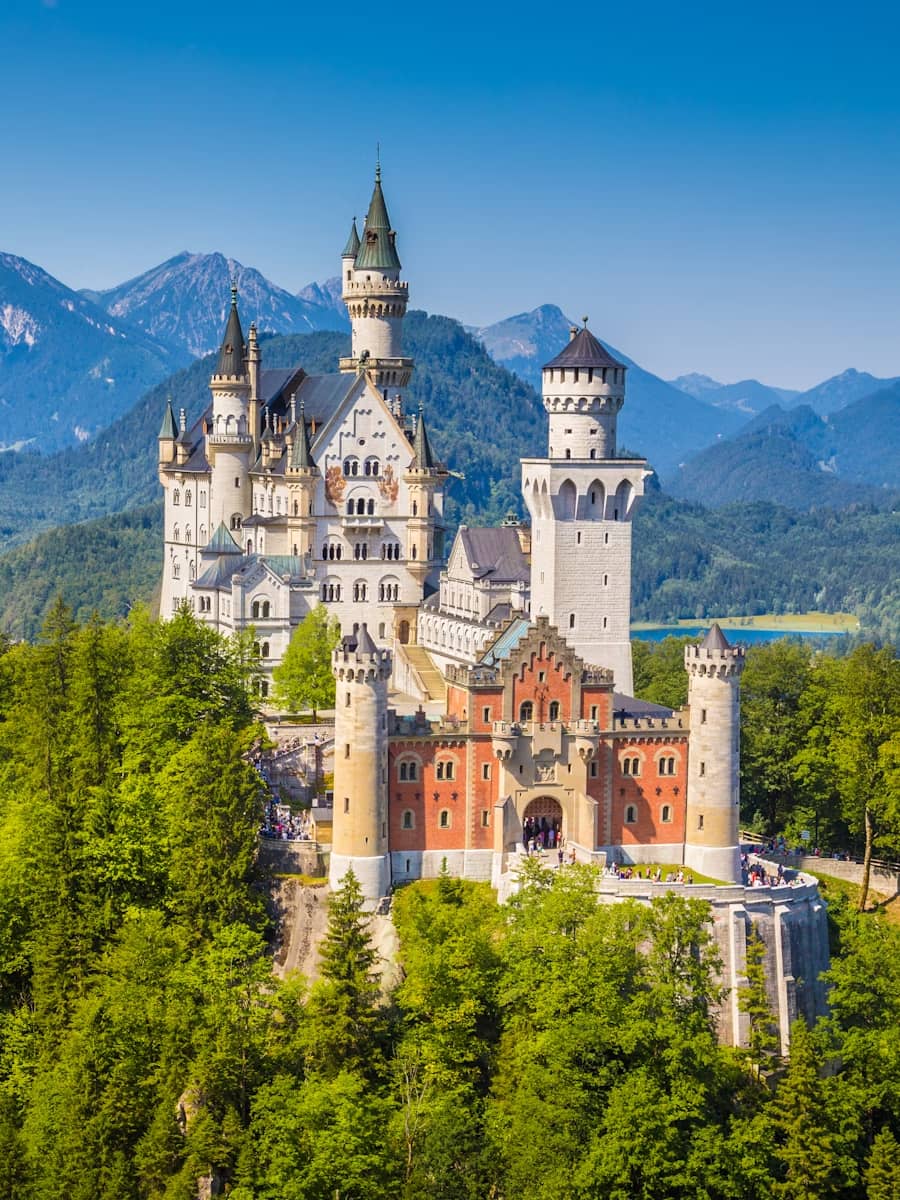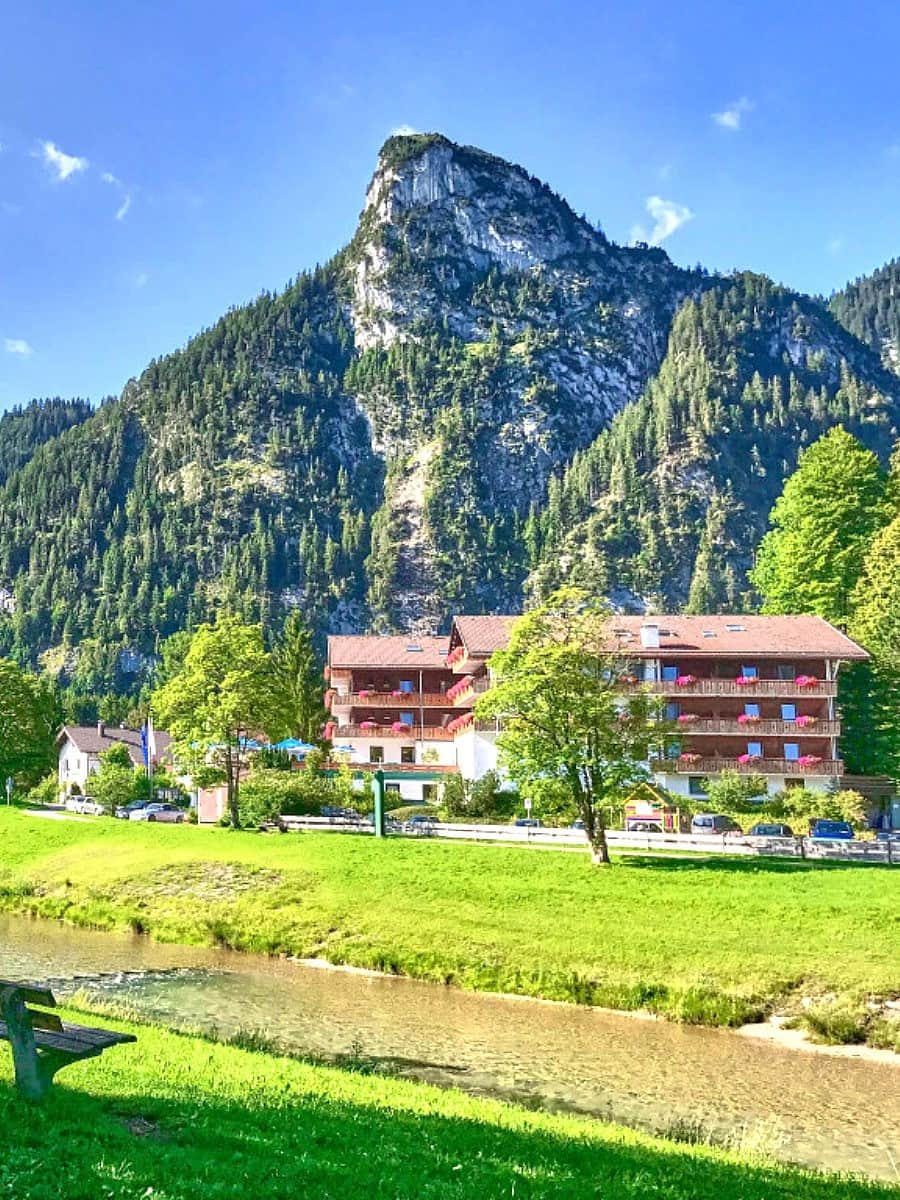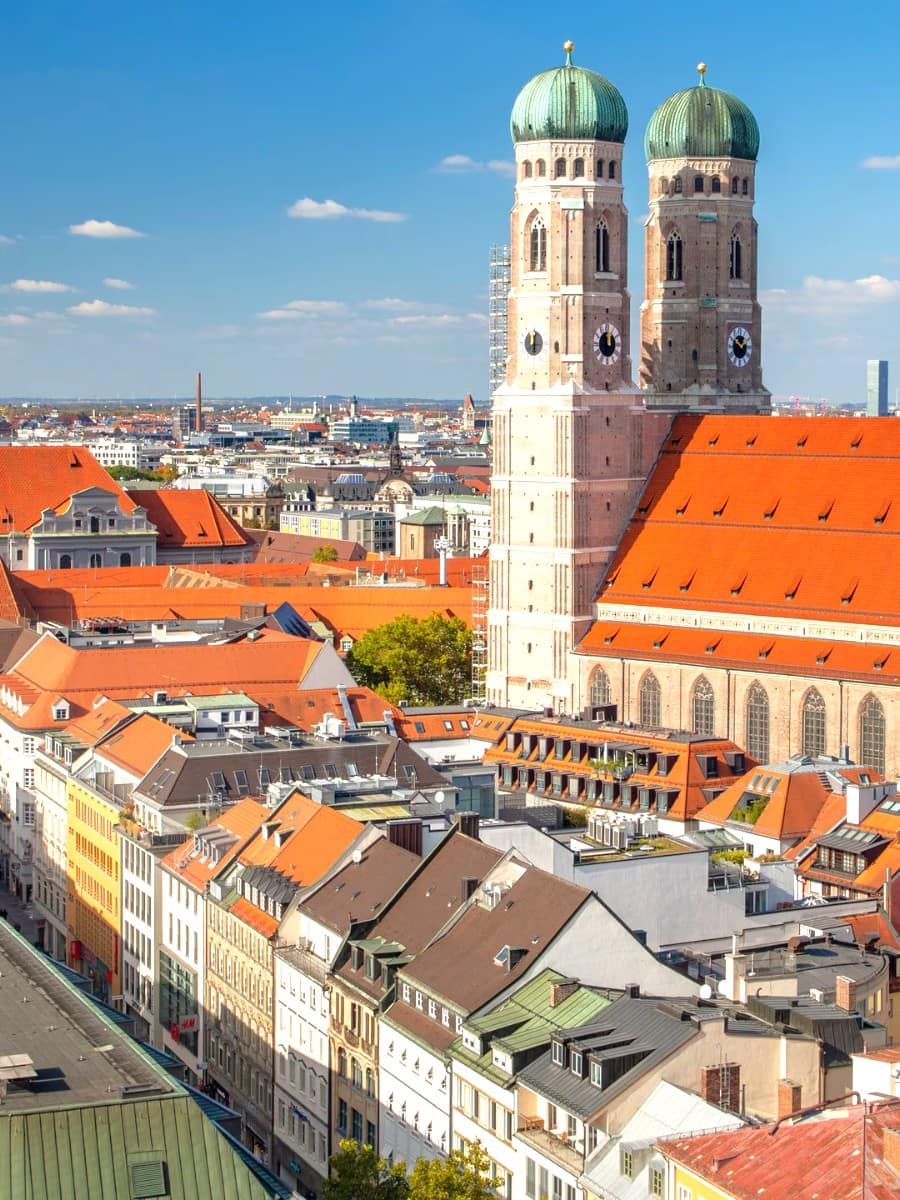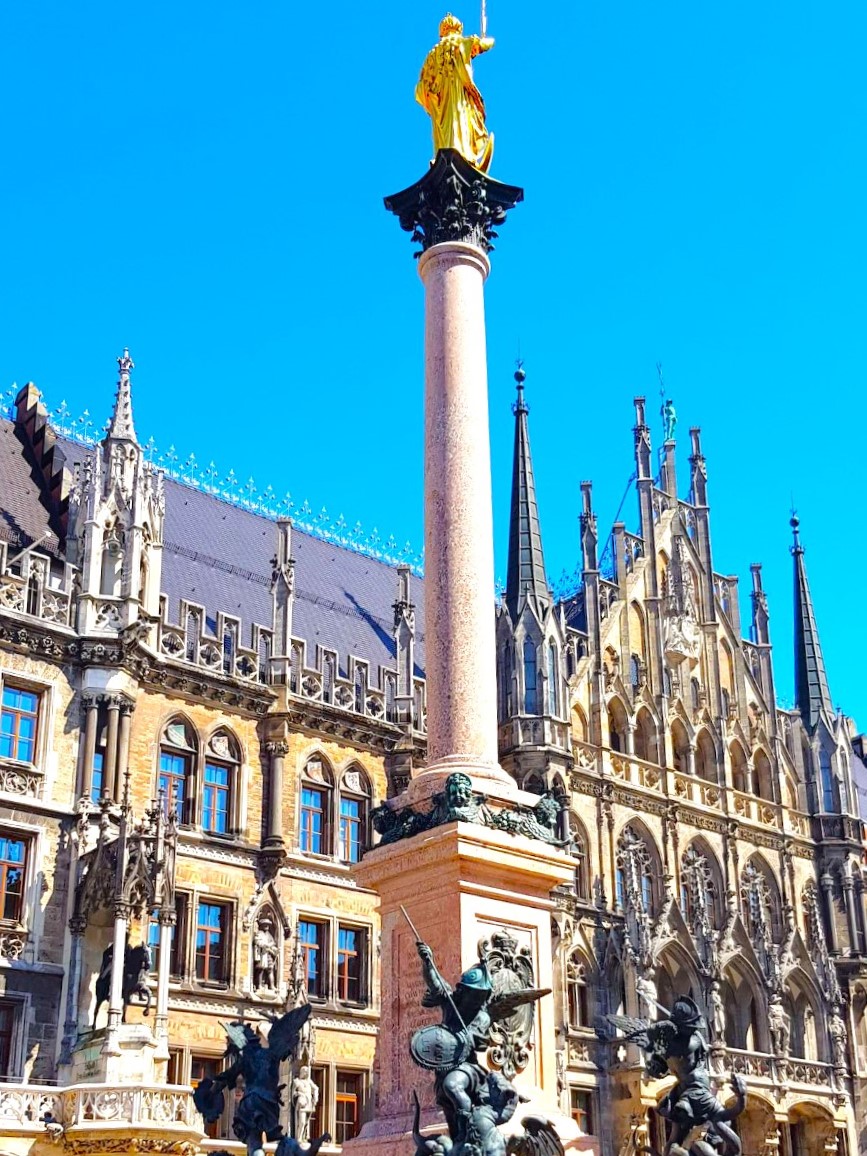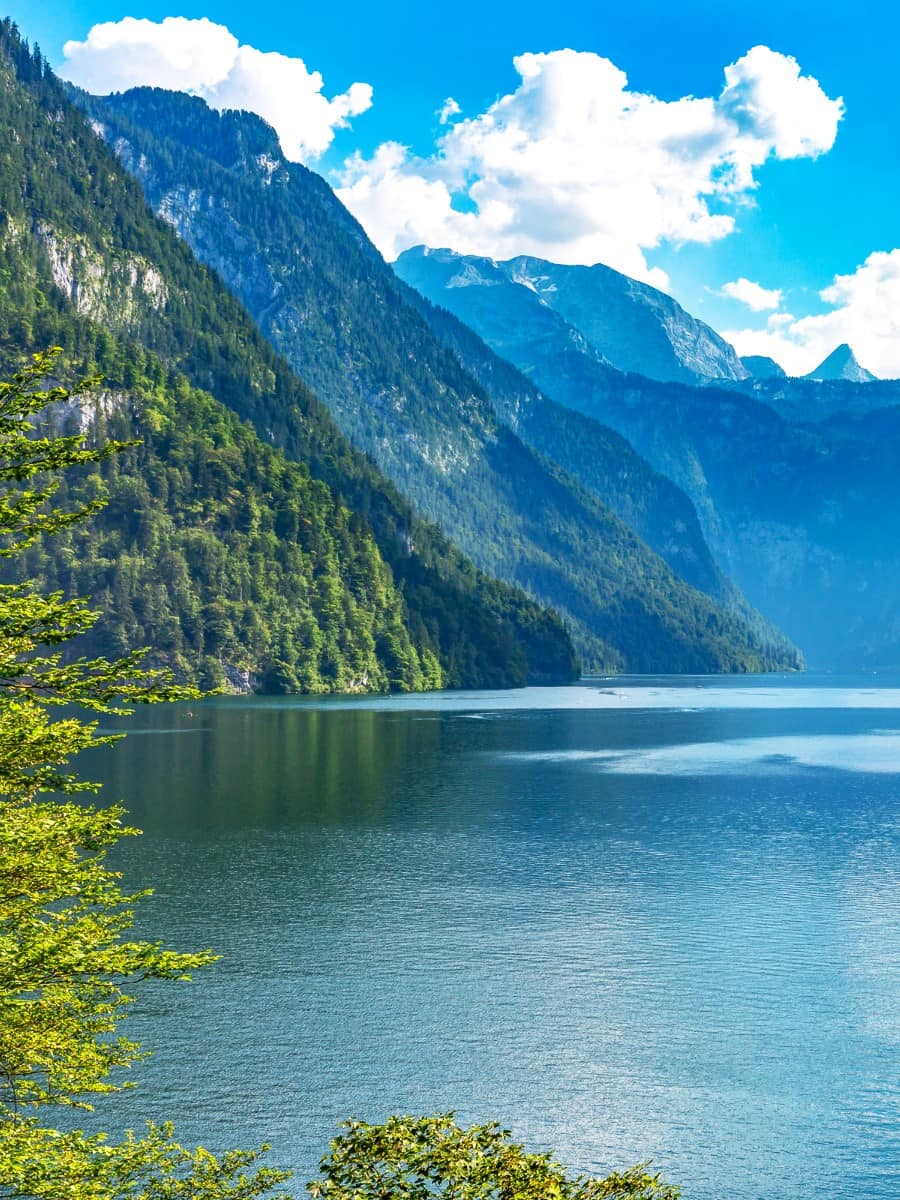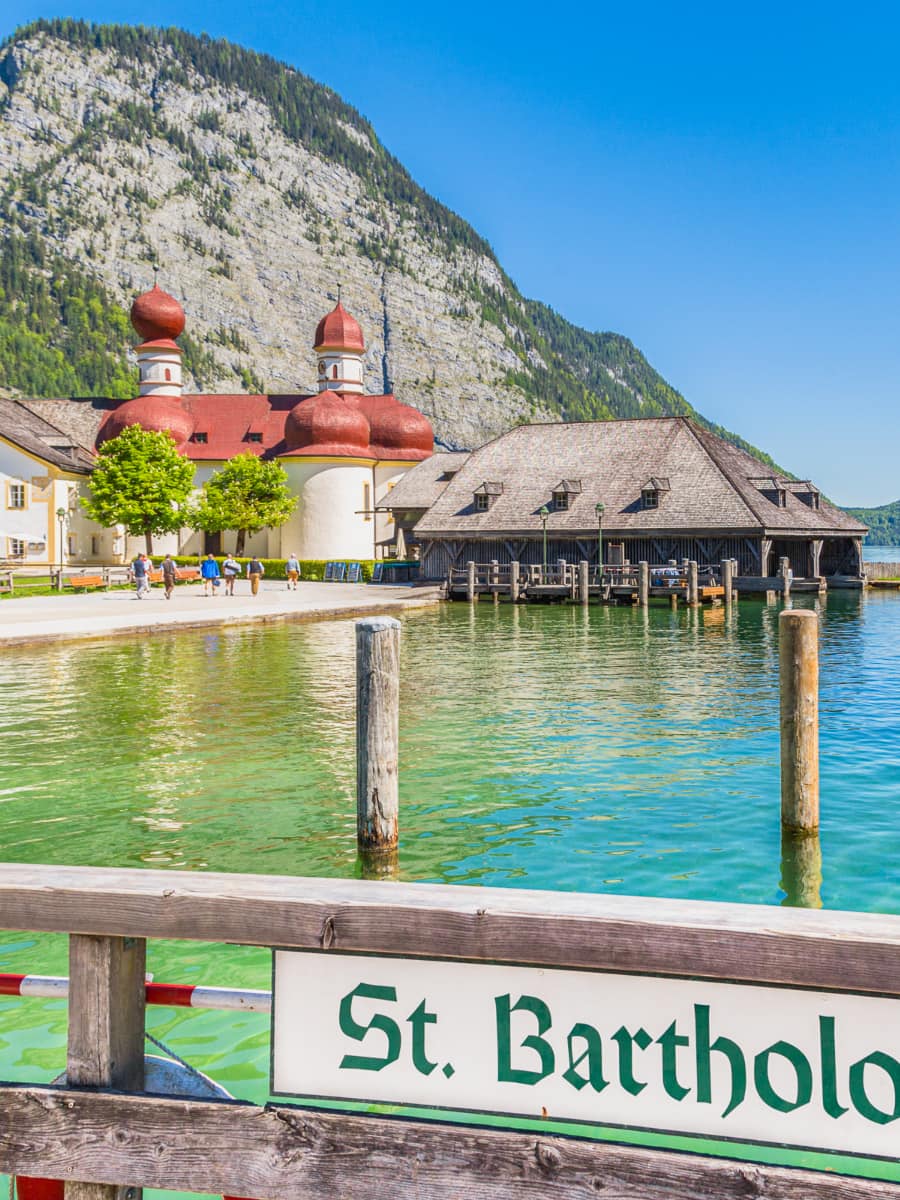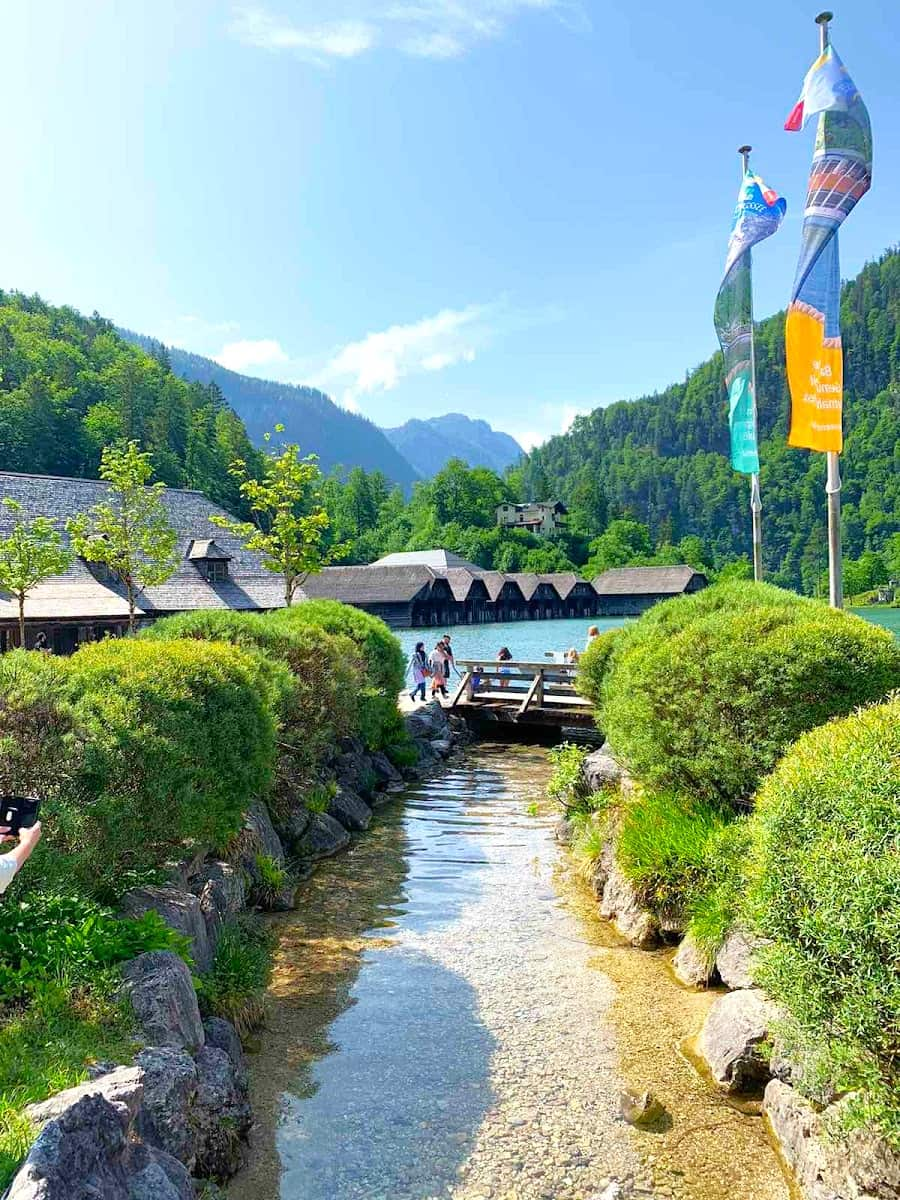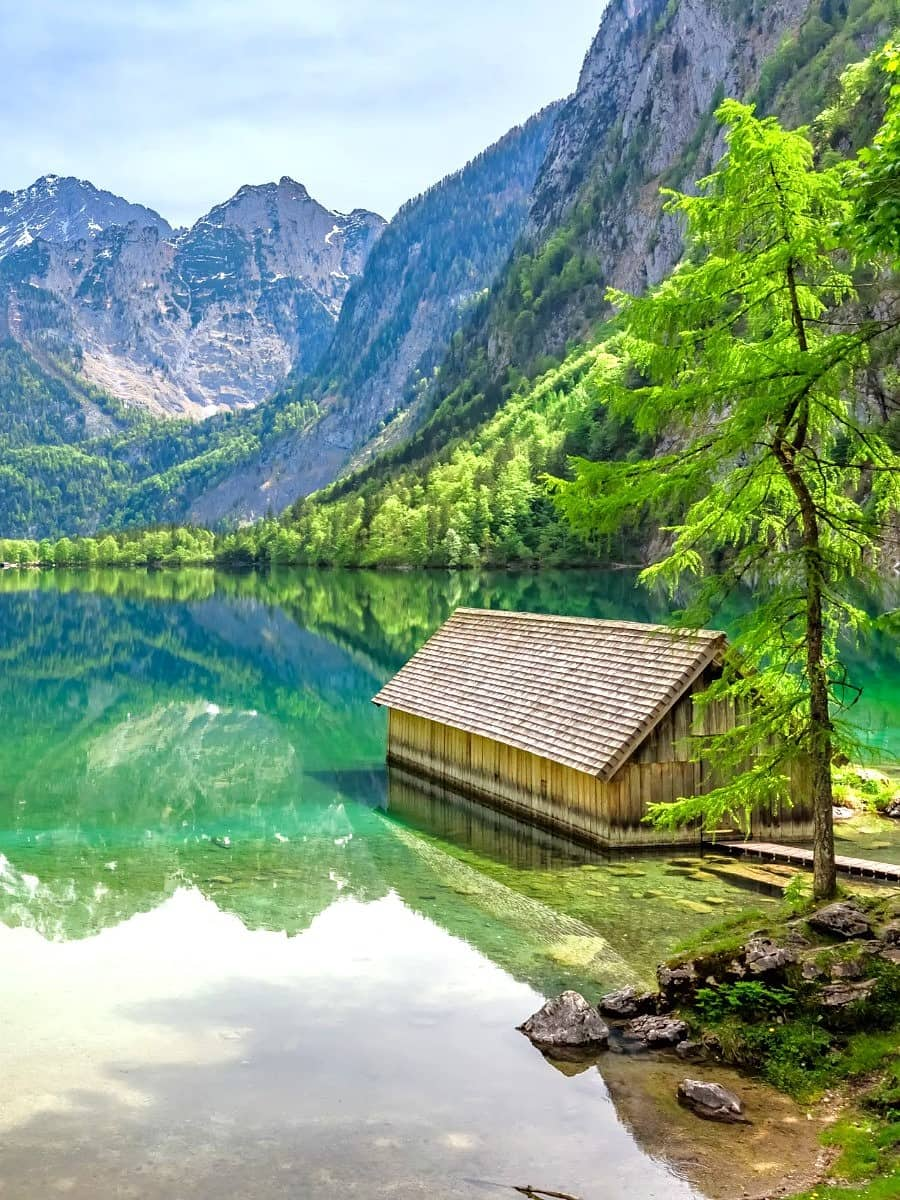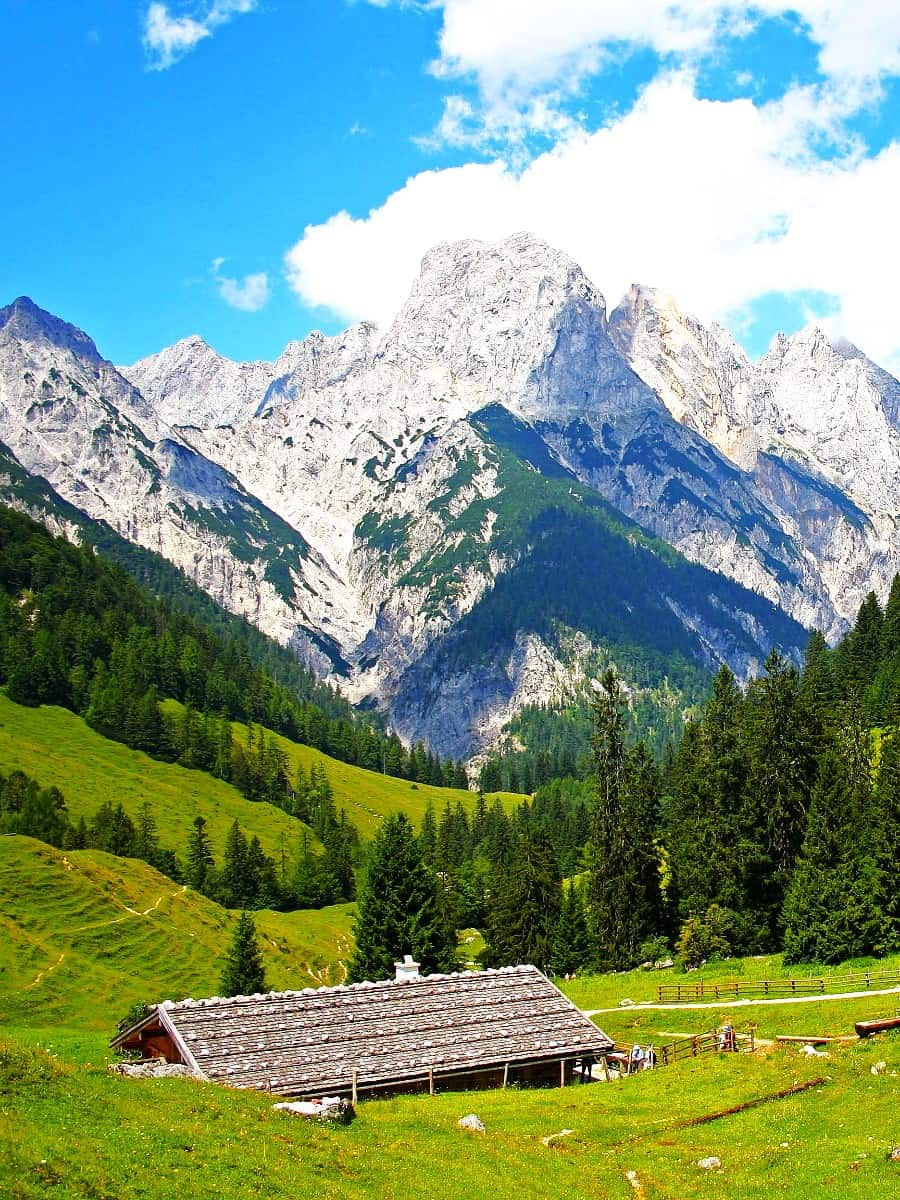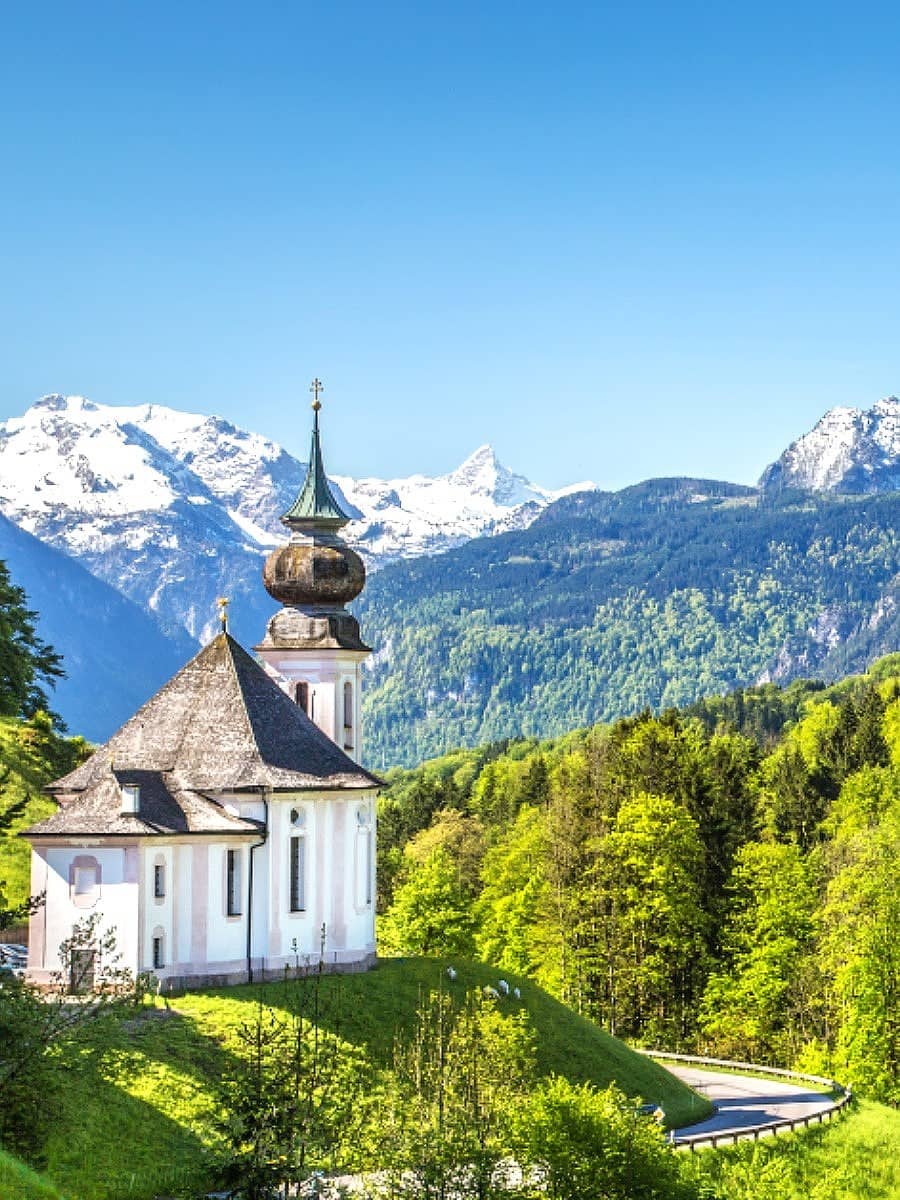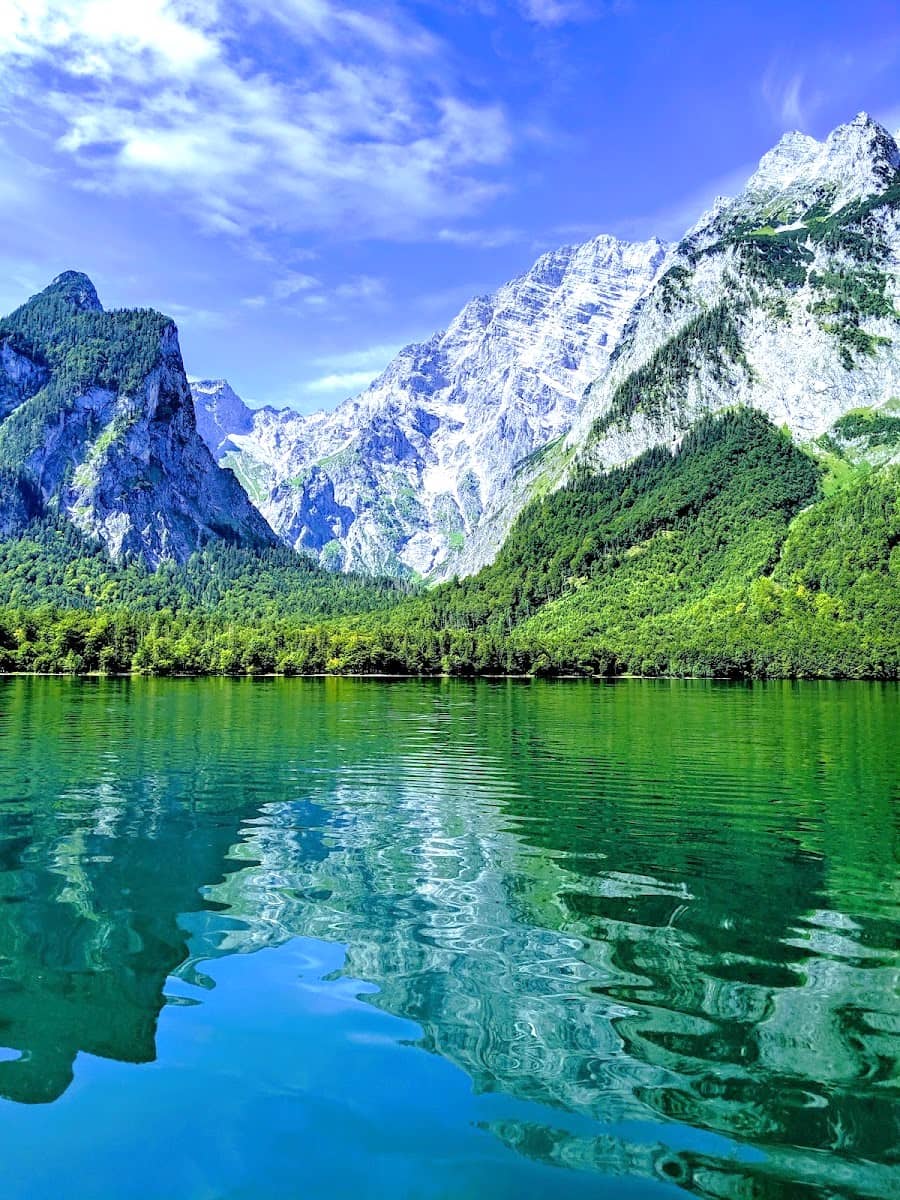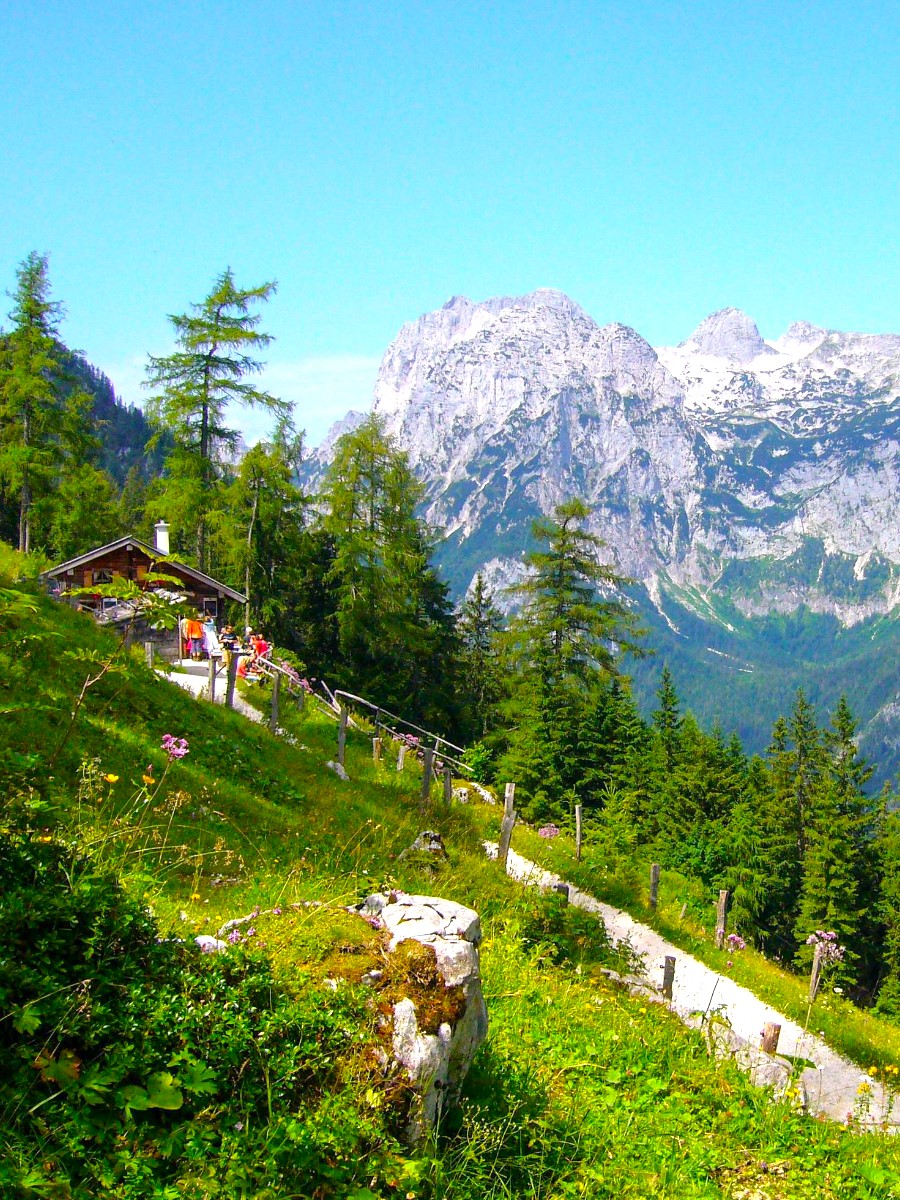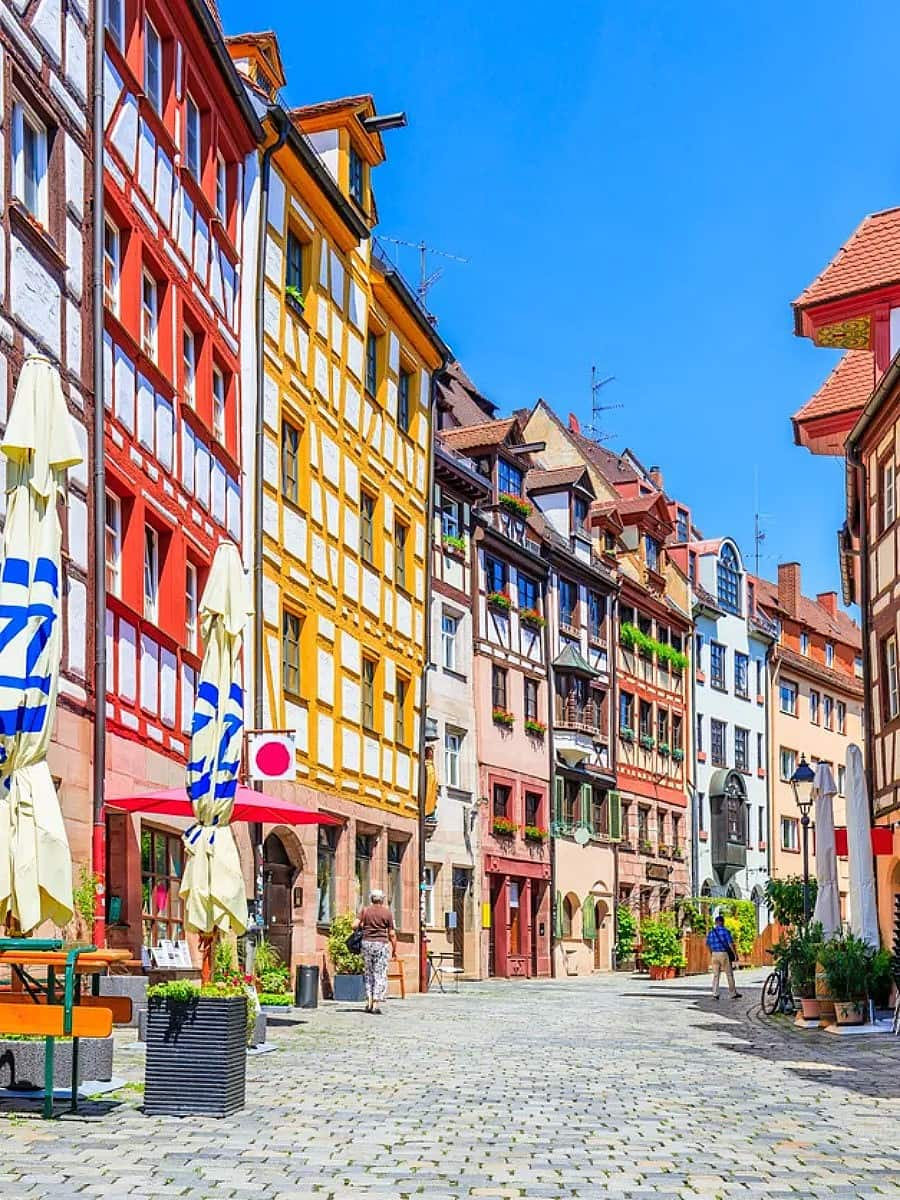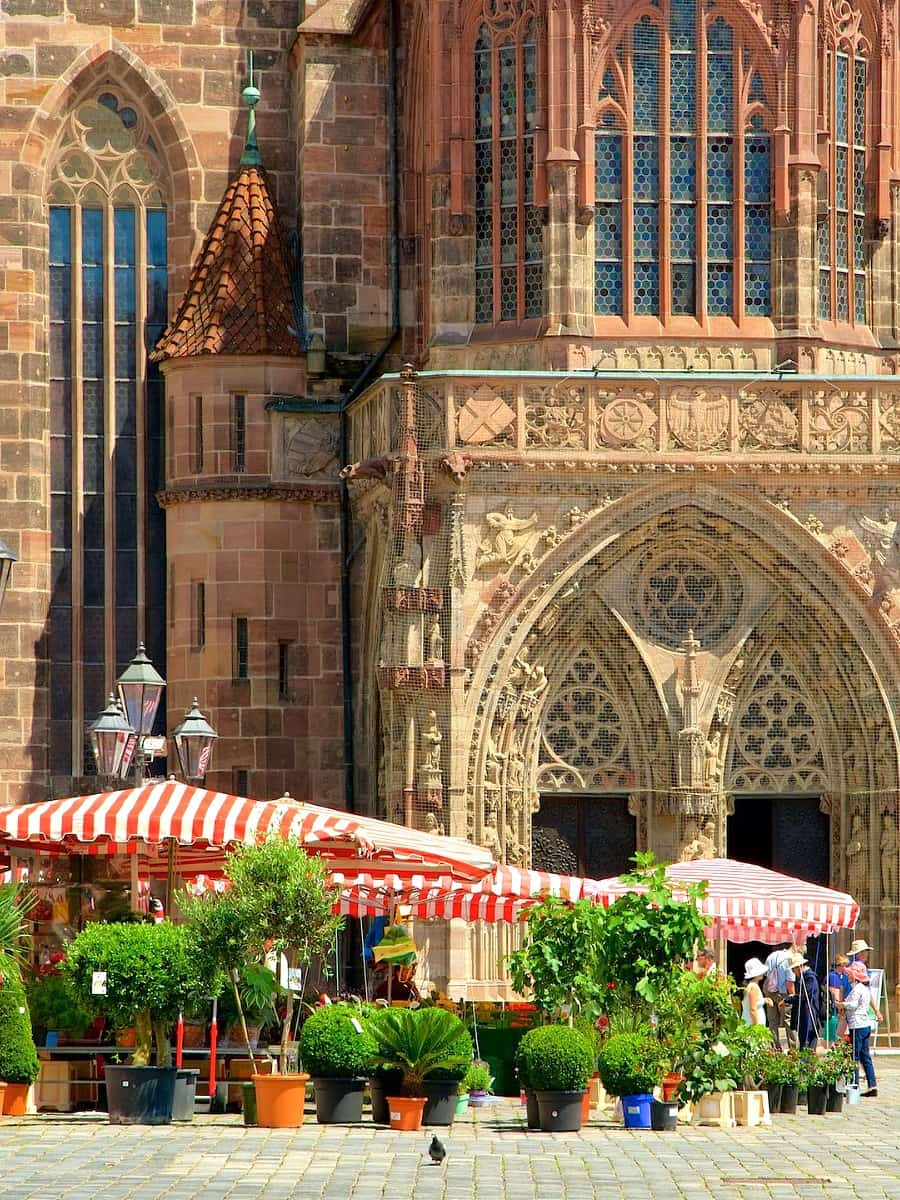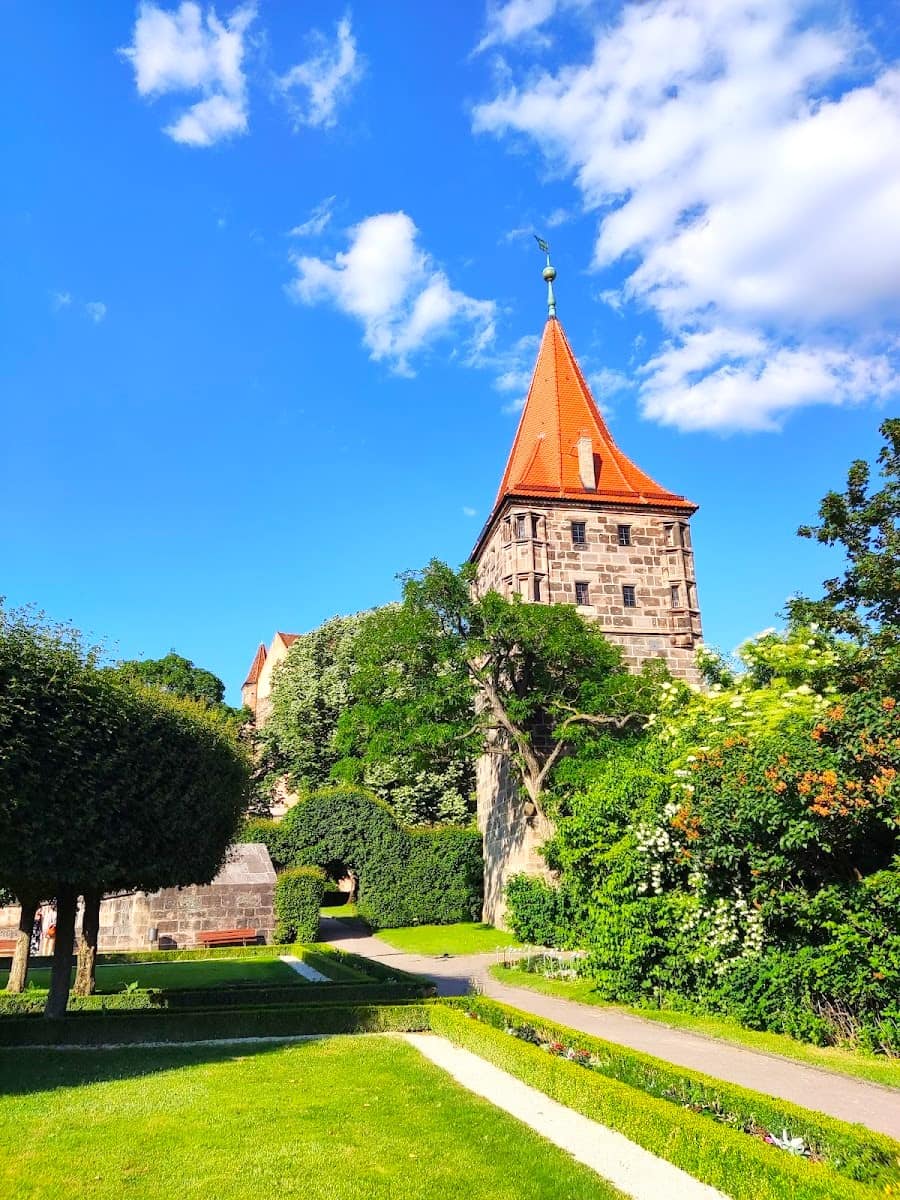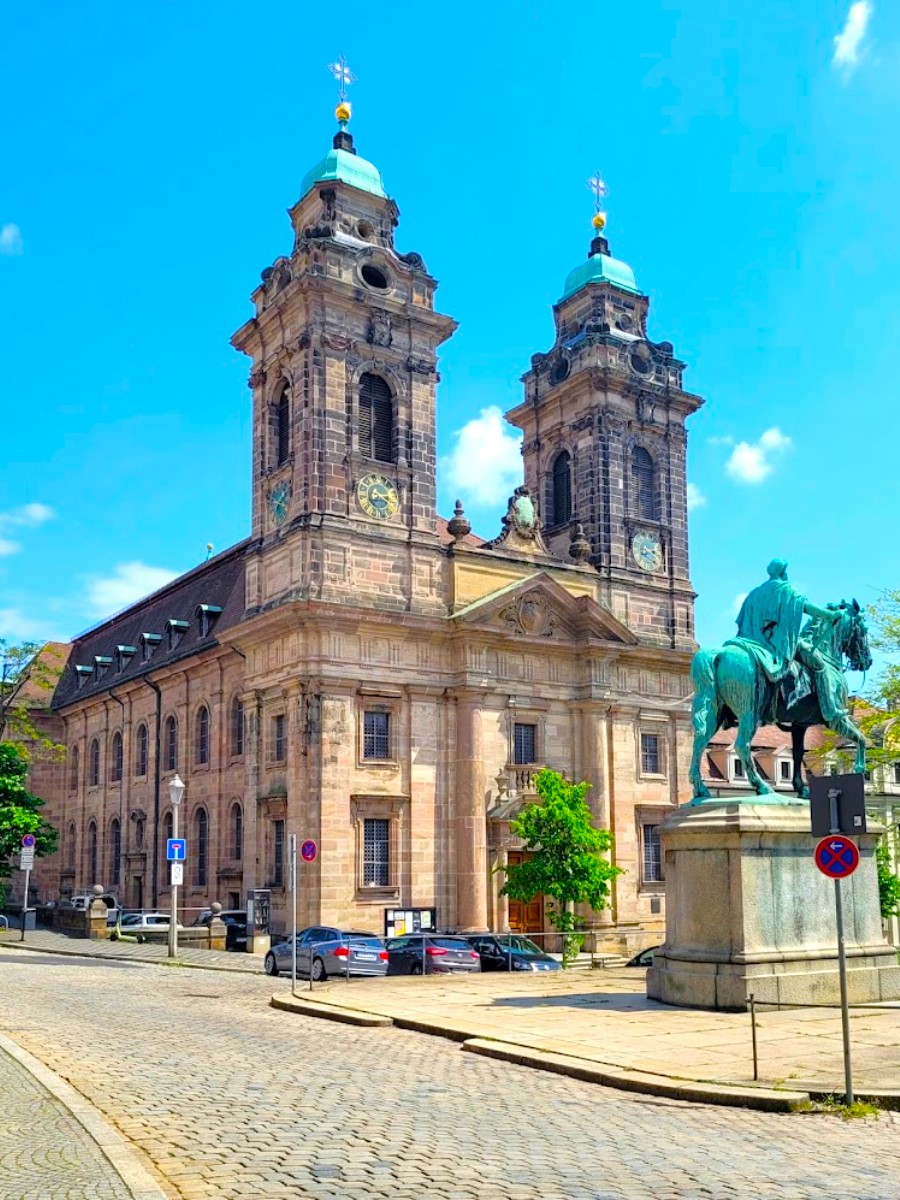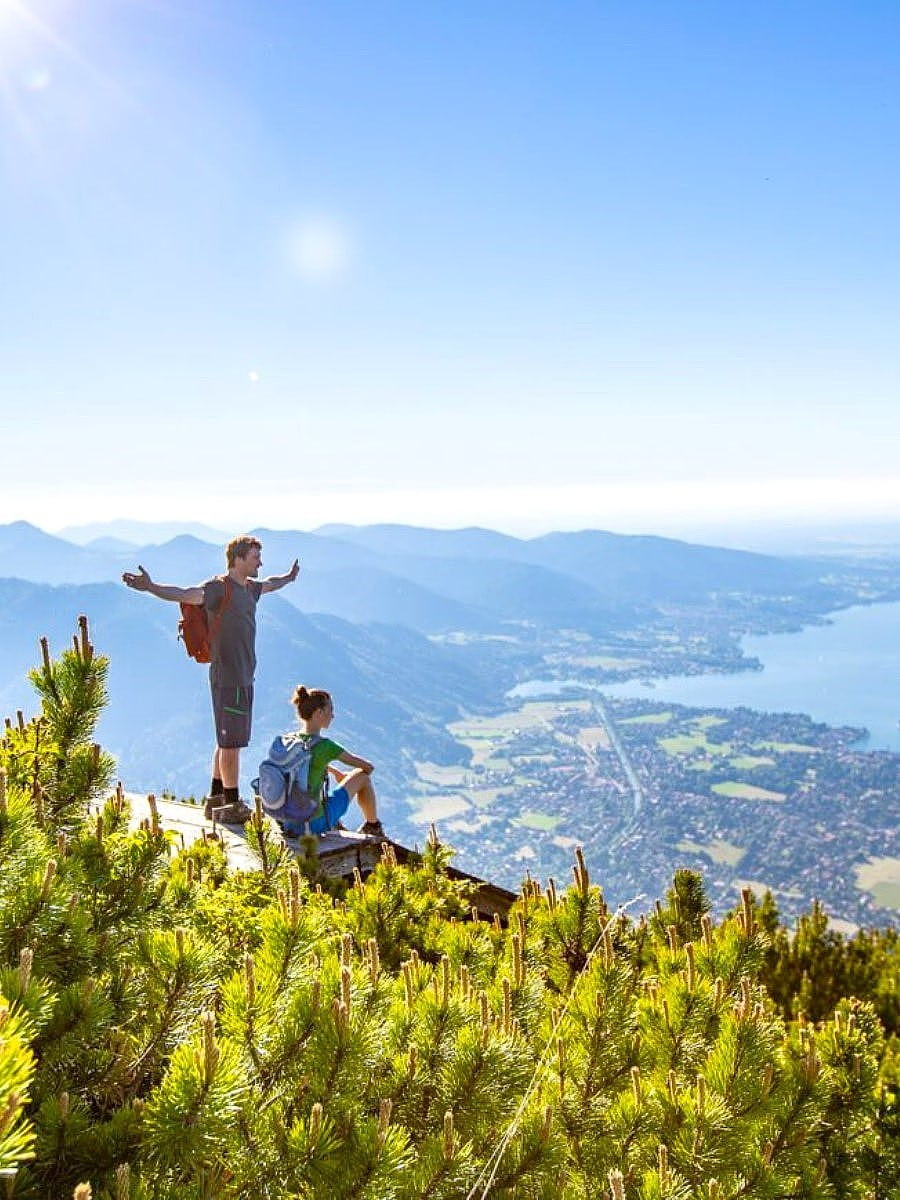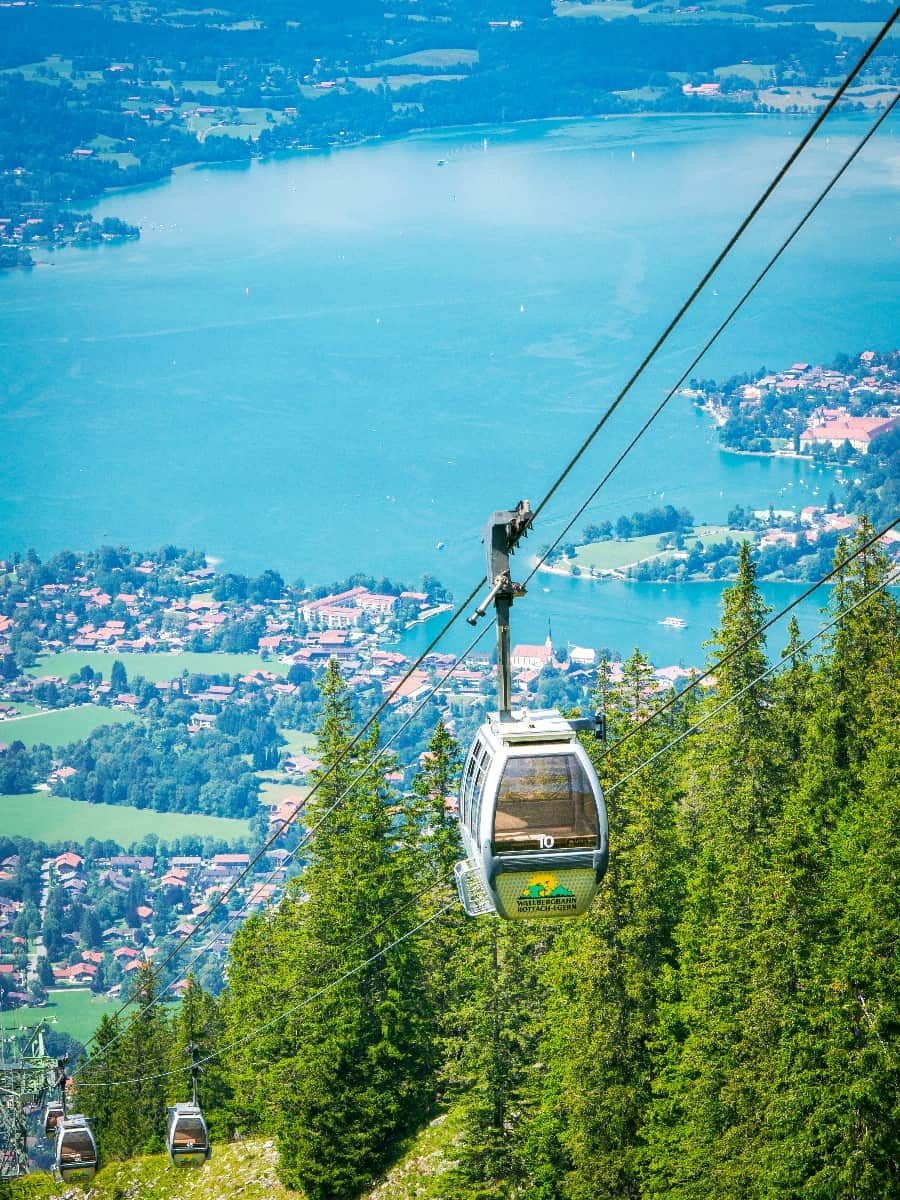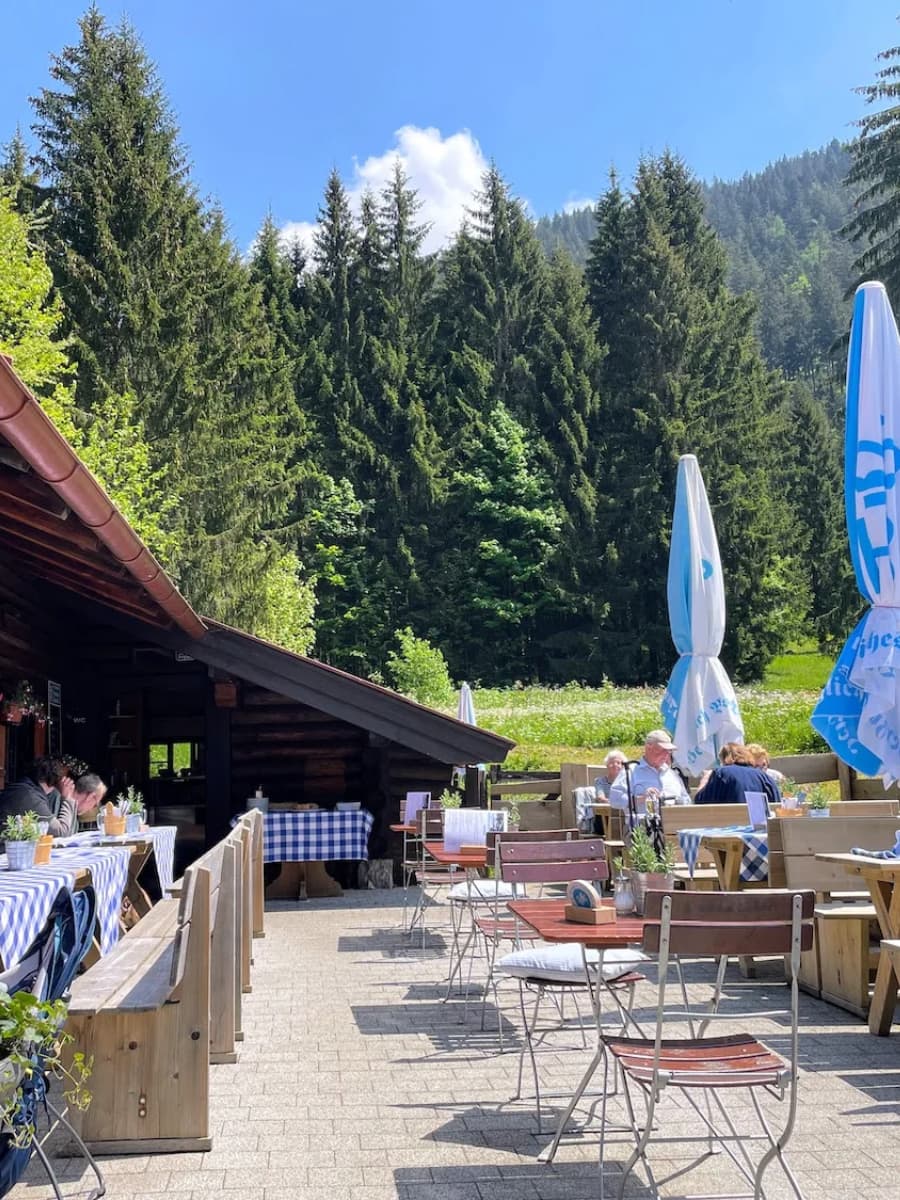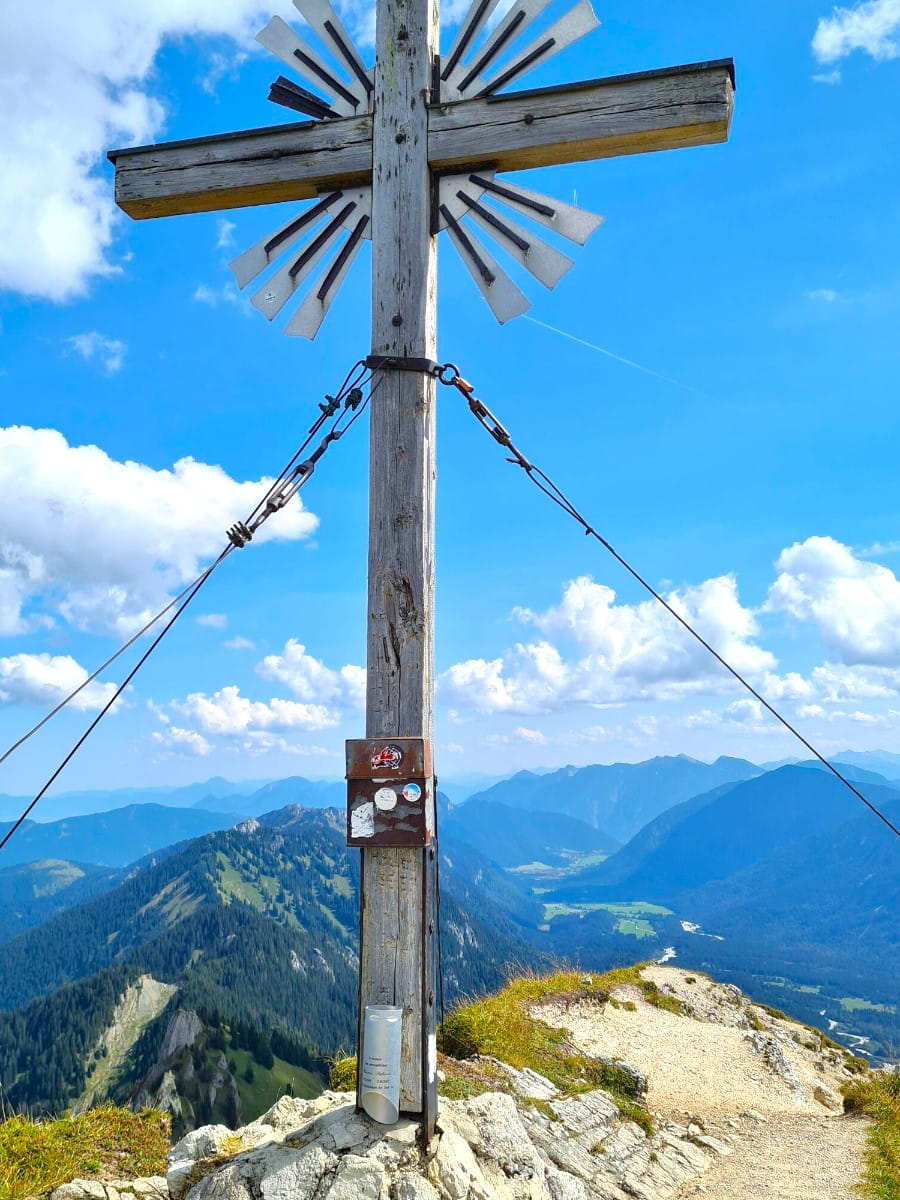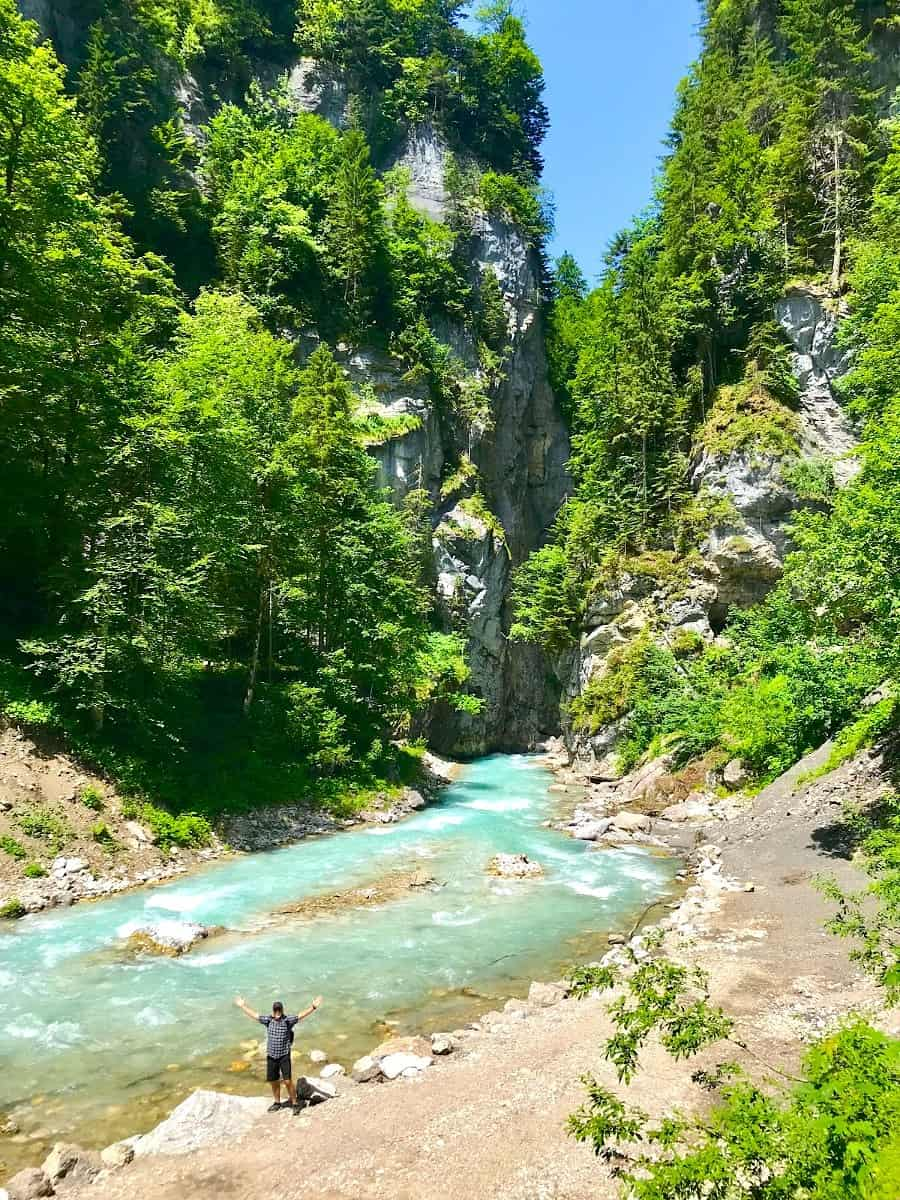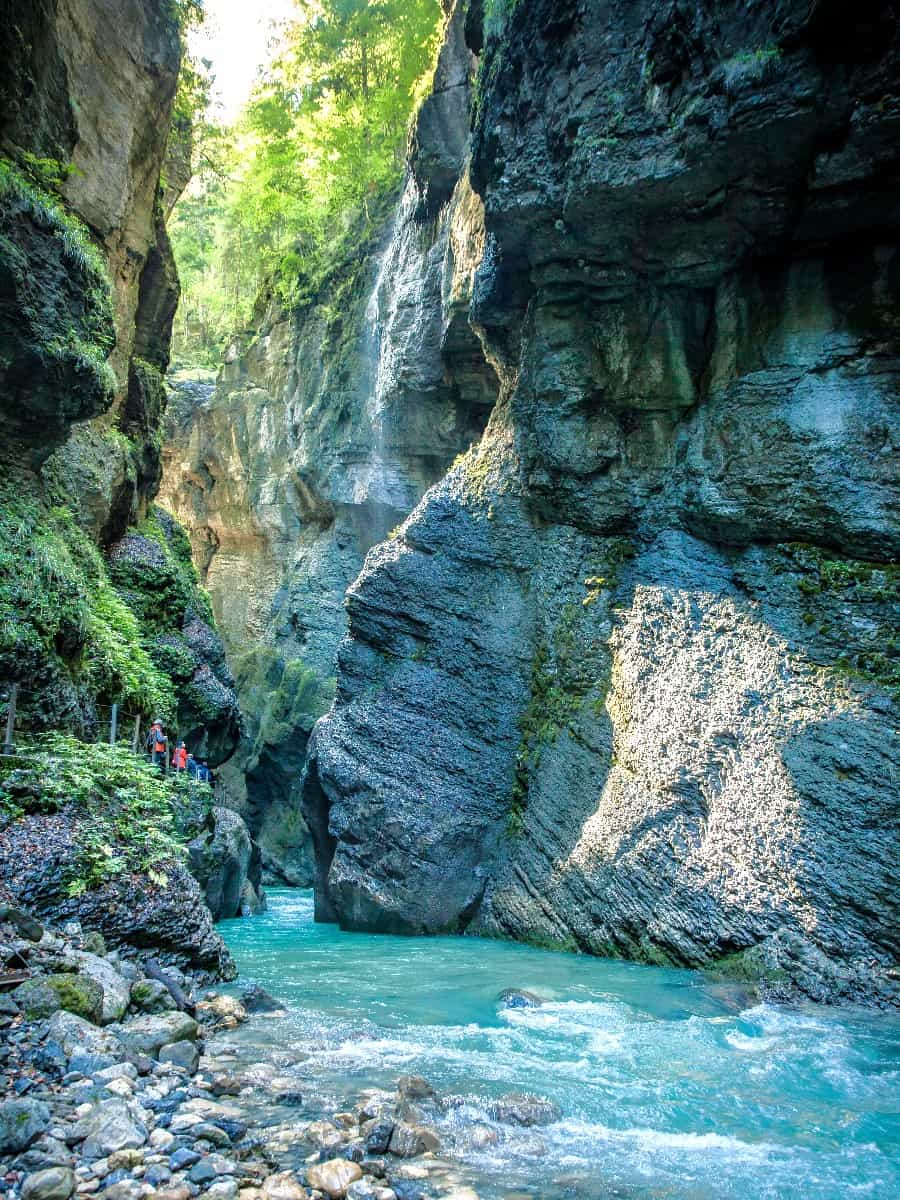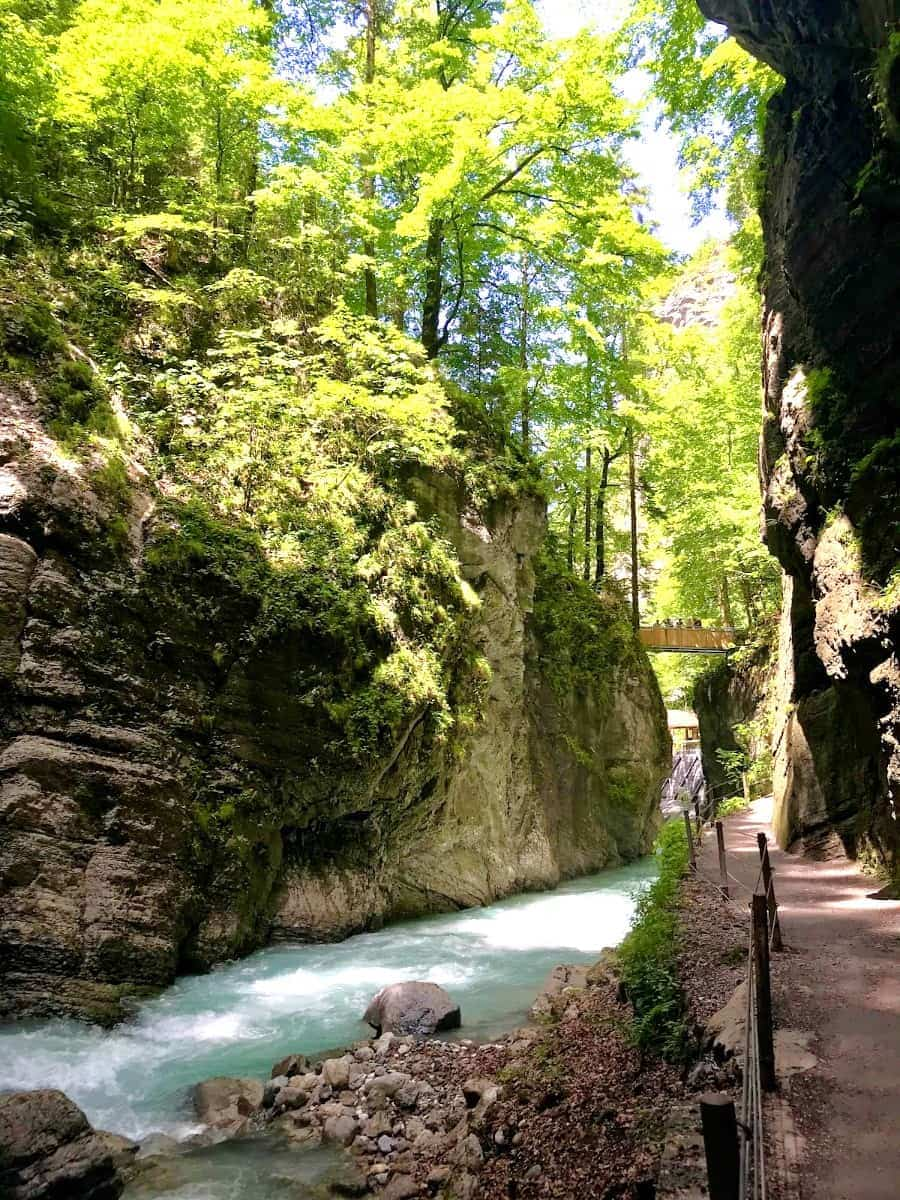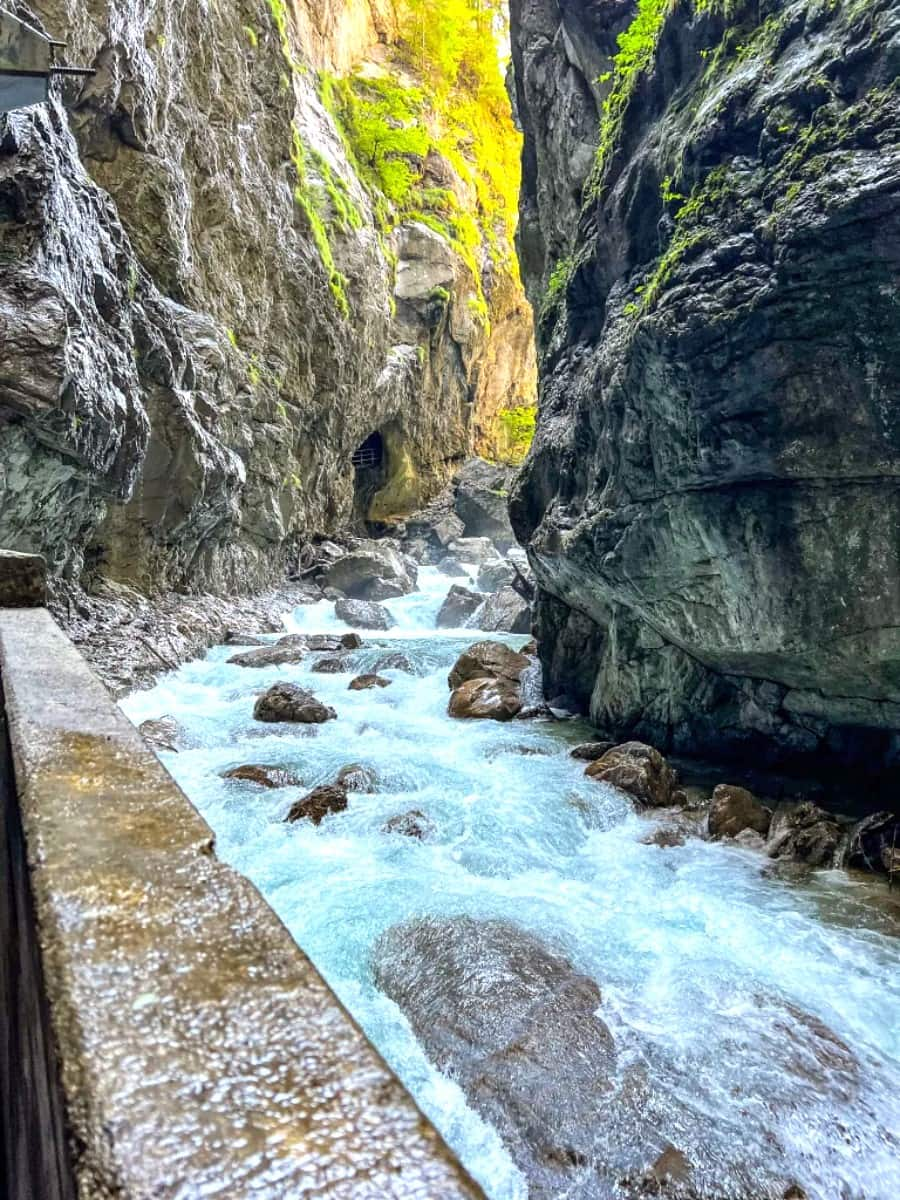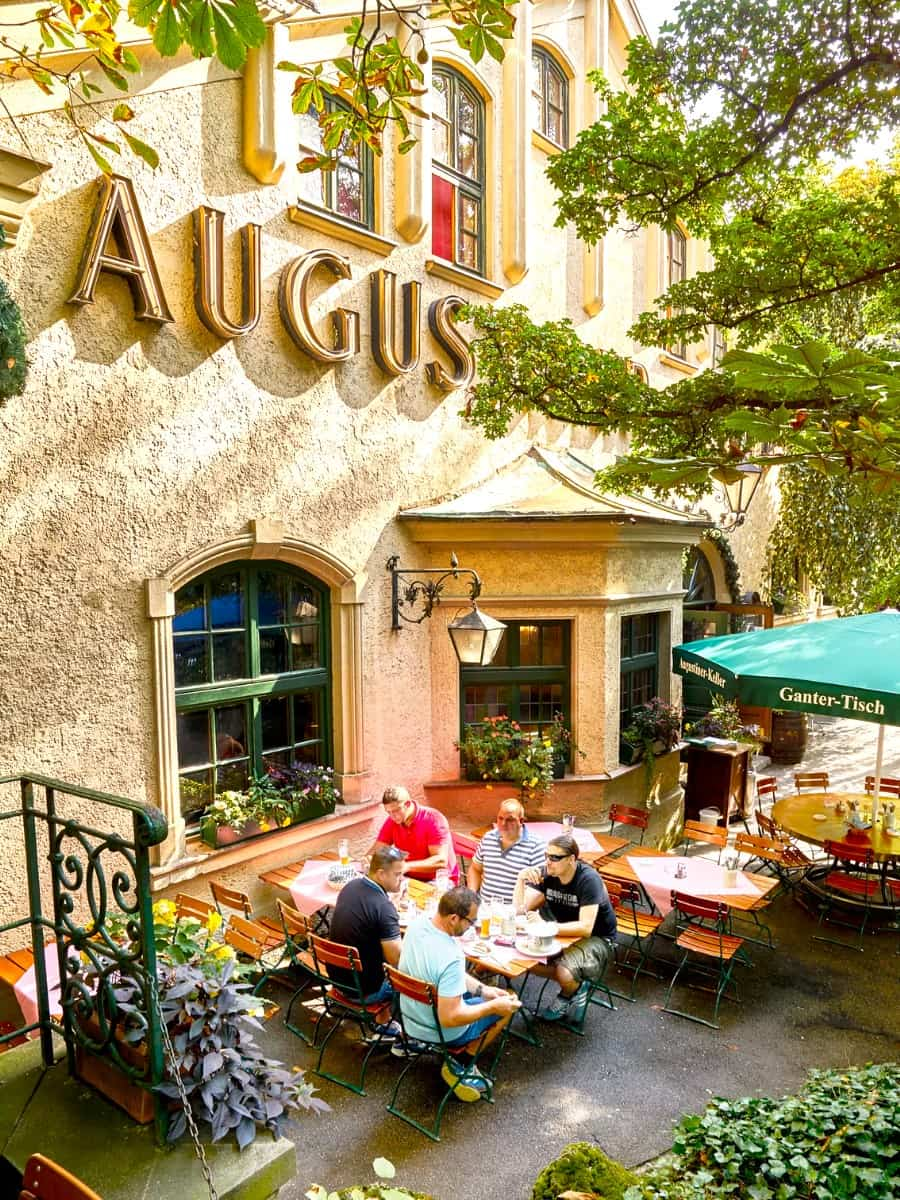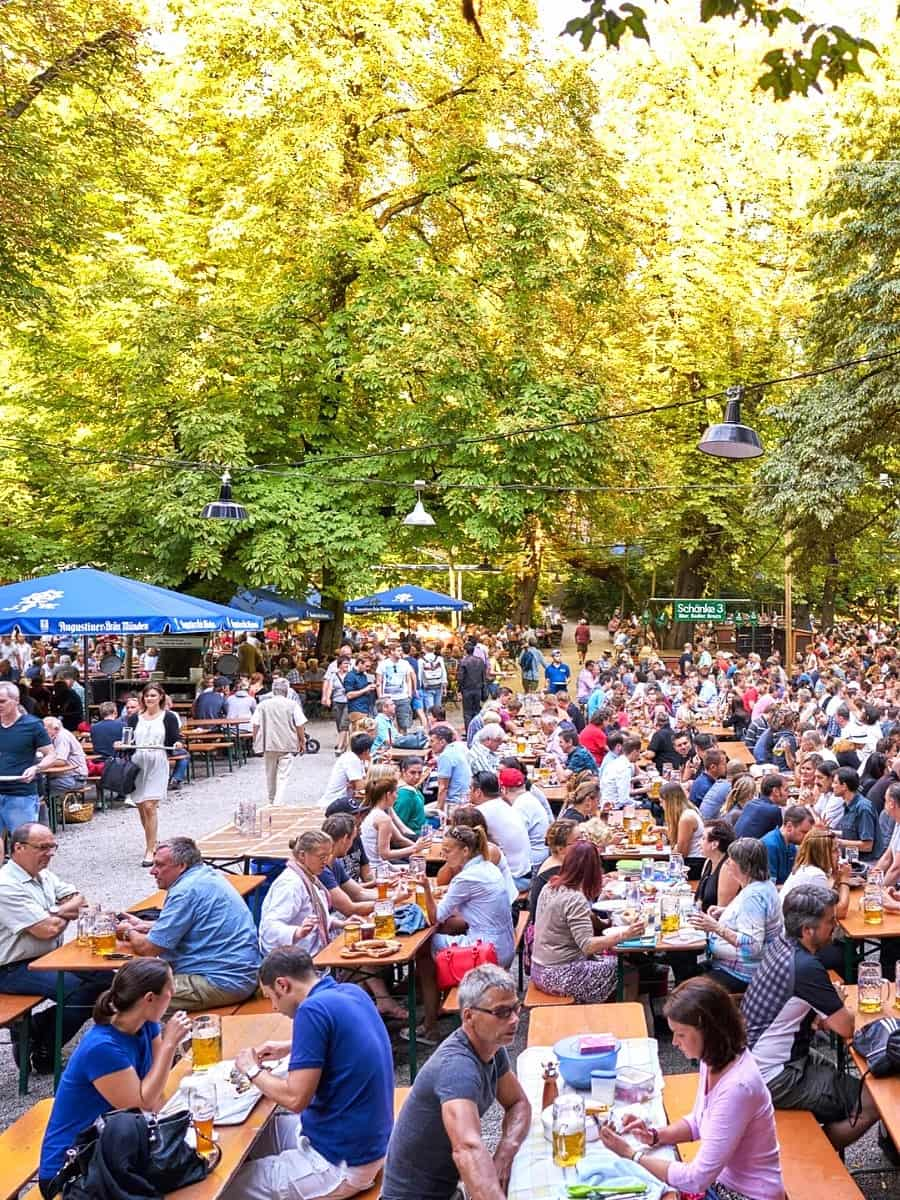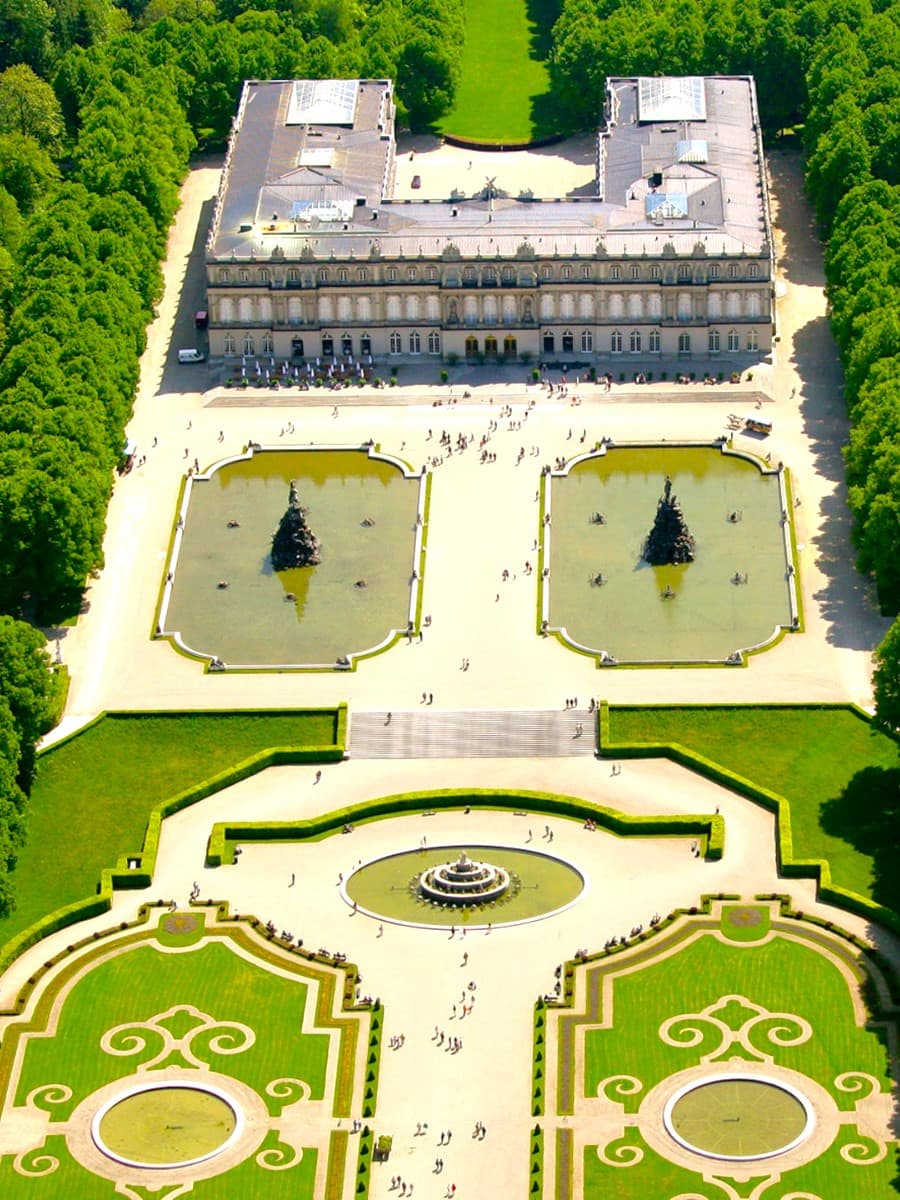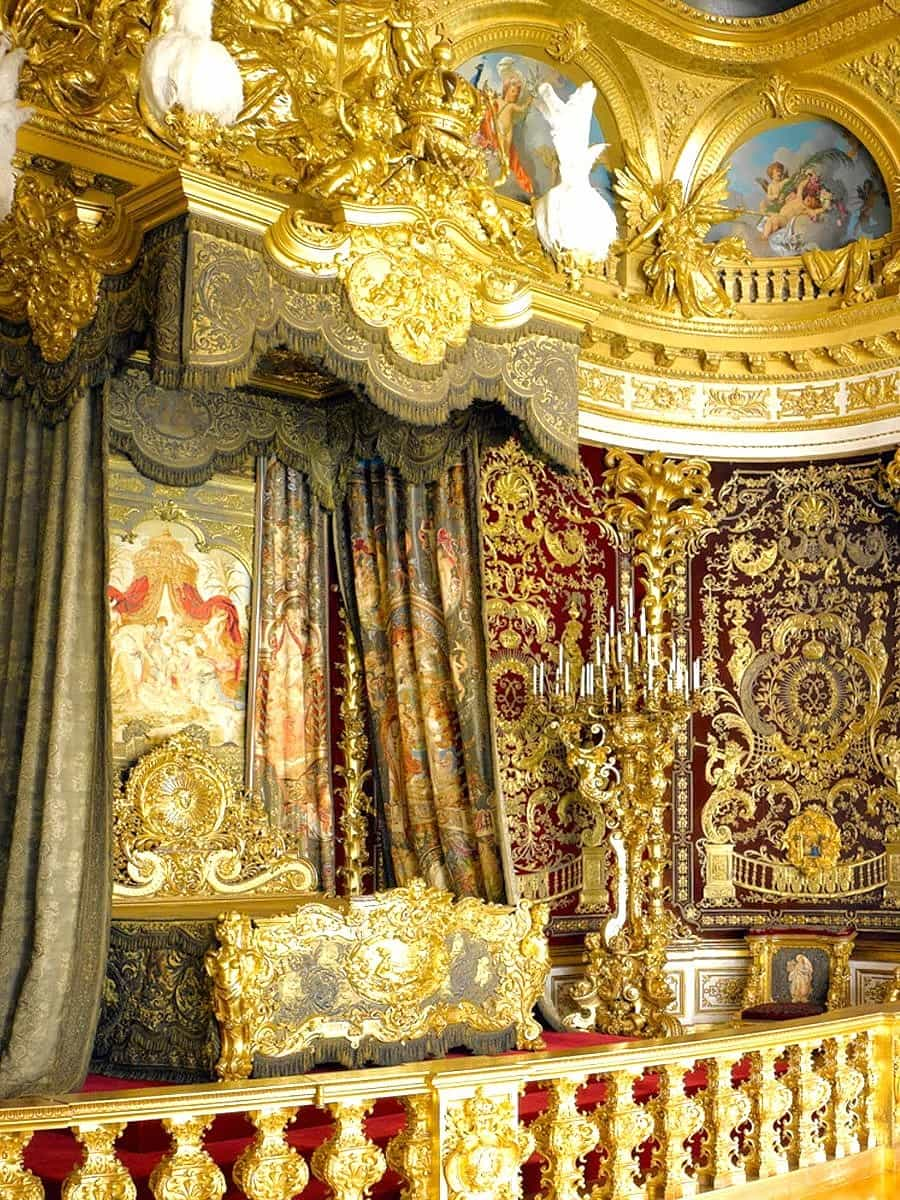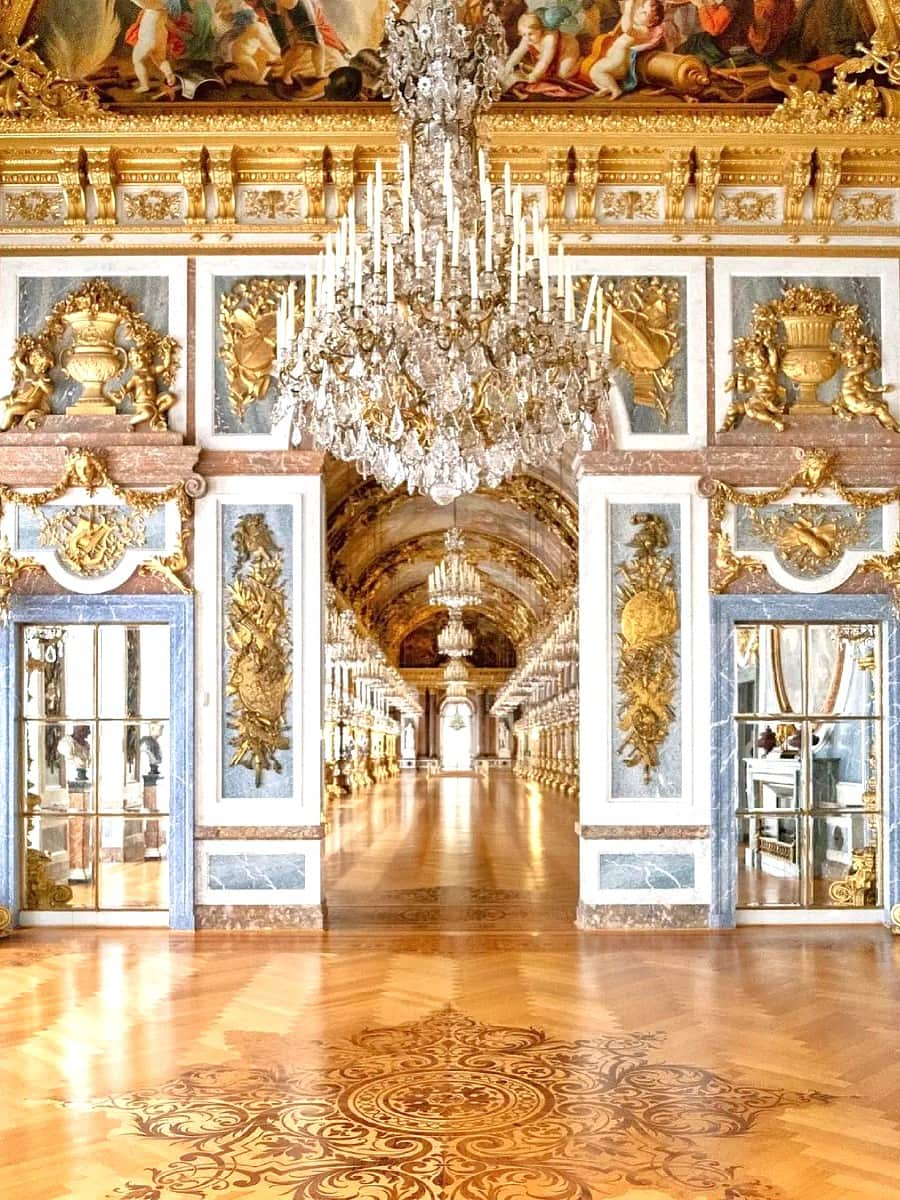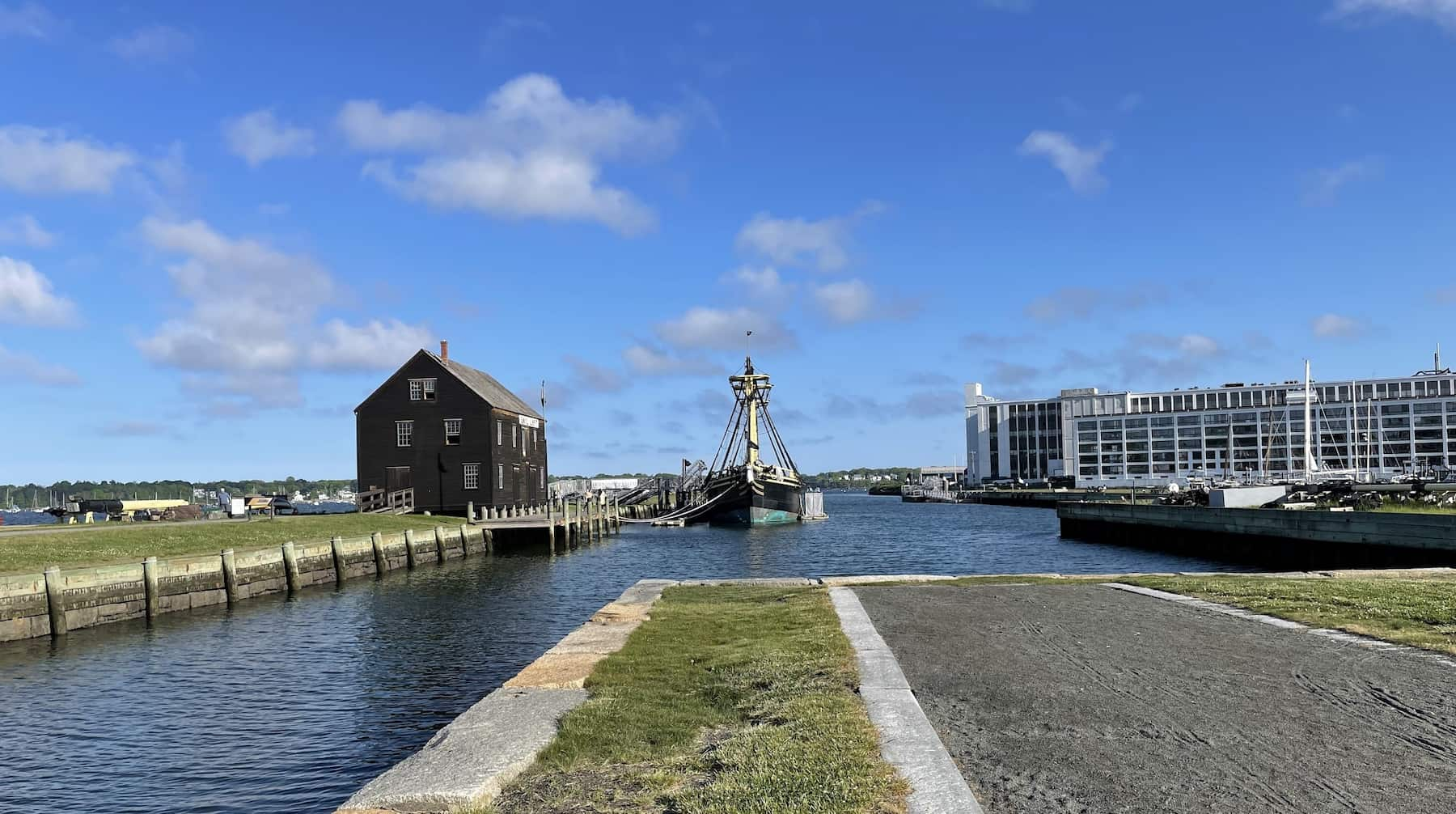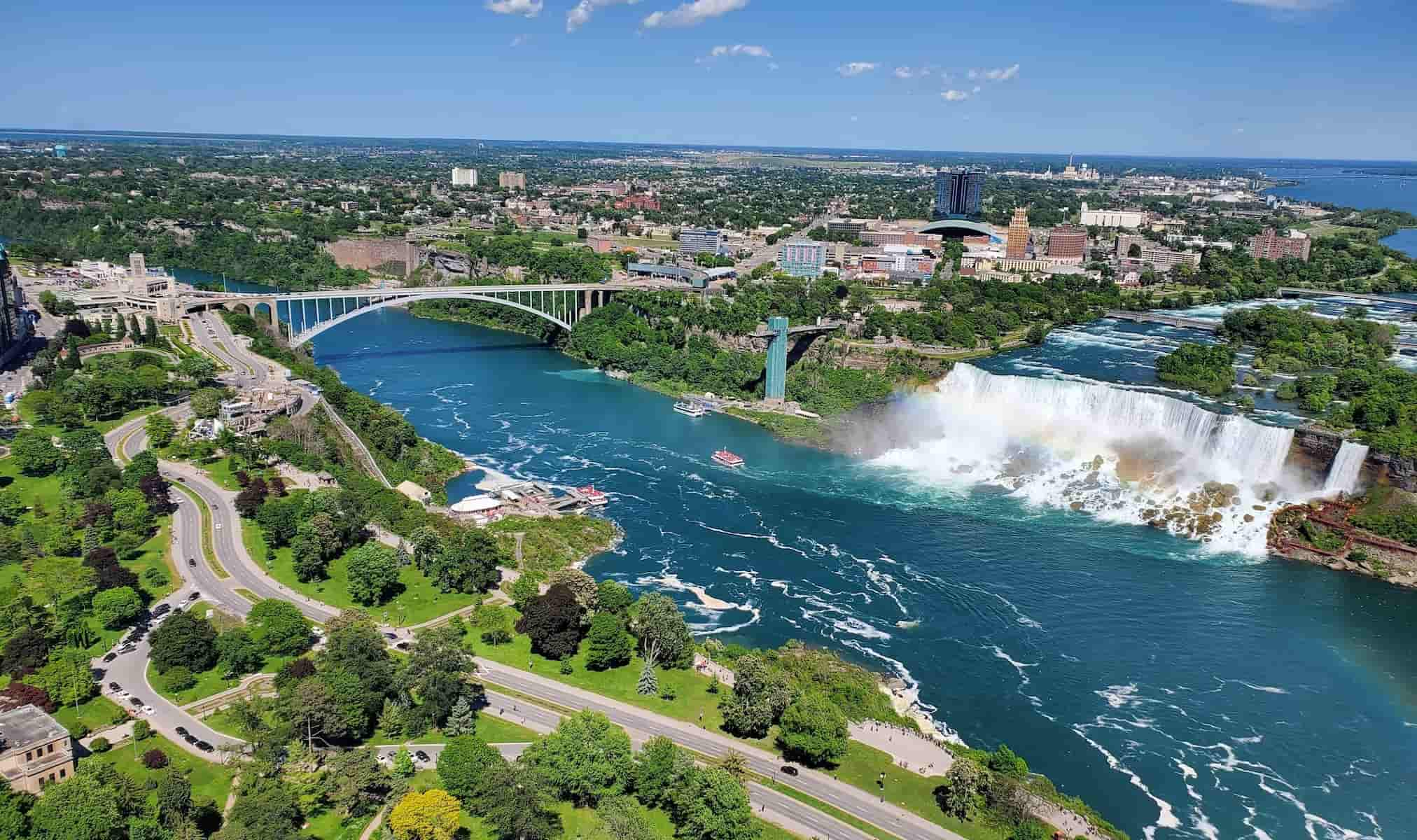Bavaria, the largest state in Germany, is a land of enchanting contrasts. From the bustling beer gardens of Munich to the tranquil beauty of the Alps, this region offers a rich tapestry of experiences for every traveler. Whether you’re drawn to historic castles, picturesque medieval towns, or breathtaking natural landscapes, Bavaria promises unforgettable adventures at every turn.
In this guide, we’ll explore 20 the best things to do in Bavaria, taking you from world-famous attractions like Neuschwanstein Castle to hidden gems off the beaten path. Get ready to immerse yourself in Bavarian culture, indulge in delicious local cuisine, and create memories that will last a lifetime. Let’s embark on a journey through one of Germany’s most captivating regions!
🏠 Best Hotels in Bavaria
- 💎 Luxury Hotel: Der Birkenhof Spa & Genuss Resort
- ✨ 5-Star: AMERON Neuschwanstein Alpsee Resort & Spa
- 🏨 4-Star: Renaissance Riessersee Hotel
- 🛏 3-Star: Hotel Post Mittenwald
- 💸 Cheap: Günzburg City Hotel
- 🏢 Apartament: Ferienwohnung Seibold
- 👨👩👧👦 For Families: Blockhaus Stamsried
- 🏩 For Couples: Sonnenhotel Weingut Römmert
💁 Best Guided Tours
- Royal Castles of Neuschwanstein and Linderhof Day Tour from € 79 (⭐ 4.7/5)
- Neuschwanstein Castle Bus Tour from Munich from € 69 (⭐ 4.8/5)
- Zugspitze Day Tour from Munich from € 68 (⭐ 4.9/5)
- Rothenburg ob der Tauber Private Walking Tour from € 249 (⭐ 5.0/5)
- Eagle's Nest Berchtesgaden Private Tour from € 189 (⭐ 5.0/5)
Best Things To Do in Bavaria
1. Neuschwanstein Castle (Schloss Neuschwanstein)
Fairytale Wonder. Perched dramatically above the Bavarian Alps, Neuschwanstein Castle captivated me with its dreamlike towers and turrets. This iconic castle inspired Walt Disney’s Sleeping Beauty Castle and draws over 1.5 million visitors annually. I recommend booking tickets online at least several days in advance to secure your preferred time slot.
Practical Tips. The castle is only accessible through guided tours costing €18 for adults (about $20) plus a €2.50 booking fee. Tours last approximately 30-40 minutes and run from 9am-6pm (March-October) and 10am-4pm (October-March). The castle is open daily except January 1 and December 24-25.
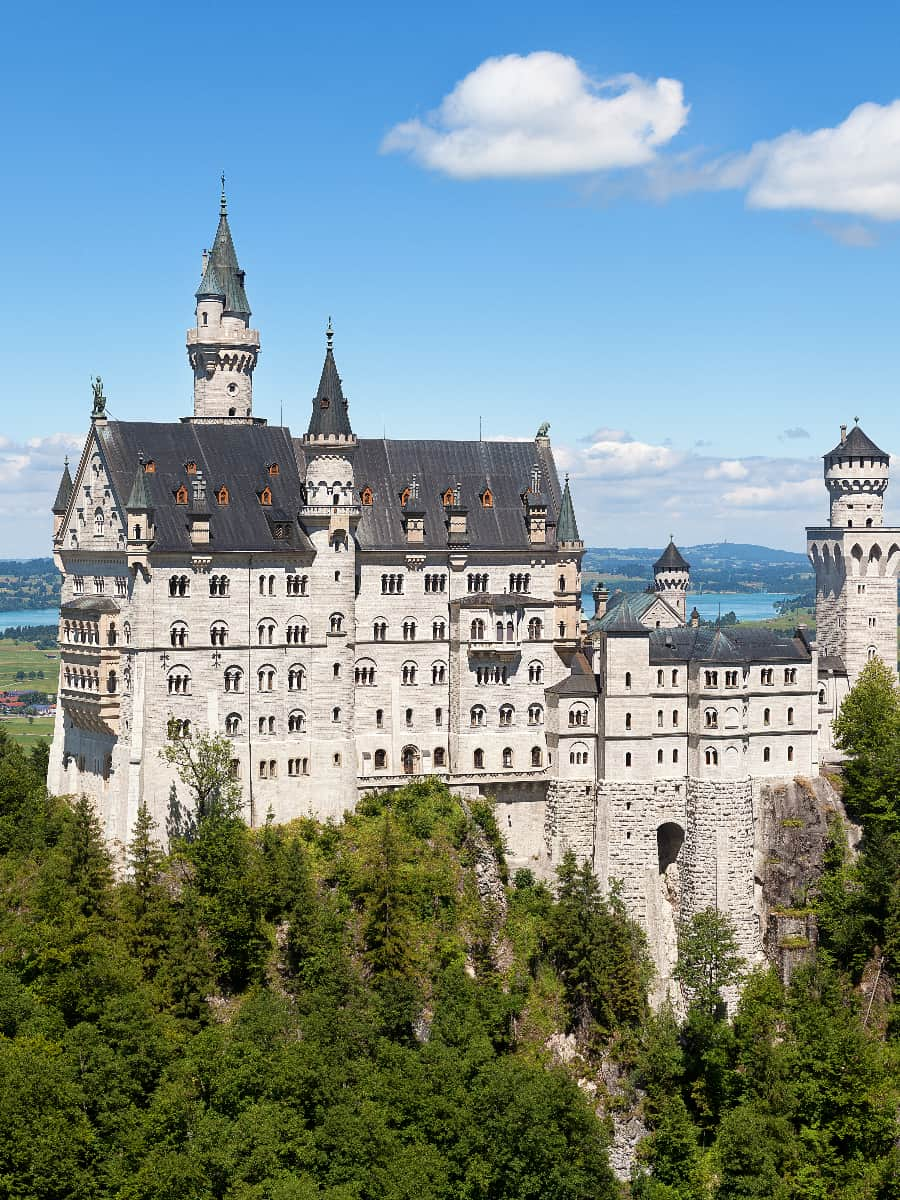

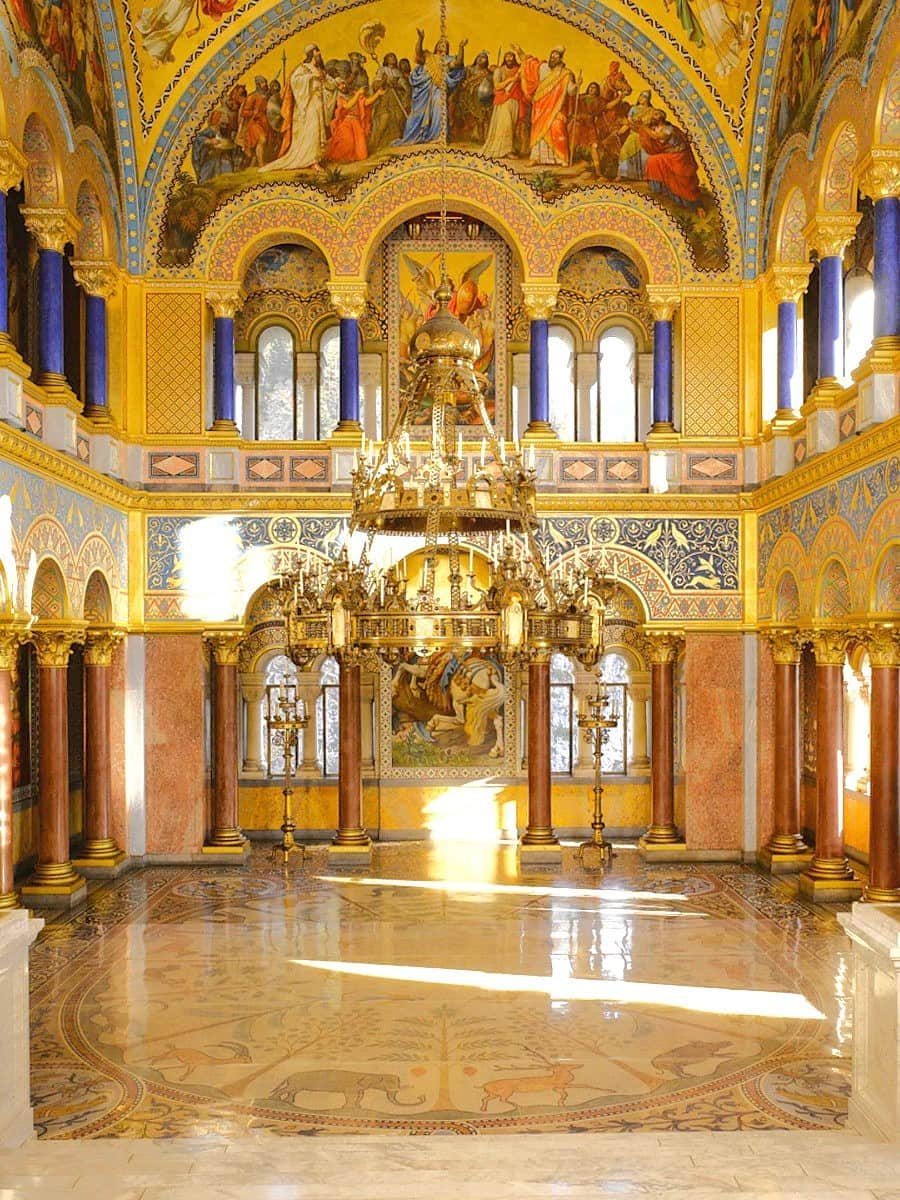
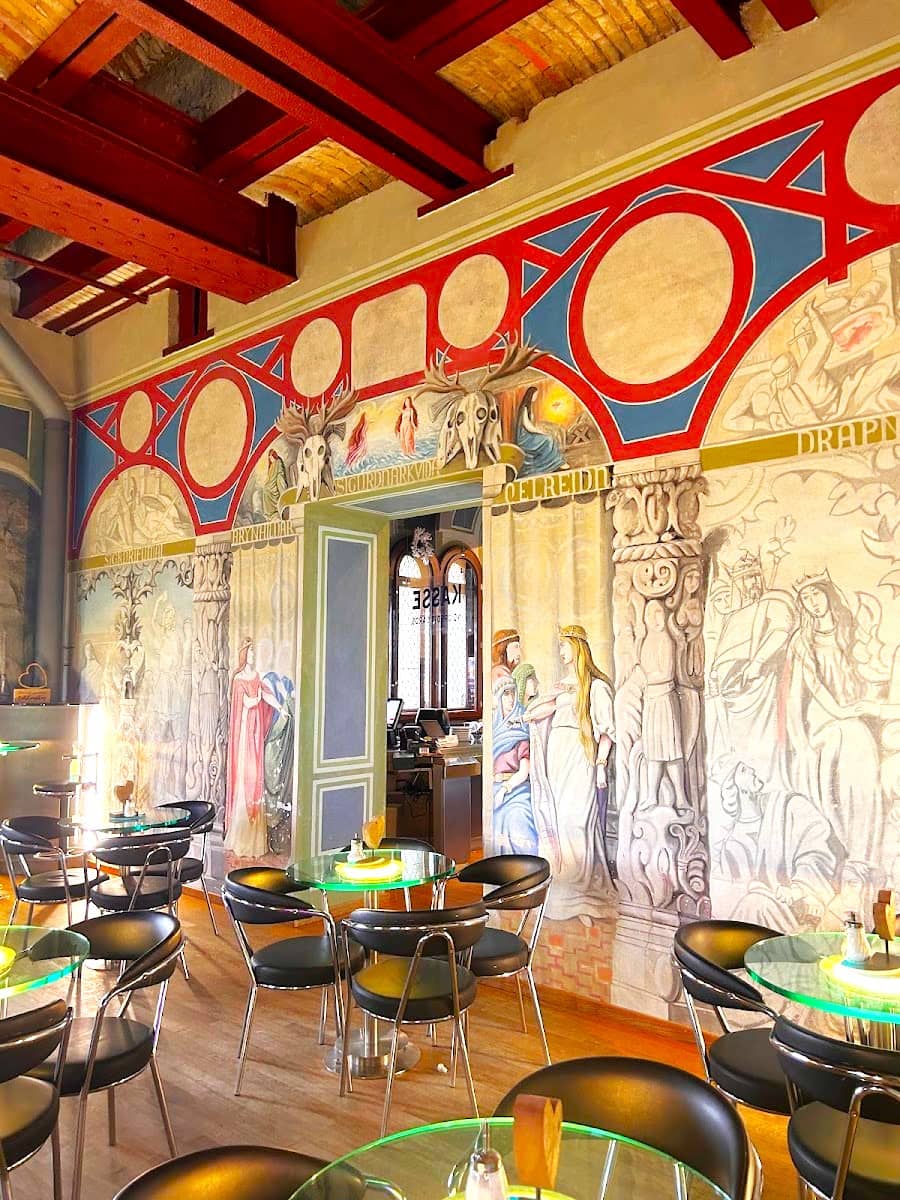
Winter Magic. Visiting in winter offers a magical experience with fewer crowds and snow-dusted towers. I found the Marienbrücke bridge viewpoint particularly stunning when covered in snow, though it occasionally closes during harsh weather conditions.
Beyond the Castle. Don’t miss the nearby Hohenschwangau Castle where King Ludwig II grew up. Consider purchasing a Kings-Ticket (€43.50) for entry to both castles or the Swan-Ticket (€56) which includes the Museum of the Bavarian Kings. The 200 stairs inside Neuschwanstein require good mobility, so plan accordingly!
Local Experience. After touring the castle, I enjoyed a traditional Bavian lunch at one of the charming restaurants in nearby Hohenschwangau village. The Wieskirche (Pilgrimage Church) is also worth visiting on your way to or from the castle.
⭐ Best Activities
- Tour: Royal Castles of Neuschwanstein and Linderhof Day Tour: Experience Bavaria’s most iconic royal castles on this full-day tour from Munich. Visit King Ludwig II’s fairytale castle, explore the opulent Linderhof Palace, and enjoy a brief stop at the charming village of Oberammergau.
- Tour: Neuschwanstein Castle BUS TOUR from Munich: Discover the magical Neuschwanstein on this convenient bus tour departing from central Munich.
- Tour + Ticket Online: Neuschwanstein Castle & Hohenschwangau Castle Entry Tickets: Immerse yourself in Bavarian royal history with this combination ticket to two of the most iconic castles.
| Attraction | Description | Key Features |
|---|---|---|
| Neuschwanstein Castle | Iconic fairytale castle perched on a hilltop in the Alps | Stunning architecture inspired by Walt Disney, bavaria travel guided tours of opulent interiors, Perfect views of the surrounding landscape |
2. Marienplatz in Munich
Historic Heart. Standing in Munich’s central square, Marienplatz, I was immediately surrounded by centuries of Bavarian history. Dating back to 1158, this vibrant square serves as the city’s living room and transportation hub. The ornate Neo-Gothic New Town Hall dominates the northern side with its impressive façade.
Glockenspiel Magic. Don’t miss the famous Glockenspiel performance at the New Town Hall! I watched in awe as the life-sized figures performed their charming dance at 11am and noon (with an additional 5pm show from March to October). The best part? This spectacular show is completely free to enjoy.
Beyond the Square. From Marienplatz, I easily explored Munich’s treasures on foot. The Frauenkirche with its distinctive onion domes, the bustling Viktualienmarkt food market, and the historic Hofbräuhaus beer hall are all within walking distance. The square serves as the perfect starting point for exploring Munich’s pedestrian shopping zone along Kaufingerstrasse.
Seasonal Delights. I found Marienplatz especially magical during the Christmas market season (late November to December 24th), when wooden stalls sell traditional crafts and mulled wine. In summer, the outdoor cafés offer perfect people-watching spots in Bavaria while enjoying a pretzel and local beer.
Budget-Friendly Tip. While Munich has a reputation as the most expensive city of Germany, many activities around Marienplatz are completely free! I enjoyed visiting the Frauenkirche, people-watching at the Fischbrunnen fountain, and exploring the surrounding historic streets without spending a euro.
⭐ Best Tours
- Munich Old Town Walking Tour: Explore the historic heart of Bavaria’s capital on this informative walking tour. Discover Munich’s rich history and culture as you visit landmarks like the Glockenspiel, Frauenkirche, and the famous Hofbräuhaus beer hall. Perfect for first-time visitors wanting to get oriented in the city.
- Munich WWII Combo: Dachau Concentration Camp and Third Reich Walking Tour: Gain deep insights into WWII history with this comprehensive combo tour.
| Attraction | Description | Key Features |
|---|---|---|
| Marienplatz, Munich | Historic central square in Munich’s heart | Gothic architecture, famous Glockenspiel clock tower performances, vibrant atmosphere with street entertainment, seasonal markets |
3. Zugspitze Mountain
Alpine Wonder. Standing atop the highest peak in Germany (2,962 meters) left me breathless – both from the thin air and the spectacular 360° panorama spanning four countries. The Zugspitze experience combines thrilling transportation options with jaw-dropping Alpine scenery that changes dramatically with each season.
Getting There. I took the cogwheel train from Garmisch-Partenkirchen to the Zugspitzplatt station (€63.50 round-trip, about $70), then the glacier cable car to the summit. Alternatively, the Eibsee Cable Car whisks visitors directly from Eibsee lake to the peak in just 10 minutes – a heart-stopping ride I highly recommend for the views alone.
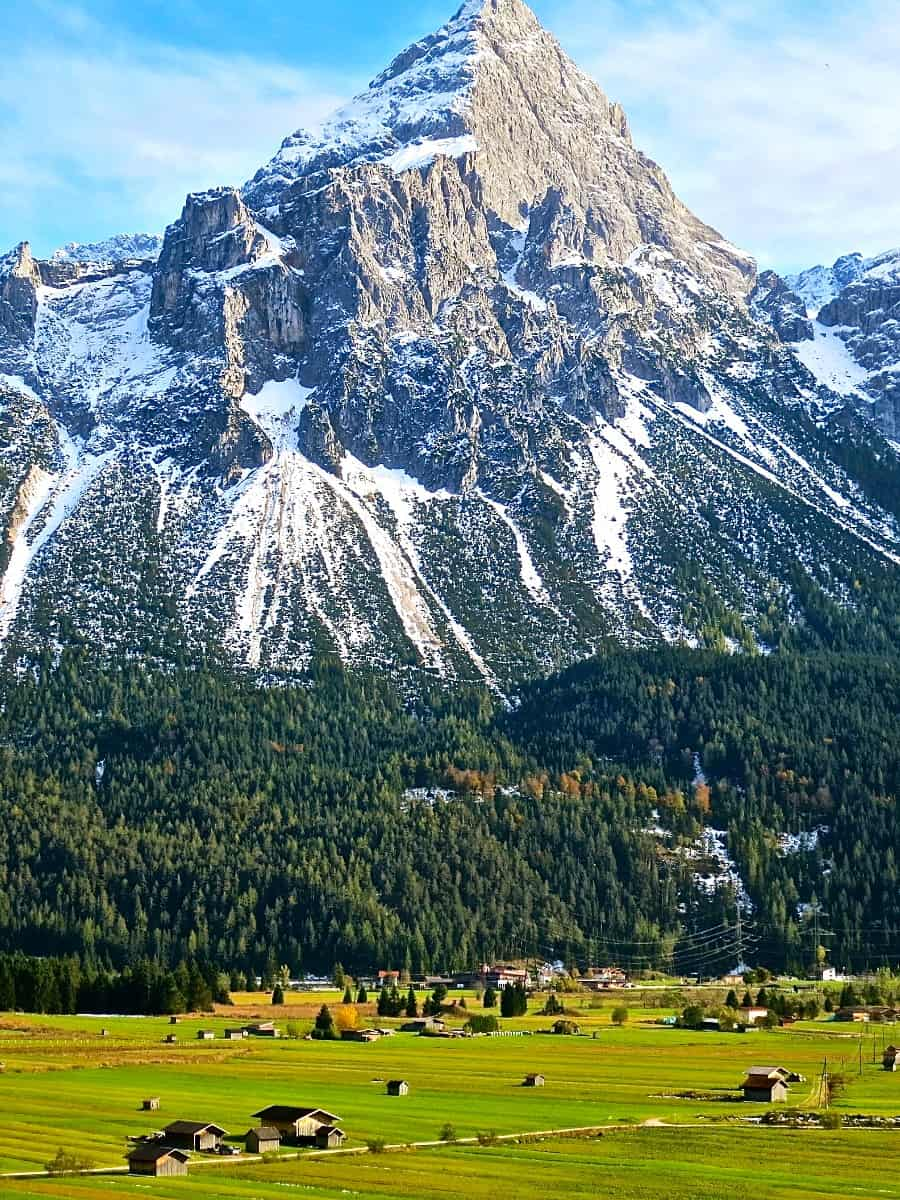
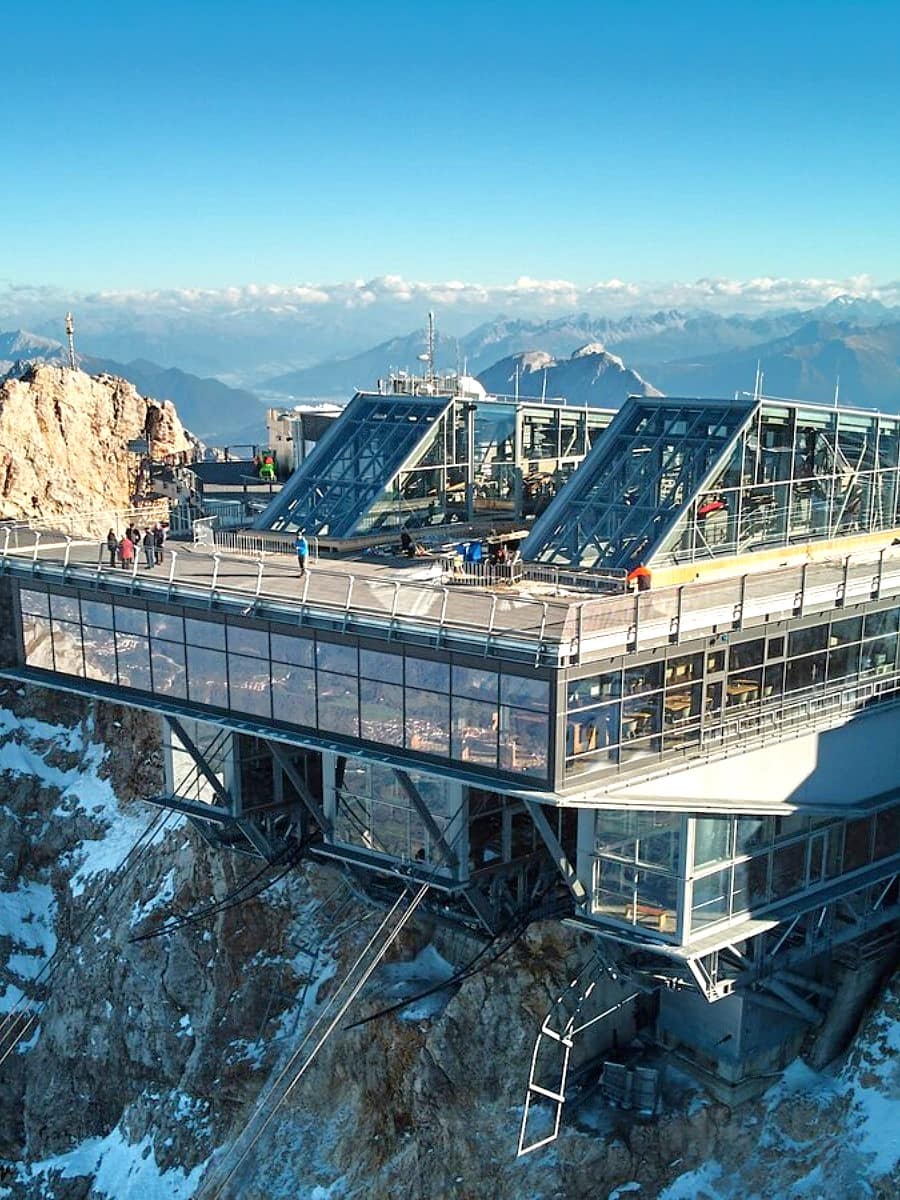
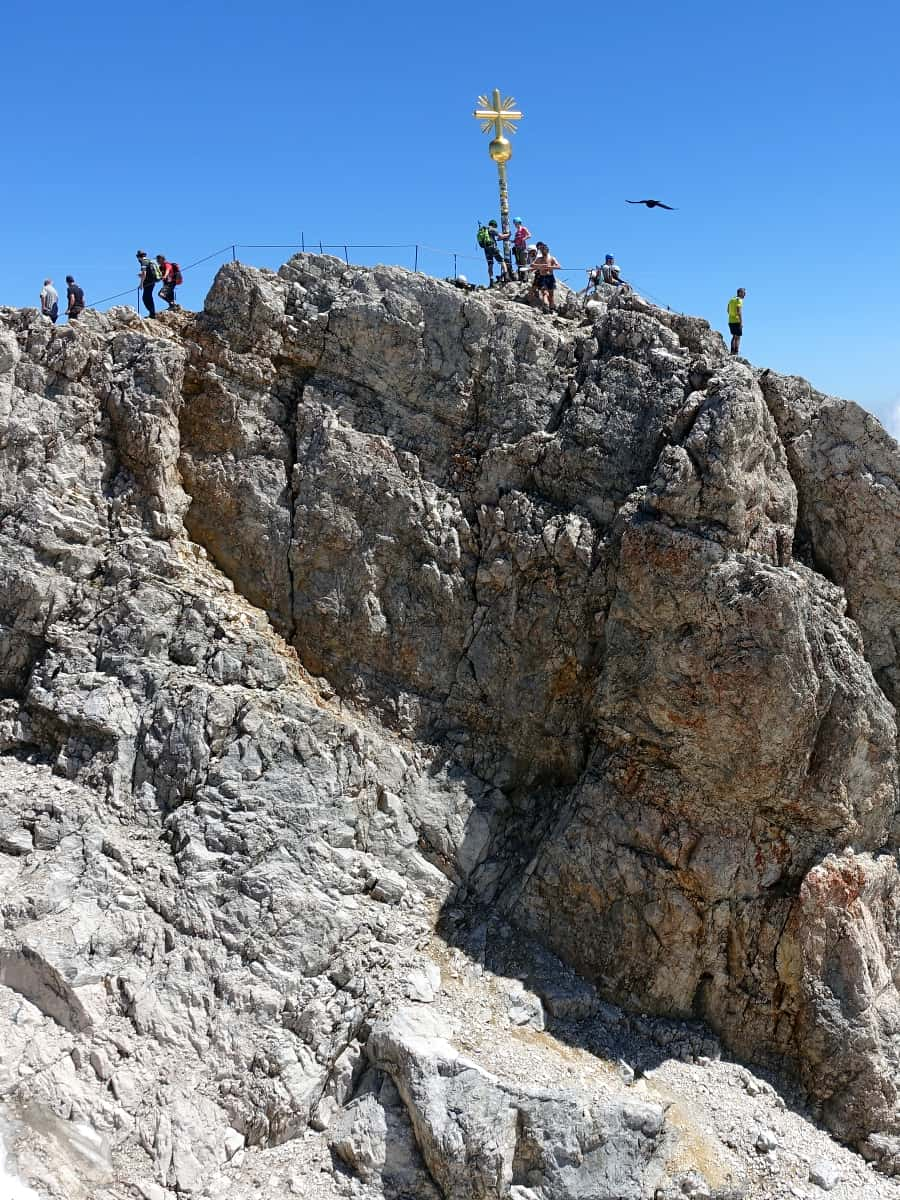
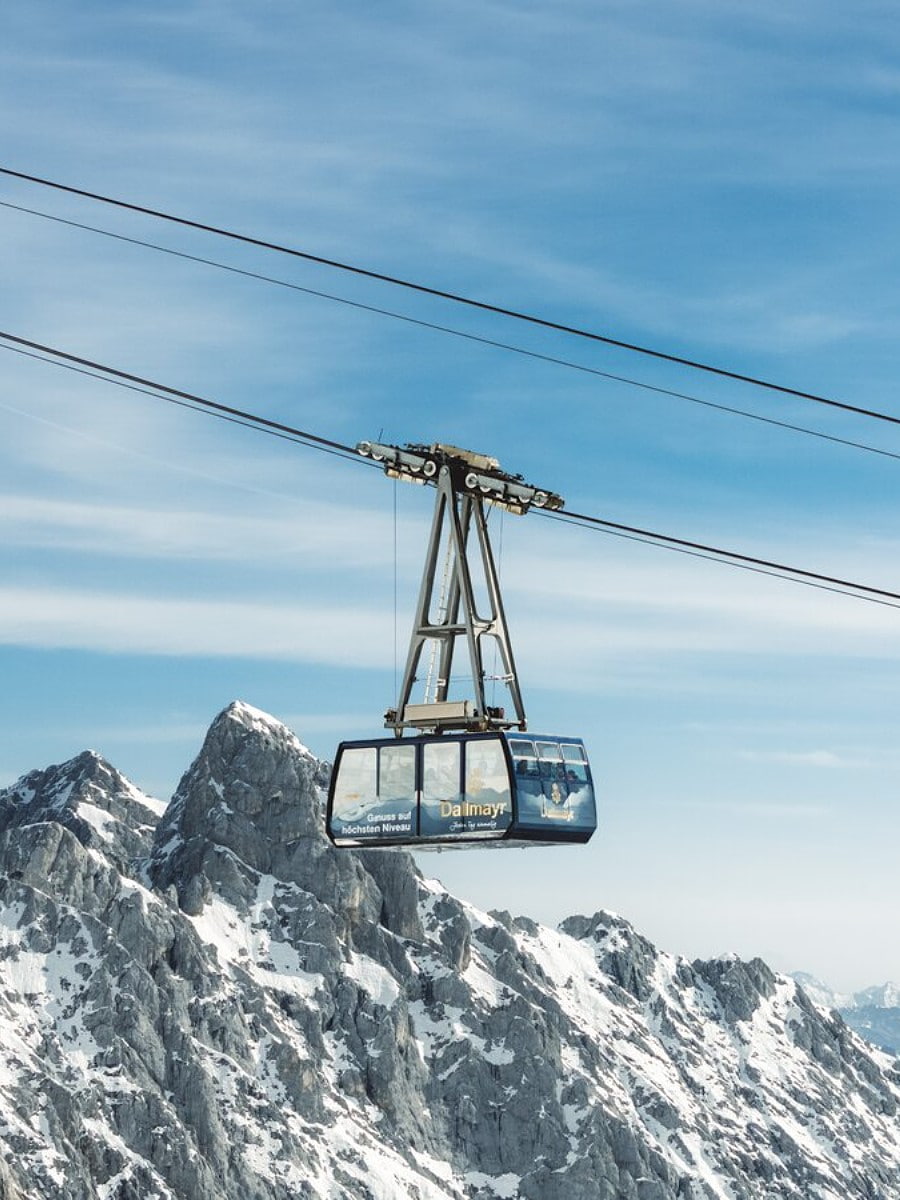
Year-Round Activities. Winter transforms Zugspitze into a skier’s paradise with 20km of slopes in Germany’s highest ski resort. In summer, I hiked along well-marked trails through alpine meadows dotted with wildflowers. The Zugspitze glacier offers skiing even in July – a unique Bavarian experience!
Must-See Viewpoints:
- The golden summit cross with views toward Austria
- The “Gallery of Zugspitze” exhibition about the mountain’s history
- The Zugspitzplatt glacier viewing platform
- The Austria-Germany border marker at the summit
- The crystal-clear view of Eibsee lake from above
Weather Wisdom. Check the weather forecast before visiting, as clouds can obscure the views. I recommend arriving early (before 10am) to beat both crowds and afternoon clouds. The temperature at the summit is typically 10°C cooler than in the valley, so dress in layers even in summer.
⭐ Best Tours
- Zugspitze Day Tour from Munich: Journey to the highest peak on this scenic day trip from Munich. Ride the cogwheel train and cable car to the summit of Zugspitze for breathtaking Alpine panoramas across four countries.
- Small-Group Munich town Tour with optional traditional Breakfast: Experience Munich’s charming town in a more intimate setting with this small-group walking tour. Learn about Bavarian history and culture as you explore key landmarks, with an option to begin your day with a traditional German breakfast for an authentic local experience.
| Attraction | Description | Key Features |
|---|---|---|
| Zugspitze Mountain | Germany’s peak (2,962m) | Skiing and hiking opportunities, cable car and cogwheel train access |
4. Königssee Lake
Emerald Jewel. Gliding across the crystal-clear waters of Königssee on an electric boat, I was mesmerized by the fjord-like landscape. Nestled in National Park, this pristine Alpine lake is surrounded by towering mountains that create perfect natural acoustics.
Echo Experience. The boat captain paused midway to demonstrate the famous Königssee echo by playing a trumpet toward the sheer rock walls. The sound bounced back with remarkable clarity – a tradition dating back centuries that still delights visitors today. This natural phenomenon alone was worth the €22 round-trip boat fare (approximately $24).
St. Bartholomä Charm. I disembarked at the iconic red-domed St. Bartholomä Church, a 12th-century pilgrimage church set against dramatic mountain backdrops. The small settlement offers traditional Bavarian food – I recommend trying the smoked trout caught fresh from the lake at the lakeside restaurant.
Hiking Options. From the second boat stop (Salet), I took a 30-minute walk to the smaller but equally beautiful Obersee lake. More adventurous hikers can continue to Röthbach Waterfall, Germany’s highest waterfall. The trails are well-maintained but require proper footwear.
Königssee Photography Spots:
- The classic view of St. Bartholomä Church from the boat
- The emerald waters against the Watzmann mountain backdrop
- The mirror-like reflections on Obersee lake
- The traditional wooden boats lined up at the main dock
- The Malerwinkel (Painter’s Corner) viewpoint near the ticket office
Seasonal Considerations. Summer brings crowds, so I suggest visiting before 9am or after 3pm. Winter offers a magical, quieter experience, though boat services run less frequently. The lake freezes only during exceptionally cold winters, creating a rare opportunity to walk across its surface.
5. Romantic Road
Medieval Magic. Traveling the Romantic Road through Bavaria felt like stepping into a storybook. This 350km scenic route connects charming medieval towns and villages, each more picturesque than the last. I started in Würzburg and worked my way south, though many travelers begin from the opposite direction.
Rothenburg Highlight. The crown jewel of the route is undoubtedly Rothenburg ob der Tauber, where I wandered through perfectly preserved medieval streets surrounded by intact city walls. Don’t miss climbing the Town Hall tower for panoramic views or walking the wall circuit (€3, approximately $3.30) for a different perspective of this living museum.
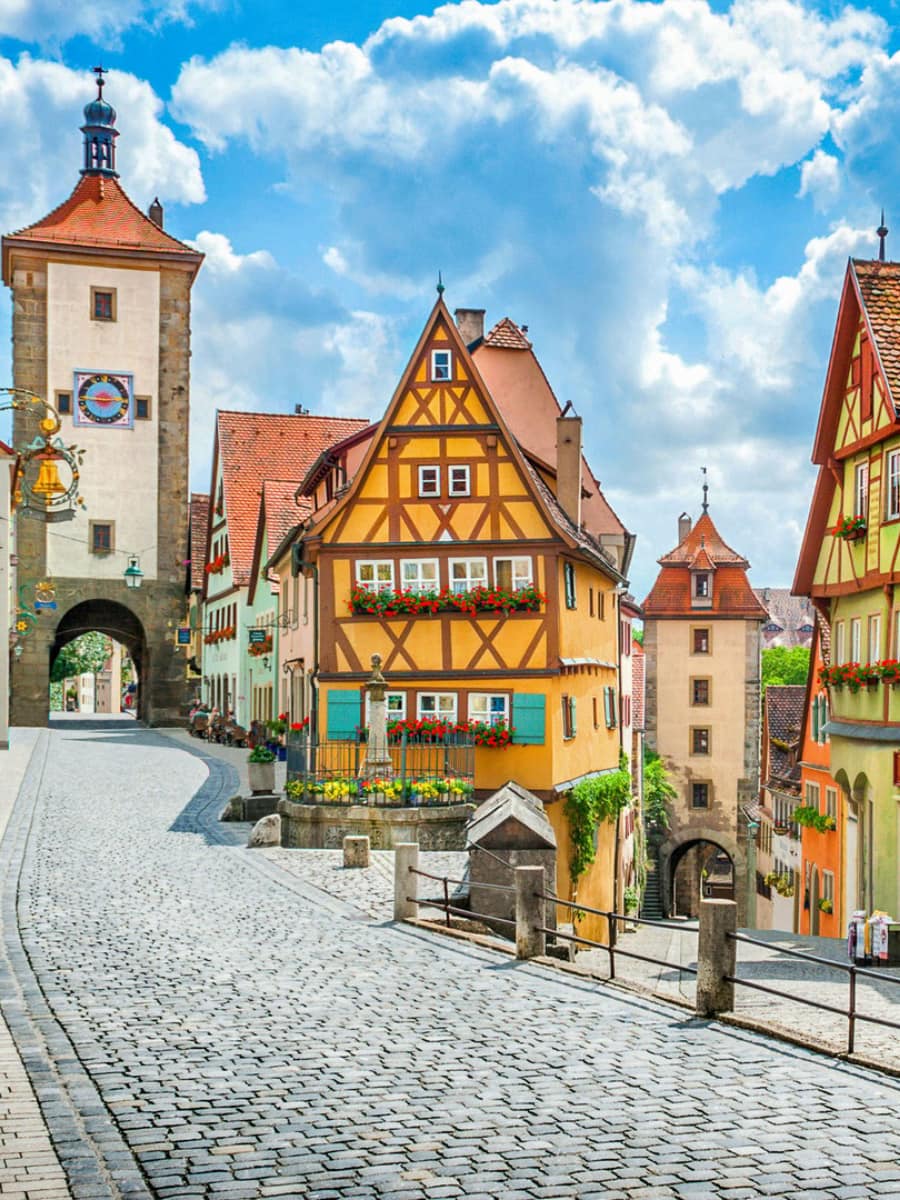
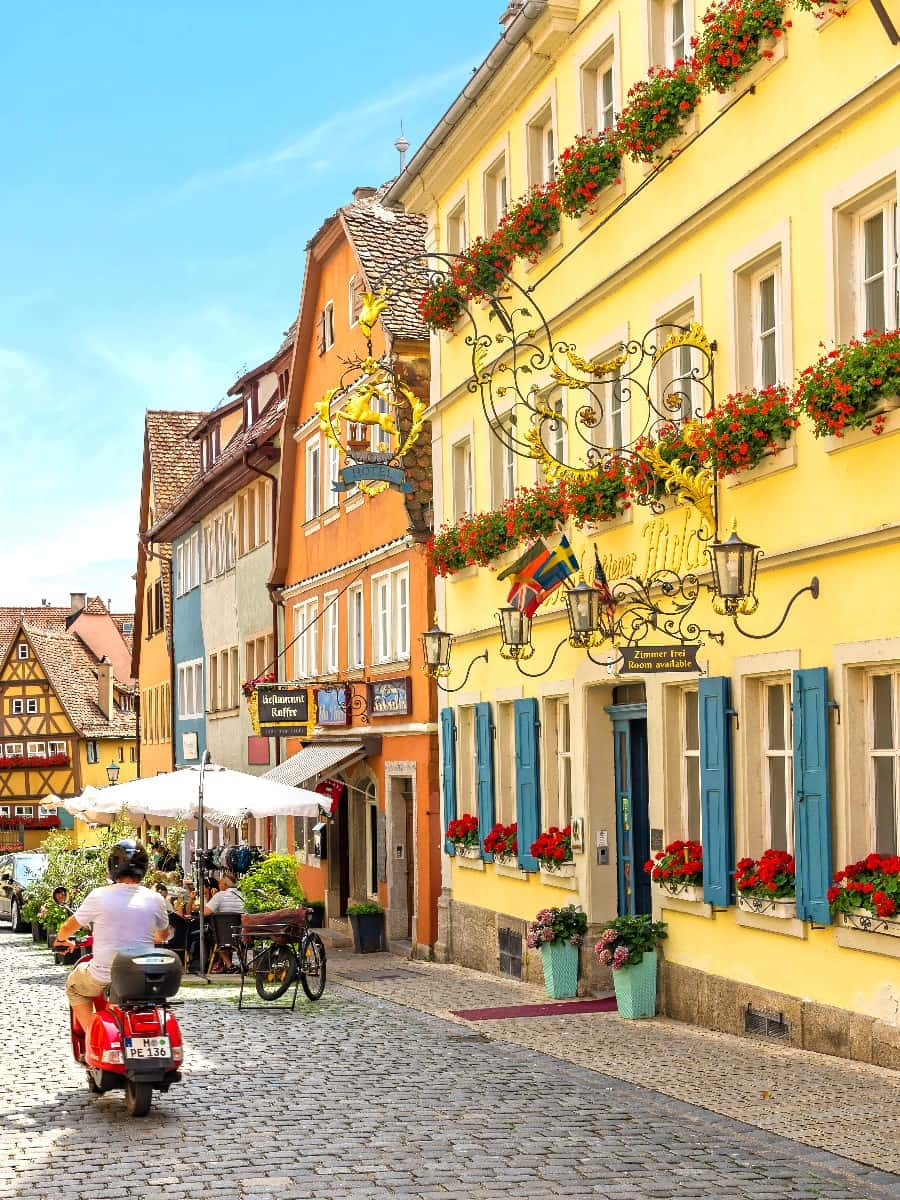
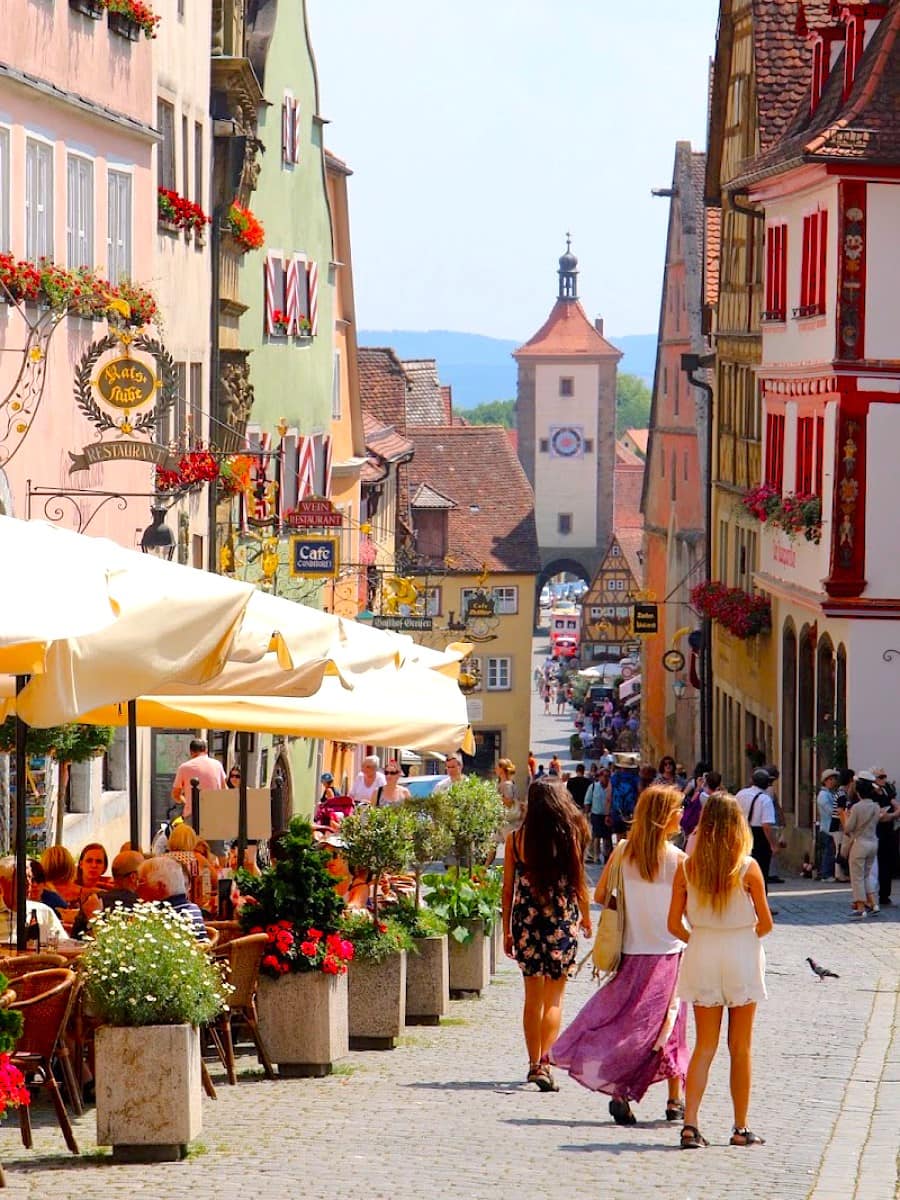

Hidden Gems. While Rothenburg gets the glory, I found quieter towns like Dinkelsbühl and Nördlingen equally charming with fewer tourists. In Dinkelsbühl, I enjoyed coffee at a café on the colorful main square, surrounded by gabled houses that haven’t changed in centuries.
Transportation Options. Driving offers the most flexibility, but I discovered the Romantic Road Coach (seasonal service, €49 day pass, about $54) connects major stops with hop-on-hop-off convenience. Cycling enthusiasts can follow the well-marked Romantic Road Cycle Route for an intimate experience of the Bavarian countryside.
Romantic Road Must-Visit Towns:
- Dinkelsbühl’s colorful houses and intact city walls
- Nördlingen’s unique circular walled old town
- Harburg with its impressive 11th-century castle
- Füssen as the southern gateway to Neuschwanstein
⭐ Best Tours
- Rothenburg ob der Tauber Private Walking Tour: Discover one of the most perfectly preserved medieval towns on this private walking tour. Explore Rothenburg’s charming cobblestone streets, historic city walls, and half-timbered houses with a knowledgeable guide who will bring the town’s fascinating history.
- Medieval Musical Tour of Rothenburg ob der Tauber: Experience Rothenburg in a unique way with this musical walking tour. Follow a guide in medieval costume as they share the town’s history through stories and songs.
| Tourist attractions | Description | Key Features |
|---|---|---|
| Romantic Road | Scenic route connecting picturesque medieval towns | Charming houses, diverse landscapes from vineyards to Alpine foothills |
6. Berchtesgaden National Park
Alpine Paradise. Hiking through National Park, I discovered Bavaria’s most spectacular wilderness area. Dramatic limestone peaks, crystal-clear mountain lakes, and lush alpine meadows create a natural playground for outdoor enthusiasts of all levels.
Eagle’s Nest History. The infamous Eagle’s Nest (Kehlsteinhaus) perches atop a mountain peak at 1,834 meters. Built as a Nazi meeting house, it now serves as a restaurant with breathtaking views. The historical Documentation Center (€3, about $3.30) in Obersalzberg provides important context before visiting this controversial site.
Salt Mine Adventure. I donned a miner’s outfit and descended into the Salt Mine, sliding down wooden miners’ slides and crossing an underground salt lake by boat. The 90-minute tour costs €18 (approximately $20) and offers a fascinating glimpse into 500 years of salt mining history.
Watzmann Challenge. The imposing Watzmann mountain (2,713m) dominates the park’s skyline. While the full ascent requires mountaineering skills, I enjoyed the more accessible Watzmann-Ostwand viewpoint trail for spectacular vistas without technical climbing.
Berchtesgaden Highlights:
- The emerald-green Königssee lake with electric boat tours
- The dramatic Wimbachklamm gorge with wooden walkways
- The panoramic Rossfeld Scenic Road (€8.50 toll)
- The picturesque Ramsau Church with mountain backdrop
⭐ Best Tours
- Adventure in Eagle's Nest Hike Tour: Combine history and outdoor adventure on this hiking tour to Hitler’s infamous Eagle’s Nest retreat. Trek through beautiful Alpine scenery in the Berchtesgaden region while learning about the area’s significant WWII history, culminating with spectacular mountain views.
- Eagle's Nest Obersalzberg Private Half-Day WWII Historical Tour: Delve into WWII history on this private tour of the Eagle’s Nest and Obersalzberg complex.
7. Residenz München
Palatial Grandeur. Stepping into the Munich Residenz, I was immediately struck by the sheer scale of Bavaria’s largest palace complex. Once home to Bavarian rulers for over 400 years, this urban palace contains 130 rooms open to the public, each more opulent than the last. The standard entry ticket costs €9 (about $10), which I found remarkably reasonable for such magnificence.
Antiquarium Awe. The Renaissance Antiquarium hall left me speechless with its 66-meter length, barrel-vaulted ceiling, and walls adorned with 102 classical busts. Built in the 16th century as a library hall, it later became a banquet hall for the Wittelsbach dynasty. The morning light streaming through its high windows created a magical atmosphere I won’t soon forget.
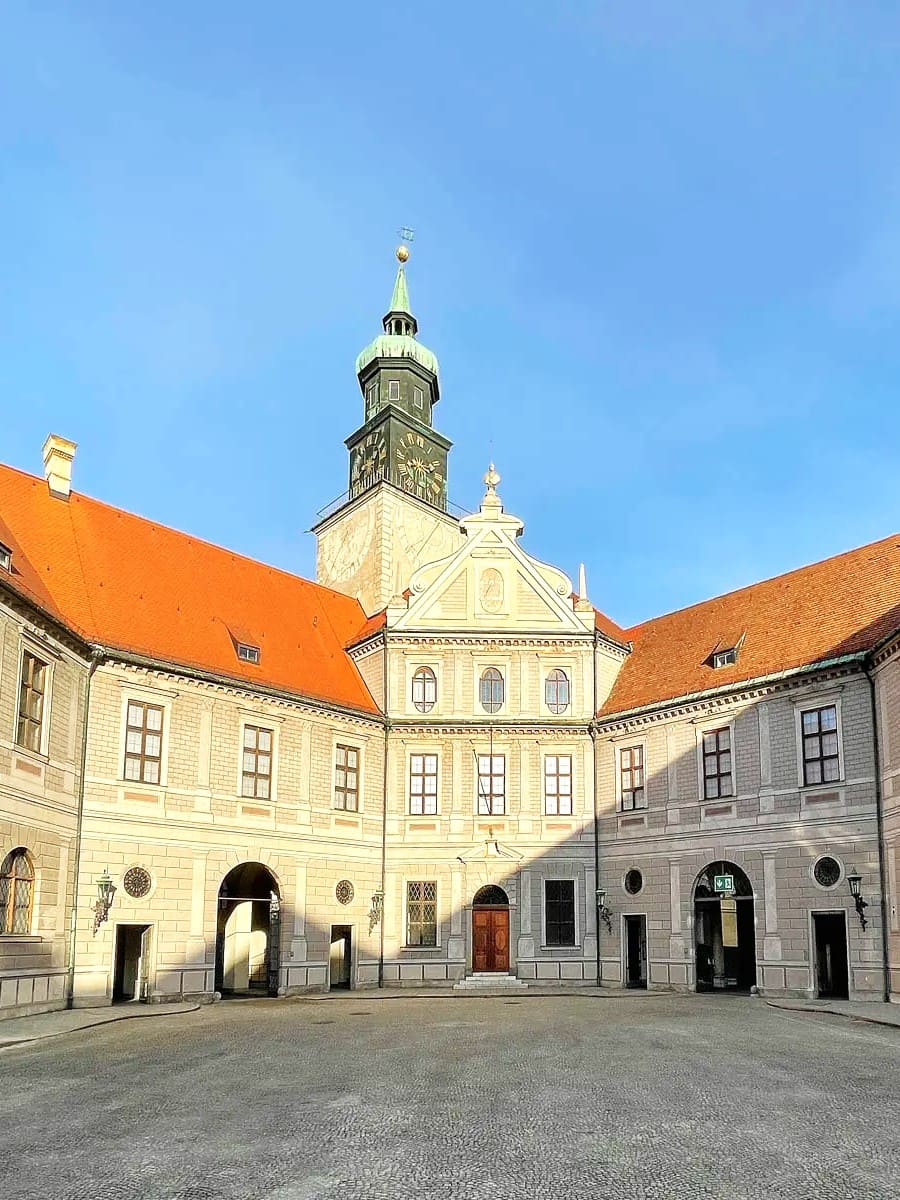
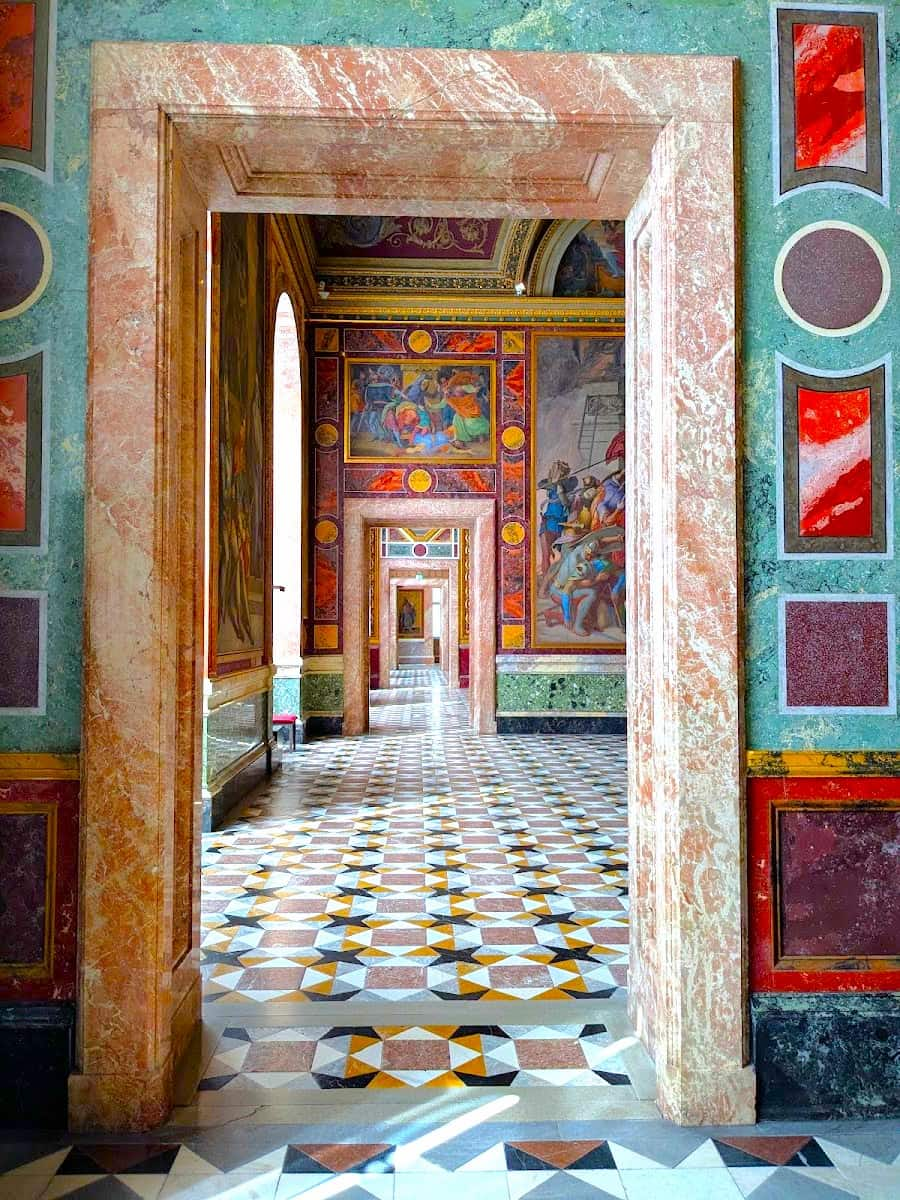
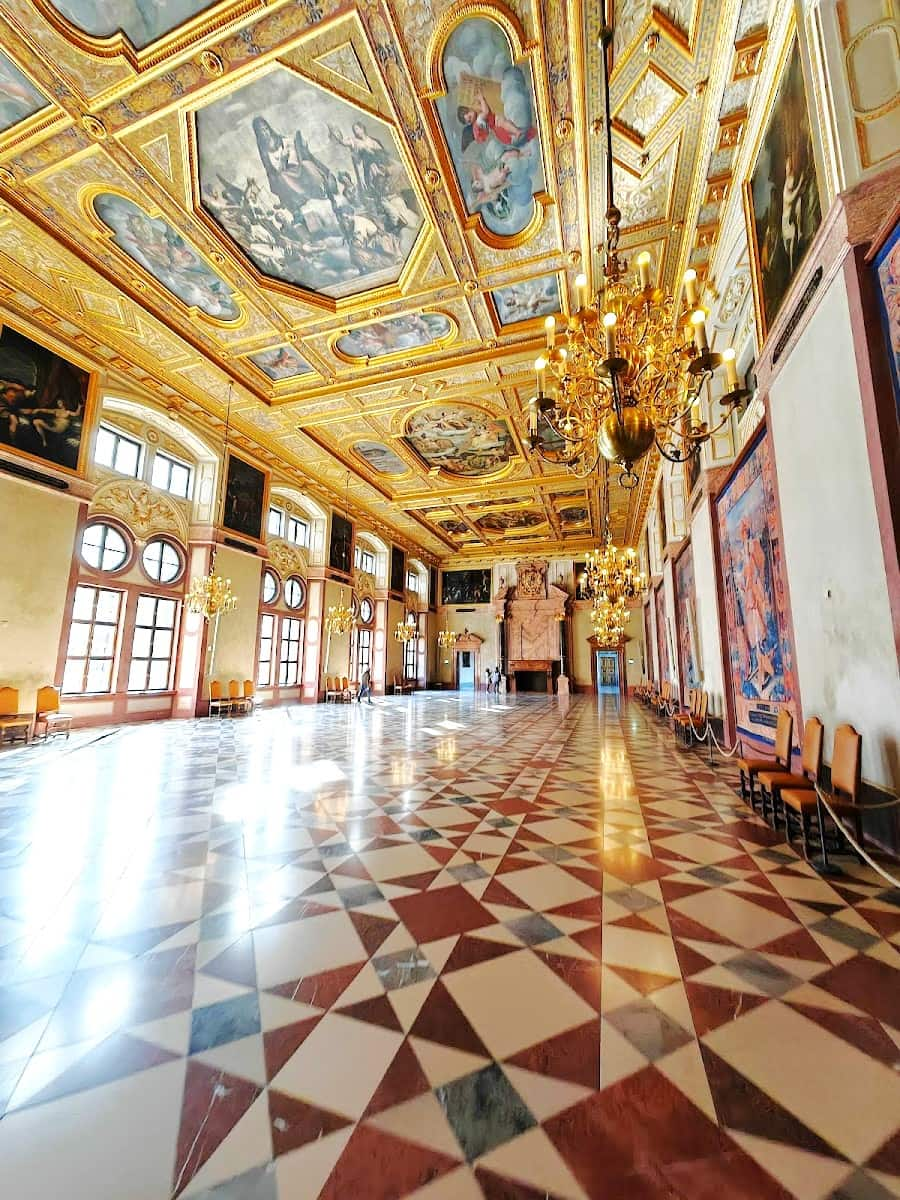
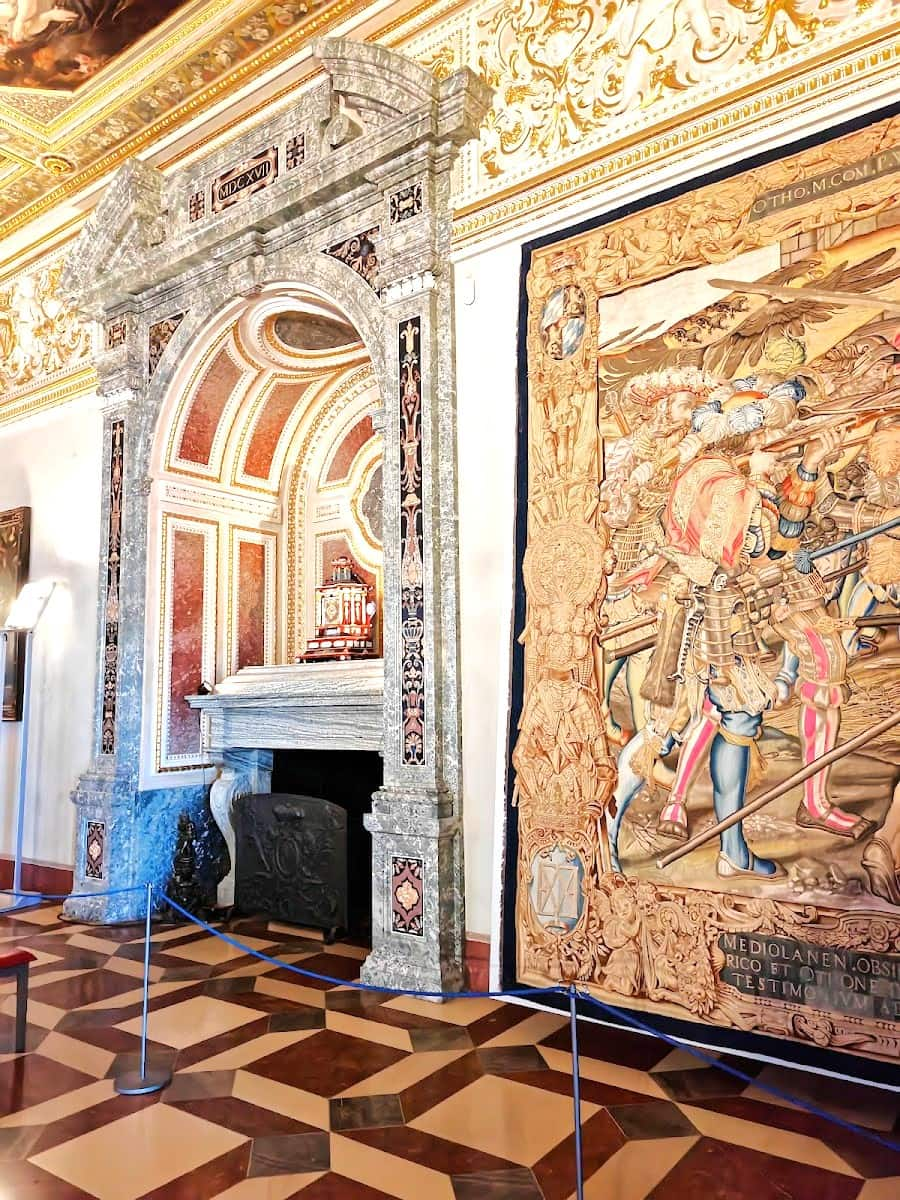
Treasury Treasures. The Schatzkammer (Treasury) houses one of Europe’s most important collections of royal jewels. I spent nearly an hour examining crowns, ceremonial swords, and religious relics spanning 1,000 years of European history. The separate Treasury ticket costs €9, but the combination ticket for €16 (approximately $17.50) offers the best value.
Cuvilliés Theatre. Hidden within the palace complex, this rococo gem survived WWII because its ornate interior was dismantled and stored safely away from bombing. Rebuilt after the war, it now hosts intimate performances in a setting of red and gold splendor. The €5 entry fee (about $5.50) is well worth it even if you can only peek inside between performances.
Residenz Highlights:
- The Shell Grotto decorated with Bavarian shells and crystals
- The Green Gallery with its collection of Dutch and Flemish paintings
- The Ancestral Gallery showcasing portraits of Wittelsbach rulers
- The ornate Imperial Hall with its massive chandeliers
- The Byzantine Court Church of All Saints with gold mosaics
⭐ Best Activities
- A Half-Day in Munich with a Local: Private and Personalized: Experience Munich like a local on this customized private tour. Your personal guide will tailor the itinerary to your interests, whether you want to explore hidden gems, visit major landmarks, or discover the best food and drink spots in Bavaria’s capital.
8. Nuremberg Old Town
Medieval Fortress. Approaching Nuremberg’s Imperial Castle (Kaiserburg), I was impressed by its commanding position overlooking the entire city. This 1000-year-old fortress served as a symbol of imperial power during the Holy Roman Empire. The castle complex entry fee is €7 (approximately $7.70), with spectacular views from the Sinwell Tower included.
Historic Walls. I walked sections of Nuremberg’s 4km city walls, which remain largely intact with their distinctive red sandstone construction. The covered walkway offered protection from rain while I admired the 80 original watchtowers. Unlike many European cities that demolished their medieval fortifications, Nuremberg preserved this impressive defensive ring.
Nazi Rally Grounds. The Documentation Center Nazi Party Rally Grounds provided a sobering counterpoint to the medieval charm. This excellent museum (€6 entry, about $6.60) occupies part of the unfinished Nazi Congress Hall and examines Nuremberg’s dark period as the ceremonial capital of the Nazi party through thoughtful, unflinching exhibits.
Handwerkerhof Crafts. I discovered craftsmanship in the Handwerkerhof (Craftsmen’s Courtyard), a recreated medieval village within the city walls. Watching artisans create leather goods, glass art, and jewelry in their workshops offered a glimpse into centuries-old traditions.
Nuremberg Essentials:
- The Beautiful Fountain (Schöner Brunnen) with its “lucky ring”
- The Hospital of the Holy Spirit spanning the Pegnitz River
- The Albrecht Dürer House where the famous artist lived and worked
- The historic Weißgerbergasse with perfectly preserved craftsmen’s houses
- The St. Lorenz Church with its magnificent rose window
Culinary Tradition. No visit to Nuremberg is complete without sampling the city’s famous small bratwurst. I enjoyed mine at Bratwursthäusle near the main market square, where they’ve been grilling these finger-sized sausages over beechwood fire since 1313. A traditional serving of six sausages with sauerkraut costs around €10 (approximately $11) – absolutely worth it for this authentic Bavarian experience.
⭐ Best Activities
- Private Tour: Nuremberg Nazi Party Rally Grounds and Old Town Tour: Gain insights into Nuremberg’s dual historical significance on this private tour.
Things to Do in Bavaria with Kids
1. Legoland in Günzburg
Brick Paradise. My family’s visit to Legoland Deutschland Resort in Günzburg proved to be the highlight of our adventure for the kids. Spanning 43 hectares, this colorful theme park features over 55 million LEGO bricks transformed into rides, shows, and interactive experiences that captivate young imaginations.
Miniland Marvel. The park’s Miniland amazed us with its meticulously detailed LEGO recreations of European landmarks, including Neuschwanstein Castle and Munich’s Allianz Arena. My children were fascinated by the working trains, boats, and airport with planes that take off and land – all built at a 1:20 scale using standard LEGO bricks.


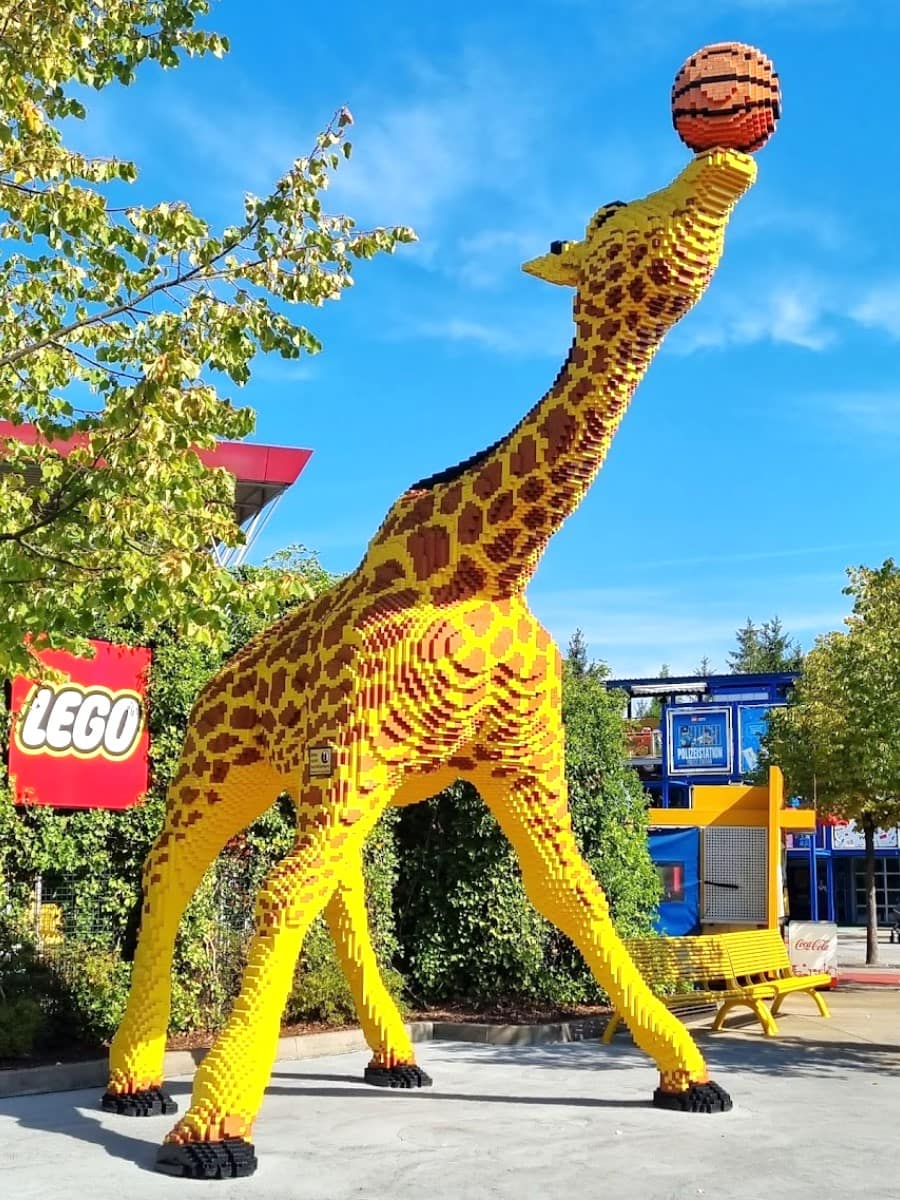
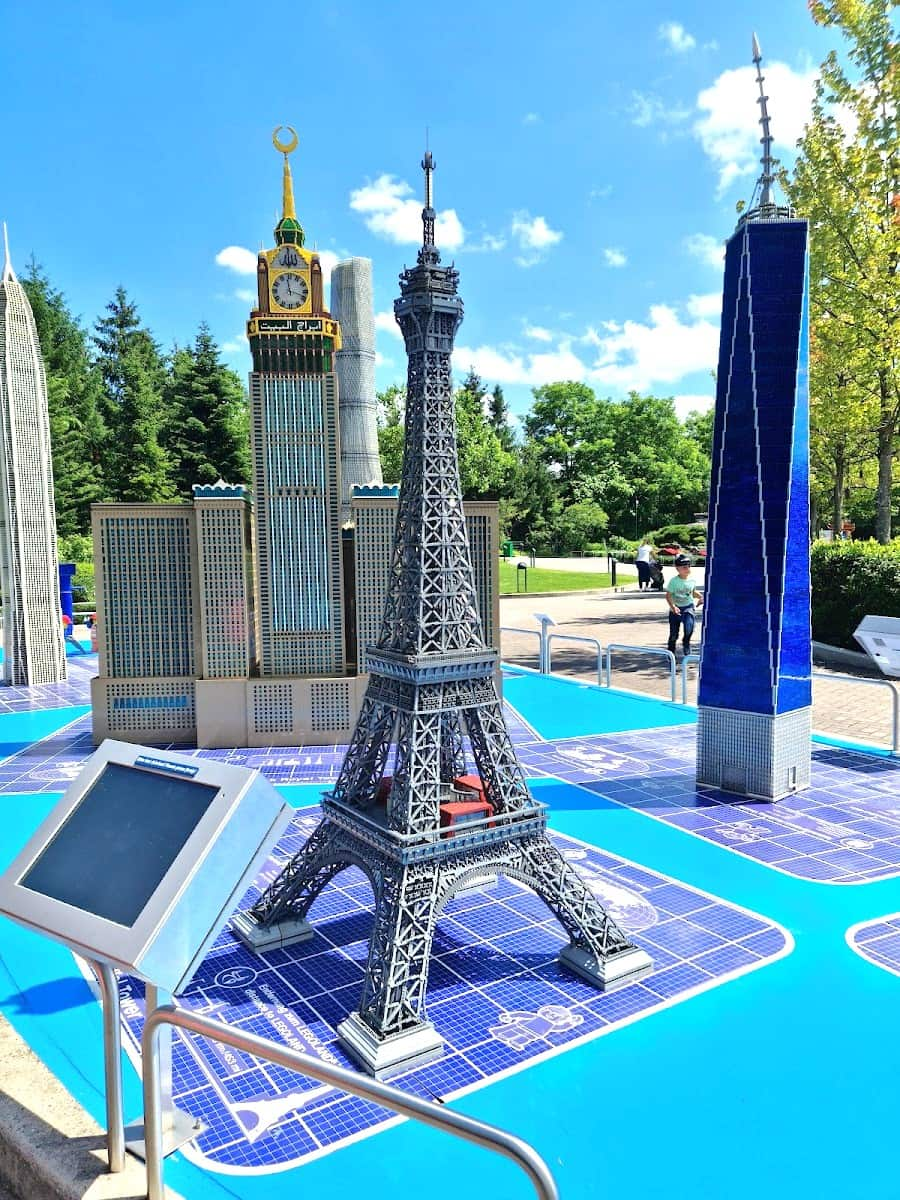
Ride Highlights. The Dragon roller coaster provided just enough thrill for my 8-year-old without being too scary, while the younger ones loved the gentler Knight’s Tournament ride. The Fire Dragon coaster through a castle interior combines storytelling with excitement – my kids insisted on riding it three times!
Water Fun. On a hot summer day, the LEGO NINJAGO World water playground saved us with its splash zones and water cannons. I recommend bringing swimwear and towels during summer visits – something many first-time visitors overlook. The nearby LEGOLAND Beach offers a sandy shore where parents can relax while kids build sandcastles.
Legoland Must-Do Activities:
- The LEGO Factory Tour showing how LEGO bricks are made
- The Submarine Adventure underwater journey past real sea creatures
- The LEGO Studios 4D cinema with special effects
- The Driving School where kids earn their own LEGO driver’s license
- The Star Wars Miniland with scenes from all the films
Practical Tips. One-day tickets cost €45-65 for adults and €42-62 for children (approximately $49-71 and $46-68) depending on the season, but I found substantial discounts by booking online at least seven days in advance. The park is open from late March through early November, with extended hours during summer.
⭐ Best Activities
- LEGOLAND Deutschland Resort Admission Ticket: Enjoy a day of family fun at LEGOLAND Deutschland Resort near Günzburg. This admission ticket gives you access to over 60 tourist activities, shows, and LEGO models spread across eight themed areas, making it perfect for a day of adventure with children.
2. Forest Treetop Walkway
Sky-High Adventure. The Forest Treetop Walkway (Baumwipfelpfad) near Neuschönau offered my family a unique perspective on Bavaria’s largest forest. This 1,300-meter wooden pathway winds through the treetops, culminating in a 44-meter high observation tower shaped like an egg.
Educational Fun. As we walked, we encountered interactive stations explaining the forest ecosystem. My kids loved the rope bridges and wobbling platforms that added an element of excitement. Information boards along the way are in German and English, making it accessible for international visitors.
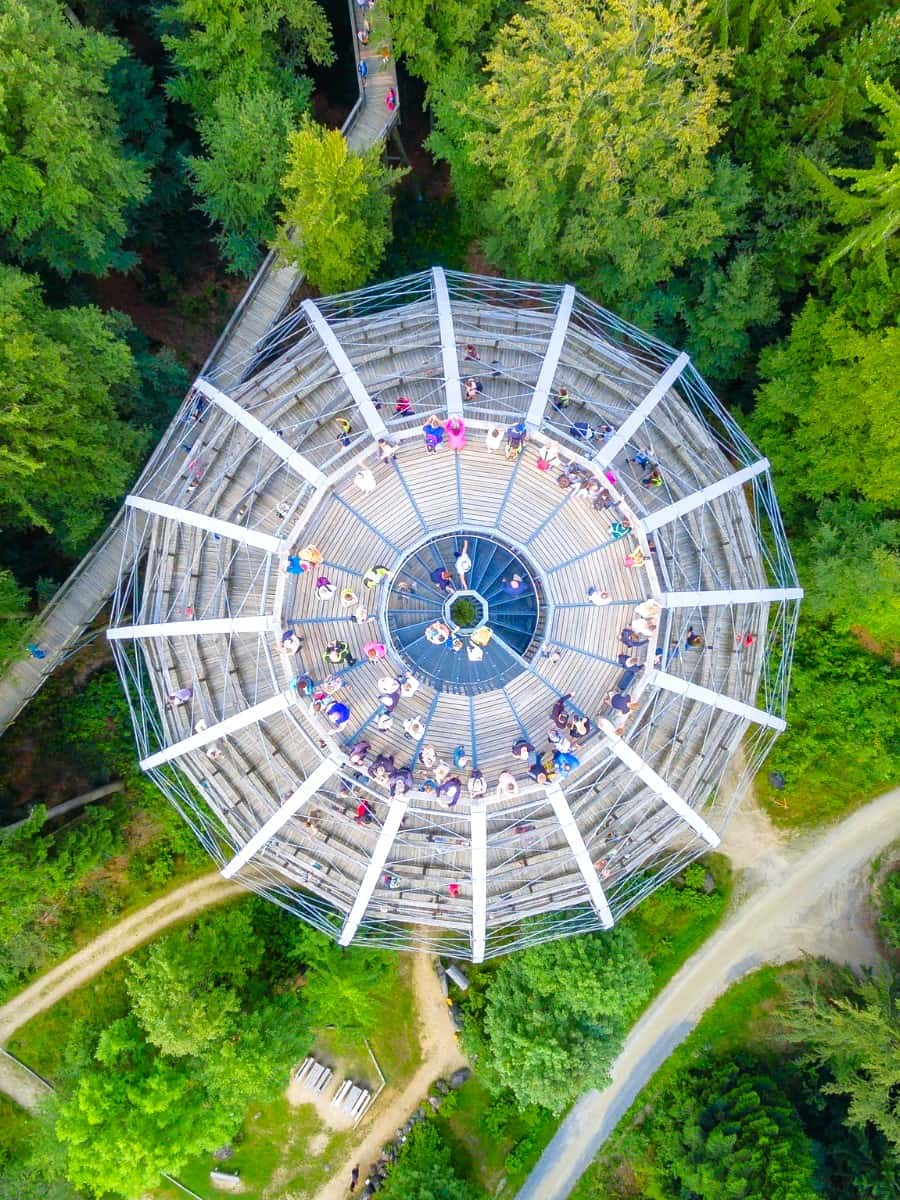
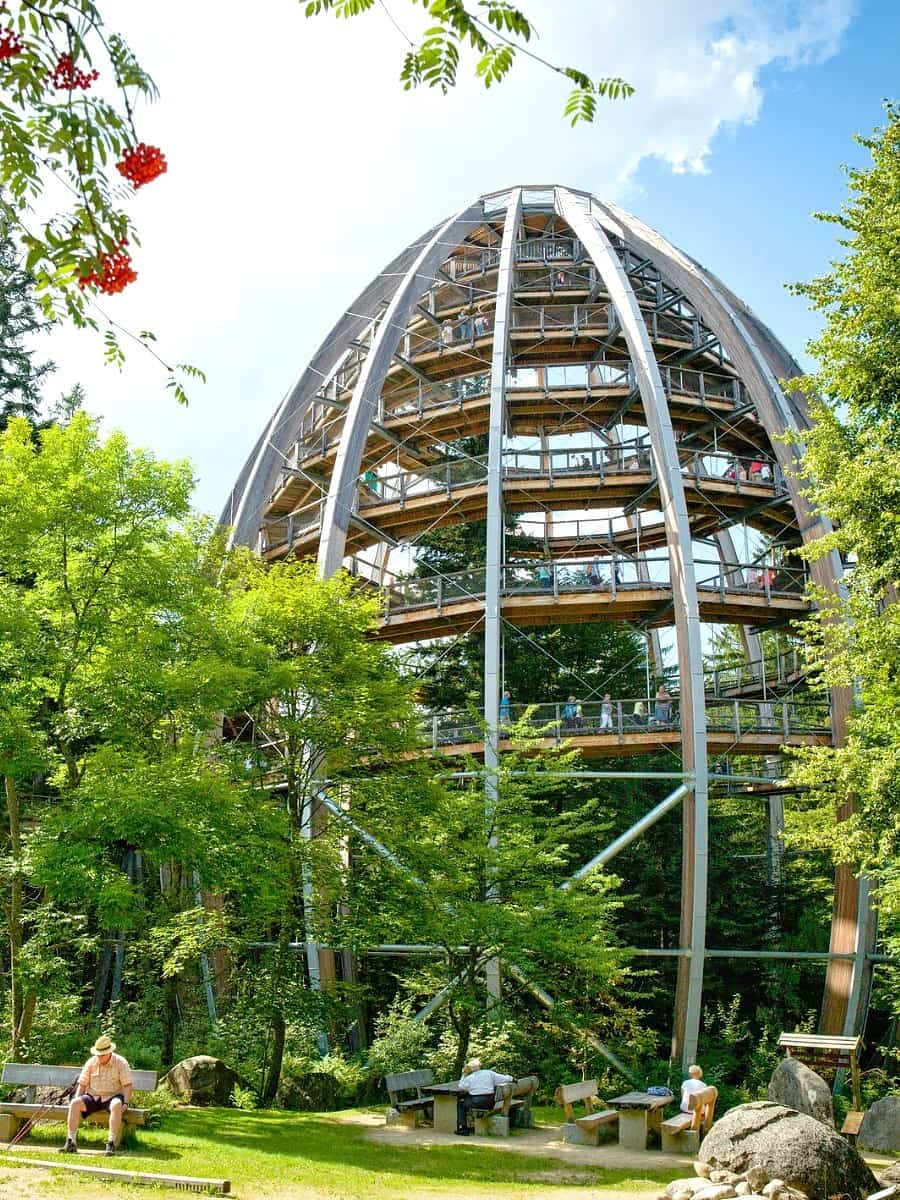
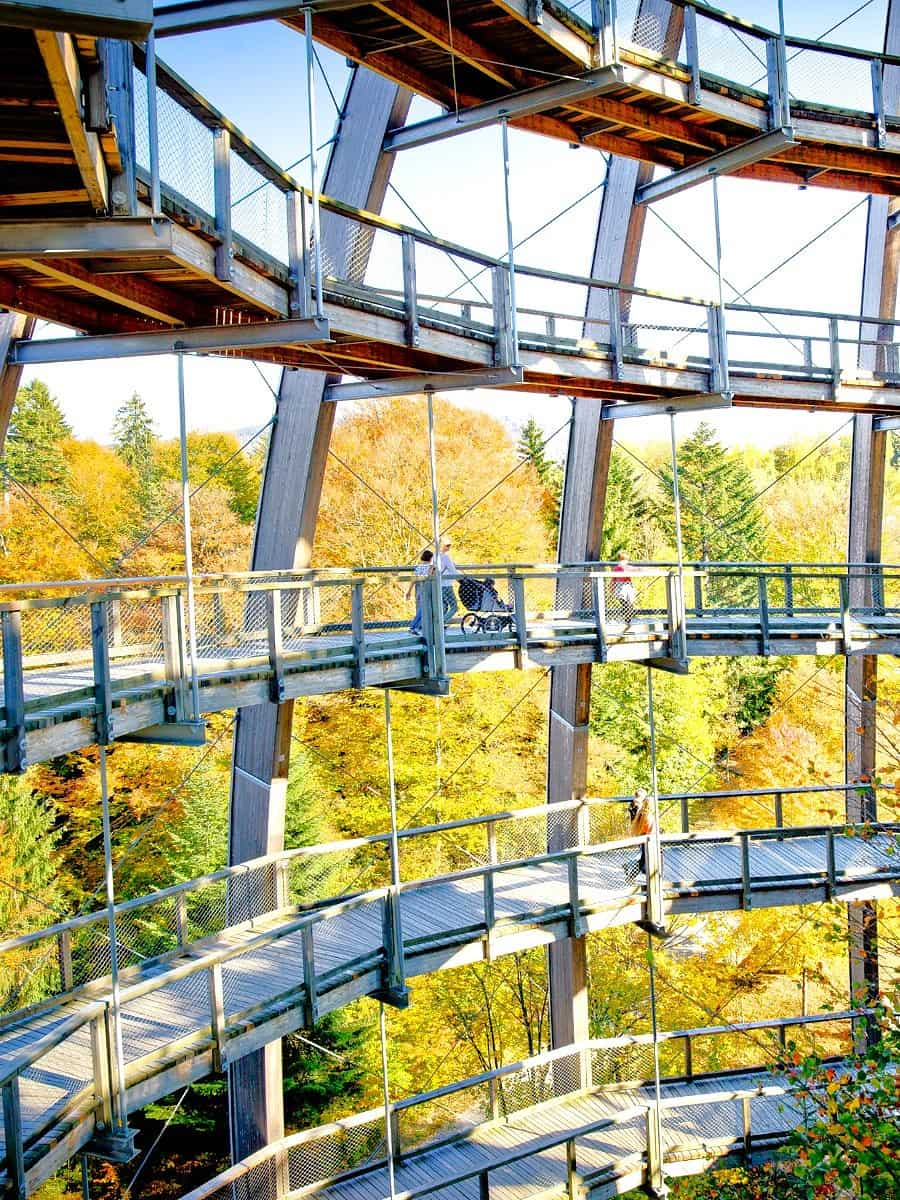
Spectacular Views. The spiral ramp to the top of the “tree egg” tower is wheelchair and stroller-friendly. At the summit, we were rewarded with perfect views stretching to the Czech border and the Alps on clear days. The gradual ascent made it manageable even for our youngest.
Nature Immersion. Below the walkway, we explored the “Path of Diversity” nature trail, where the kids enjoyed hands-on exhibits about local wildlife. The nearby animal enclosures, including lynx and wild boar, were a hit with the whole family.
Treetop Walkway Highlights:
- The thrilling 52-meter tunnel slide for a quick descent (height restrictions apply)
- Seasonal events like night walks and wildlife watching tours
- The adjacent Hans-Eisenmann-Haus visitor center with its forest museum
- Picnic areas perfect for a family lunch surrounded by nature
- Winter visits offer a magical snow-covered forest experience
Visitor Info. Entry costs €11 for adults and €9 for children (about $12 and $10), with family tickets available. I recommend allowing at least 2-3 hours to fully enjoy the walkway and surrounding attractions. Wear comfortable shoes and bring layers, as it can be cooler up in the treetops.
⭐ Best Activities
- Private Bavarian Mountain Tour from Salzburg: Explore the stunning Bavarian Alps on this private tour from Salzburg. Visit picturesque mountain lakes, charming villages, and enjoy spectacular Alpine scenery while your guide shares insights about the region’s culture and history.
3. PLAYMOBIL FunPark
Imaginative Playground. Just outside Nuremberg, the PLAYMOBIL FunPark turned out to be a paradise for my young PLAYMOBIL enthusiasts. Unlike traditional theme parks, this attraction focuses on interactive play areas themed around the popular toy line, encouraging creativity and physical activity.
Themed Worlds. My children were thrilled to explore life-sized versions of their favorite PLAYMOBIL sets. The pirate ship with water cannons was a particular favorite, while the Western City allowed them to pan for gold and ride ponies. Each area is meticulously designed to mirror the toy sets, creating an immersive experience.

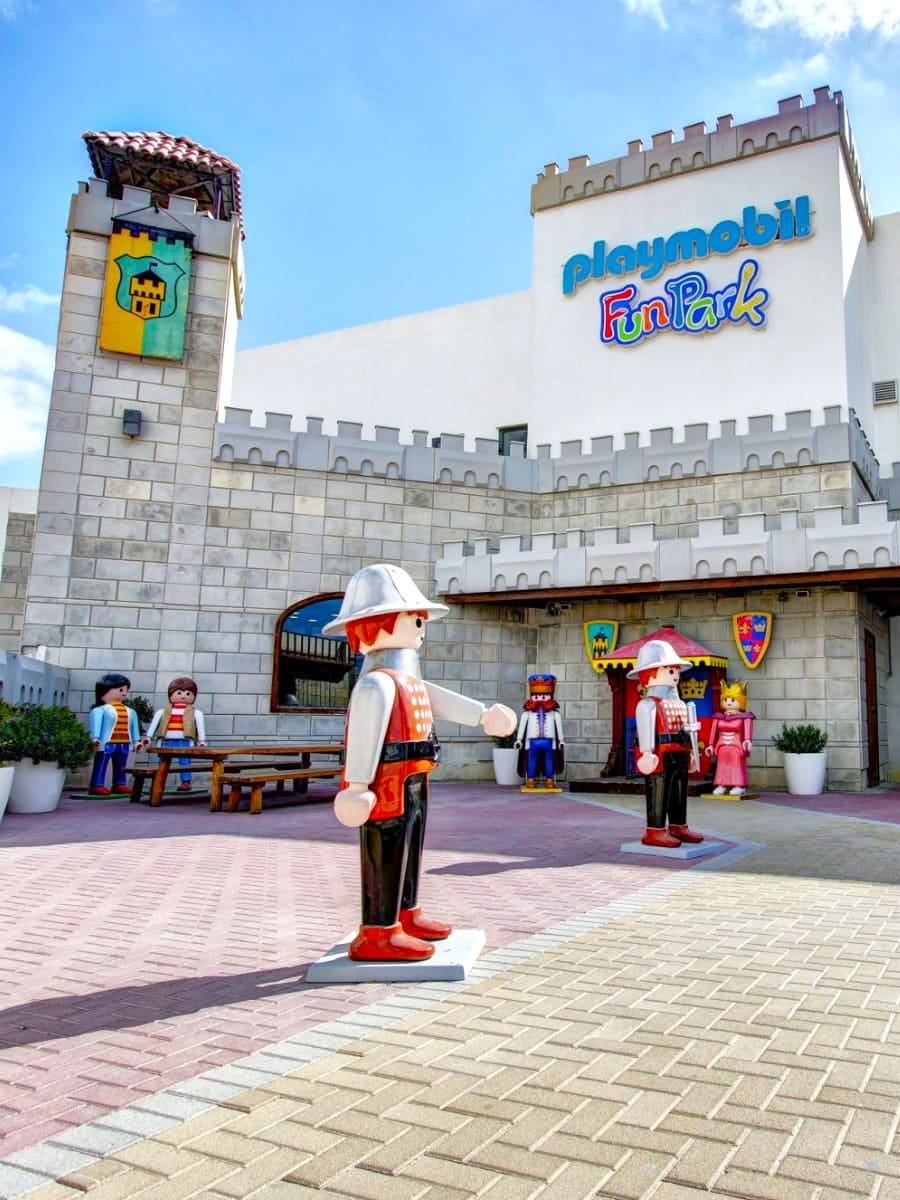
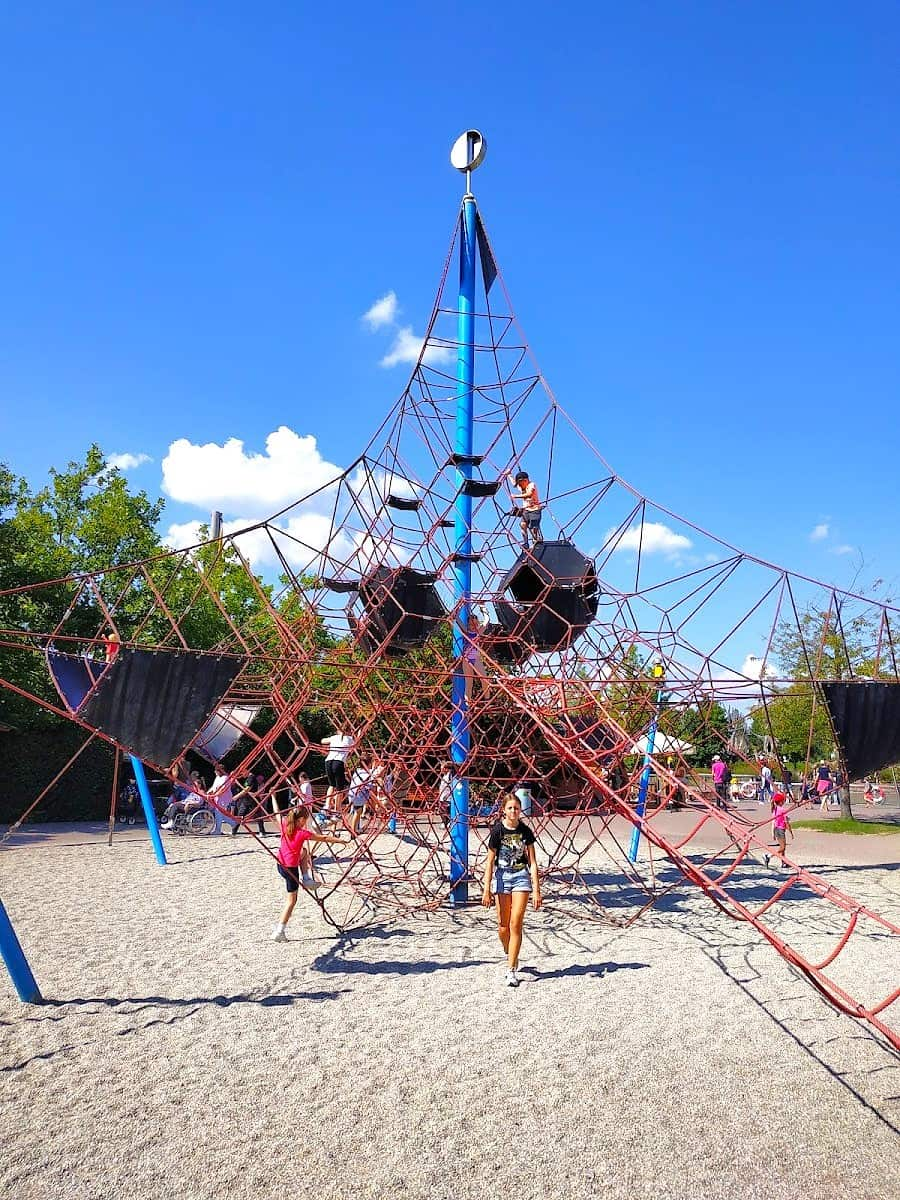
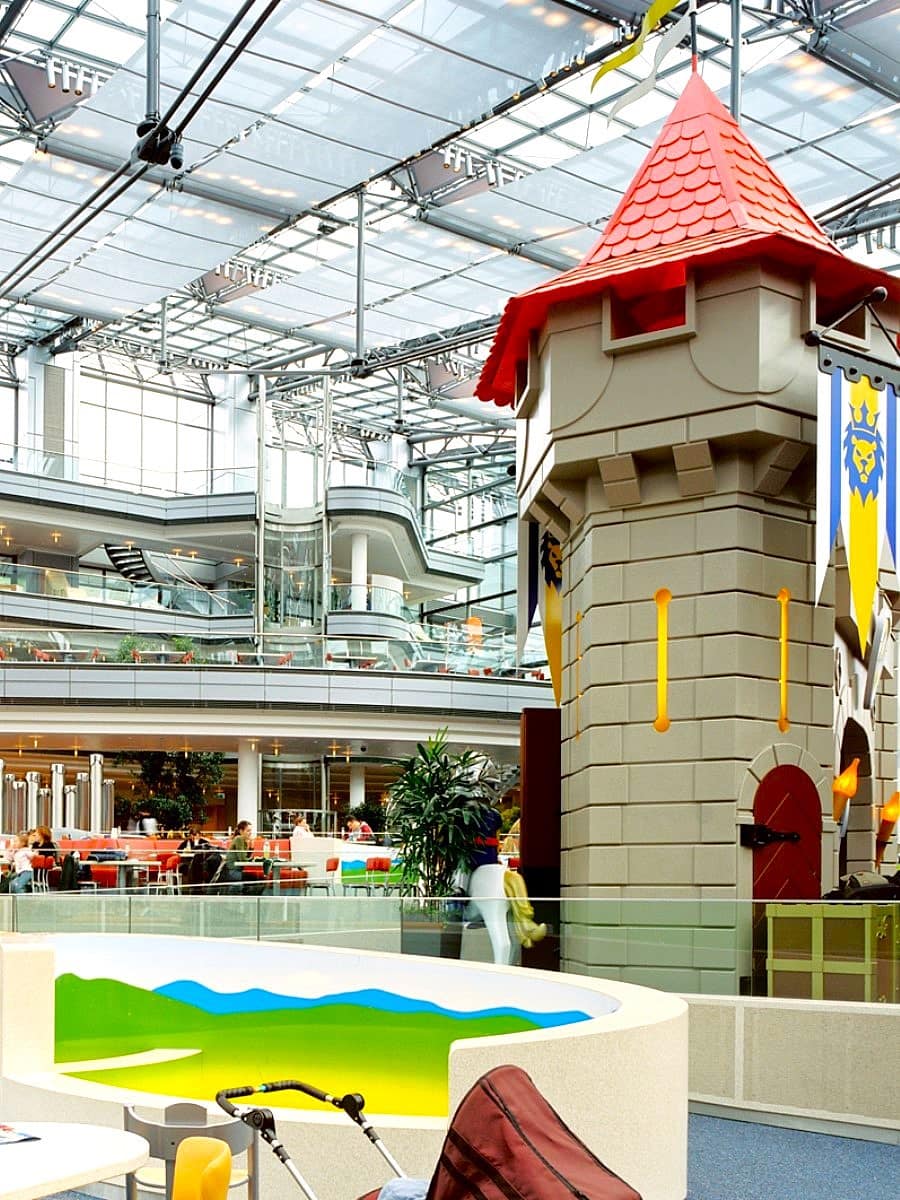
Active Play. I appreciated how the park encourages physical activity. The large climbing structures, including a knight’s castle and a police headquarters, kept the kids engaged for hours. The farm area even allows children to “milk” model cows and collect eggs from toy chickens.
PLAYMOBIL FunPark Must-Try Experiences:
- The water play area with pirate ships and water slides (bring swimwear)
- The dinosaur-themed excavation site where kids can dig for fossils
- The go-kart track for young racing enthusiasts
- The FunPark-Express train ride around the park
- The PLAYMOBIL shop with exclusive sets not available elsewhere
Practical Advice. Tickets cost €14.90 for both adults and children over 3 (approximately $16.30), which I found reasonable for a full day of entertainment. The park is open from March to November, with reduced winter opening hours. Bring a picnic to save on food costs, as outside food is allowed in designated areas.
⭐ Best Activities.
- Playmobil FunPark Entrance Ticket: Secure your entry to the Playmobil FunPark near Nuremberg, a paradise for children featuring interactive play areas based on the popular toy line.
4. Bavarian Slopes
Winter Wonderland. Our family’s winter trip to Bavaria wouldn’t have been complete without experiencing the thrill of sledging. We chose the Wallberg mountain near Tegernsee for its family-friendly slopes and stunning Alpine views.
Easy Access. The Wallbergbahn cable car whisked us effortlessly to the top station at 1,620 meters. Round-trip tickets cost €22 for adults and €13 for children (about $24 and $14), with discounts for families. The panoramic ride up was an attraction in itself, offering breathtaking views of the surrounding mountains and Tegernsee lake.
Sledge Run Fun. At the top, we rented traditional wooden sledges (€6 per sledge, approximately $6.60) and set off down the 6.5km natural sledge run. The track offered a perfect mix of gentle slopes for beginners and a few more thrilling curves for the adventurous, ensuring fun for all ages in our group.
Warming Breaks. Halfway down, we stopped at the cozy Wallberghaus mountain hut for hot chocolate and to warm up. The rustic atmosphere and hearty Bavarian snacks provided a perfect respite before continuing our descent.
Winter Activities at Wallberg:
- Snowshoe hiking trails with guided tours available
- A small ski area ideal for beginners and children
- Winter hiking paths with stunning Alpine vistas
- Paragliding for the truly adventurous (weather permitting)
- Evening sledging under floodlights on select dates
Seasonal Tip. While sledging is a winter activity, the Wallberg area offers beautiful hiking opportunities in summer. Consider returning in warmer months for a completely different, but equally enjoyable, mountain experience.
Free Things to Do in Bavaria
1. English Garden in Munich
Urban Oasis. My first visit to Munich’s Englischer Garten revealed why it’s one of the world’s largest urban parks. Spanning 375 hectares, this vast green space offers a peaceful retreat from city life without spending a single euro. I found myself wandering for hours along tree-lined paths that seemed to transport me far from the urban center.
Surfing Surprise. One of the park’s most unusual attractions caught me by surprise – river surfing! At the Eisbach wave near the park’s southern entrance, I watched skilled surfers ride a standing wave created by underwater concrete blocks. This unique spectacle draws crowds year-round and offers fantastic photo opportunities.
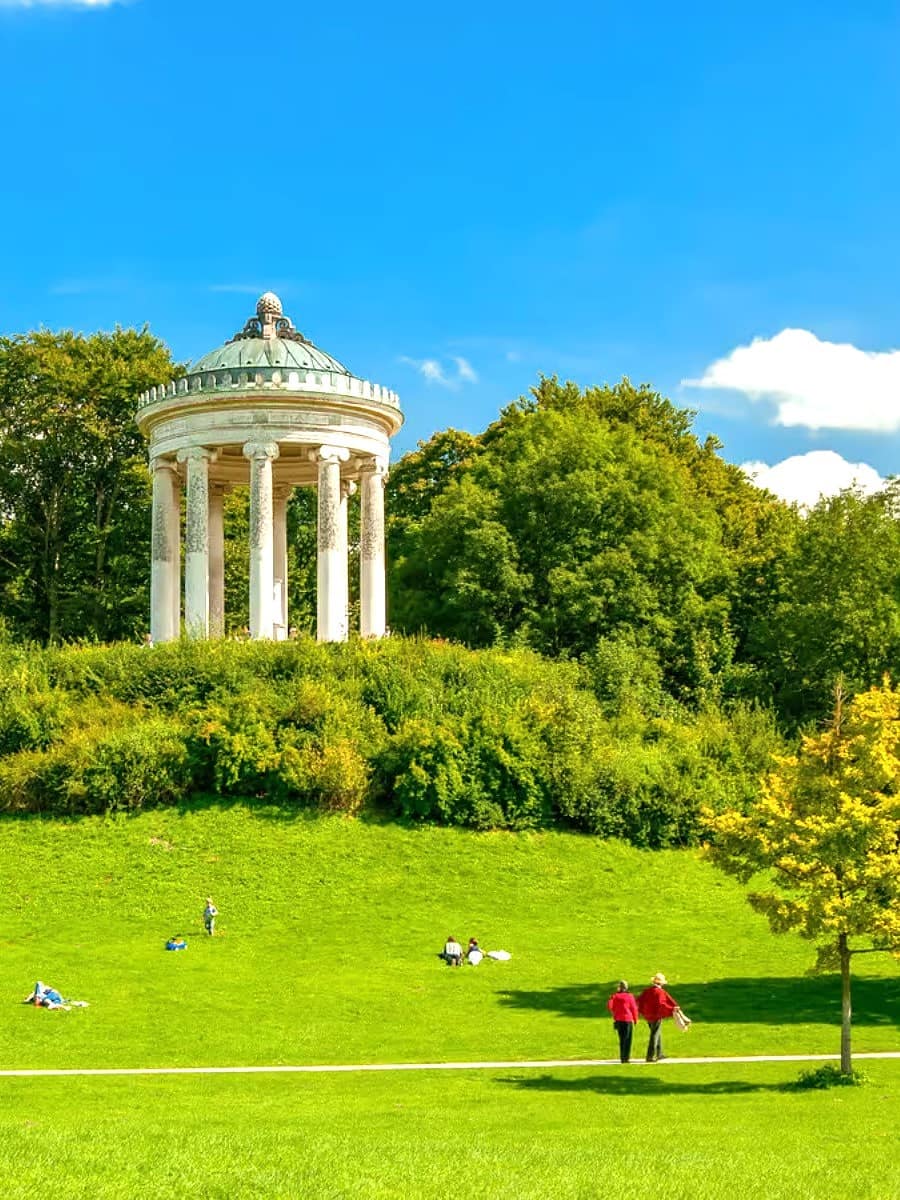
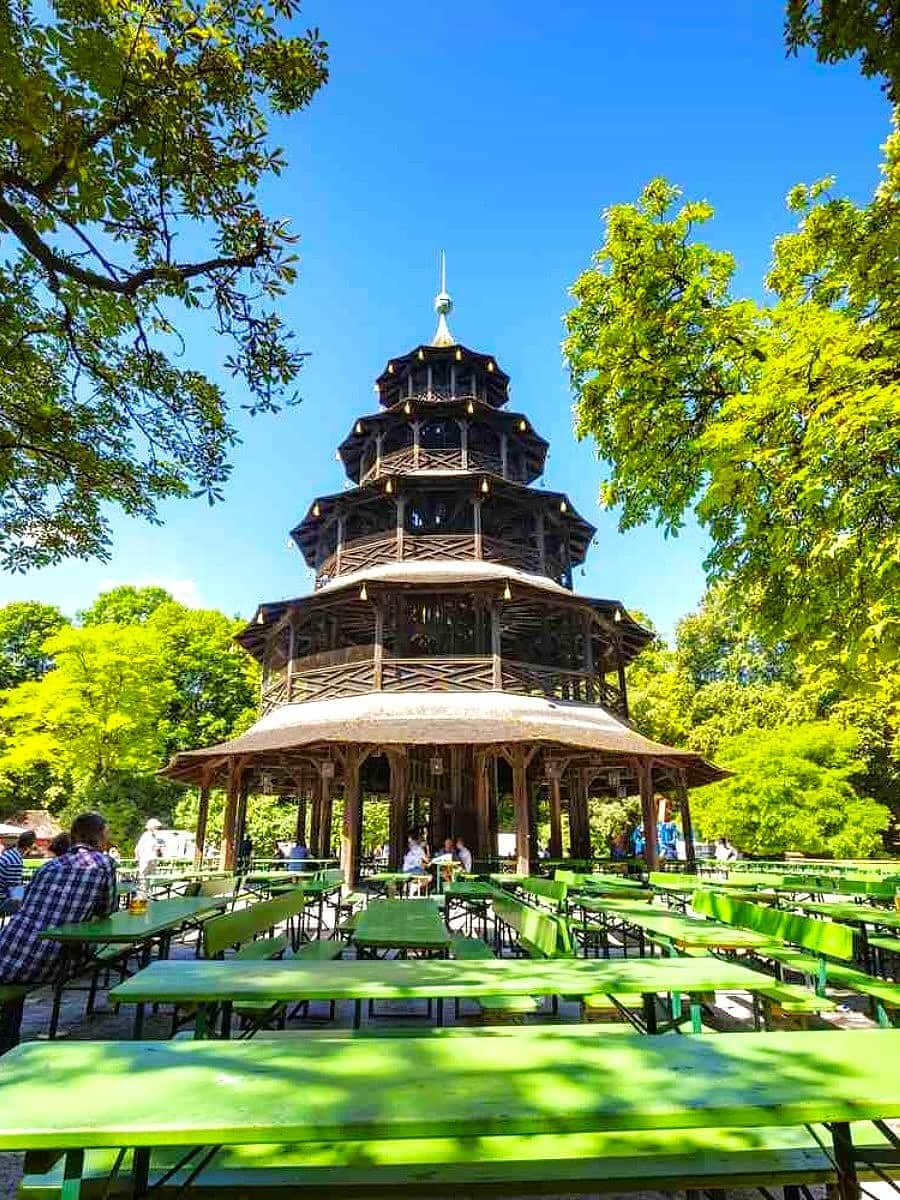
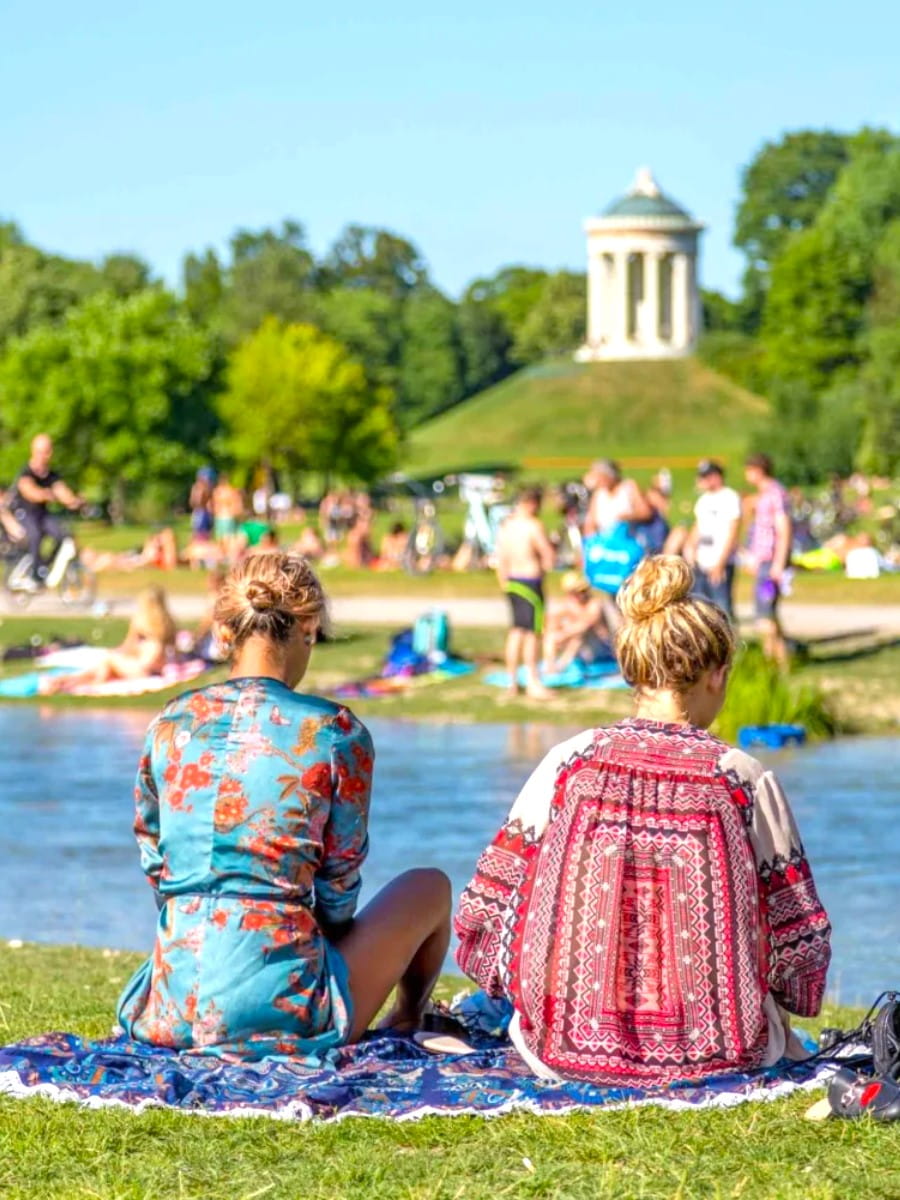
Beer Garden Bliss. The Chinese Tower (Chinesischer Turm) garden sits at the heart of the park, where I enjoyed the quintessential Bavarian experience of sipping a Maß (liter) of beer under chestnut trees. While the beer costs money (around €9, or $10), entering the garden and soaking up the atmosphere is completely free – you can even bring your own picnic.
Peaceful Corners. Beyond the popular southern section, I discovered quieter areas in the northern part of the garden. The Kleinhesseloher See, a lovely lake with paddle boats, offers peaceful walking paths and excellent people-watching opportunities. The Japanese teahouse hosts traditional tea ceremonies several times monthly.
Garden Highlights:
- The Monopteros, a Greek-style temple on a hill with city views
- The Schönfeldwiese meadow where locals sunbathe (clothing optional)
- The picturesque Falkenstein bridge for Instagram-worthy photos
- The historic Rumford House (former hunting lodge)
- The peaceful Japanese Garden with authentic landscaping
Seasonal Magic. Each season transforms the garden: spring brings cherry blossoms, summer offers sunbathing and picnicking, autumn creates a canvas of golden leaves, and winter sometimes allows for cross-country skiing across snow-covered meadows. I found early mornings best for avoiding crowds, especially on summer weekends.
⭐ Best Activities
- Private Munich Rickshaw City Tour and English Garden: See Munich’s highlights in a fun and eco-friendly way on this private rickshaw tour. Glide through the city center and the expansive English Garden while your driver-guide shares fascinating stories and points out key landmarks along the way.
2. Bamberg’s Old Town
Medieval Marvel. Wandering through Bamberg’s UNESCO-listed Old Town costs nothing yet delivers priceless experiences. I spent a full day exploring its cobblestone streets, admiring the half-timbered houses, and crossing arched stone bridges without spending on attractions. The entire historic center feels like an open-air museum.
Architectural Treasure. The Old Town Hall (Altes Rathaus) built on an artificial island in the Regnitz River captivated me with its unique location and colorful frescoes. While touring inside costs a small fee, admiring its exterior and photographing this iconic building is completely free. The legend of how it came to be built on an island (the bishop refused to give citizens land) adds to its charm.
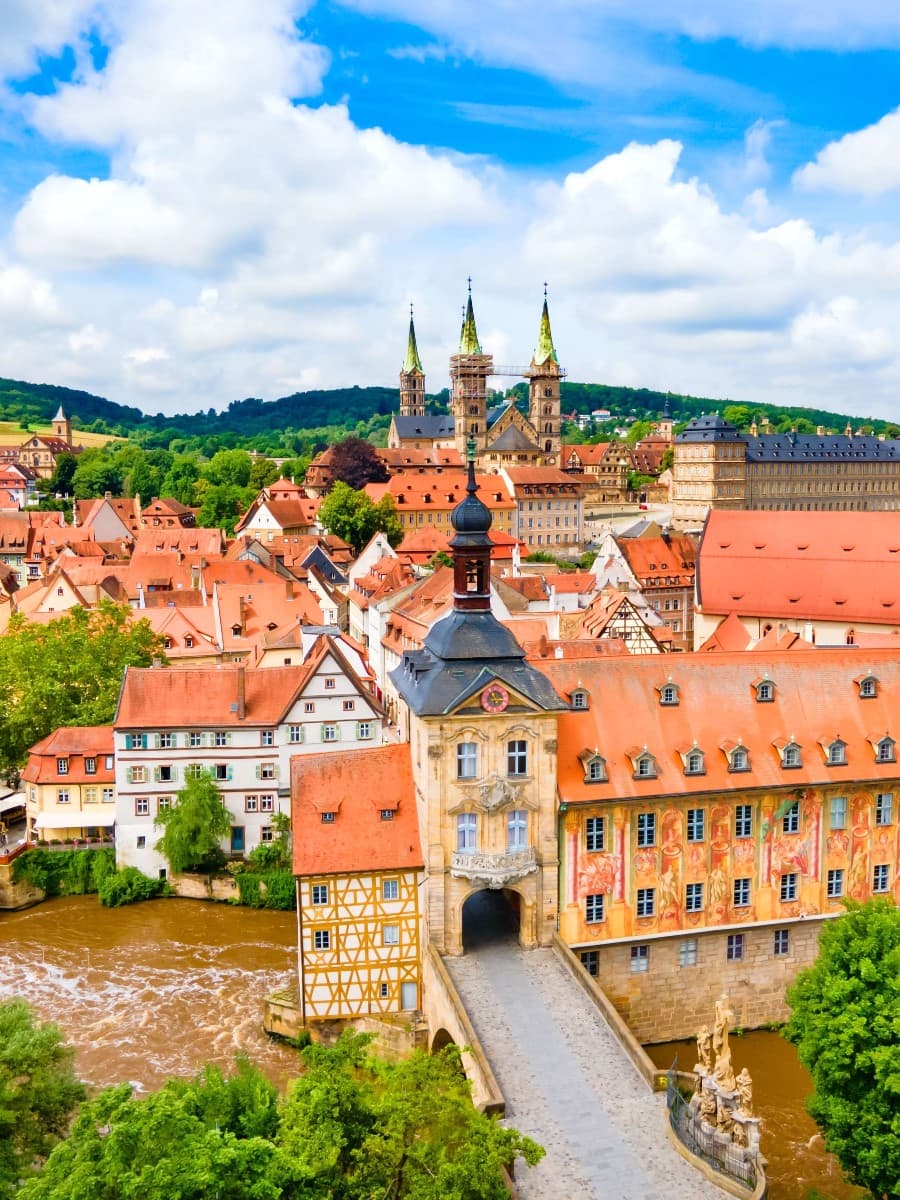
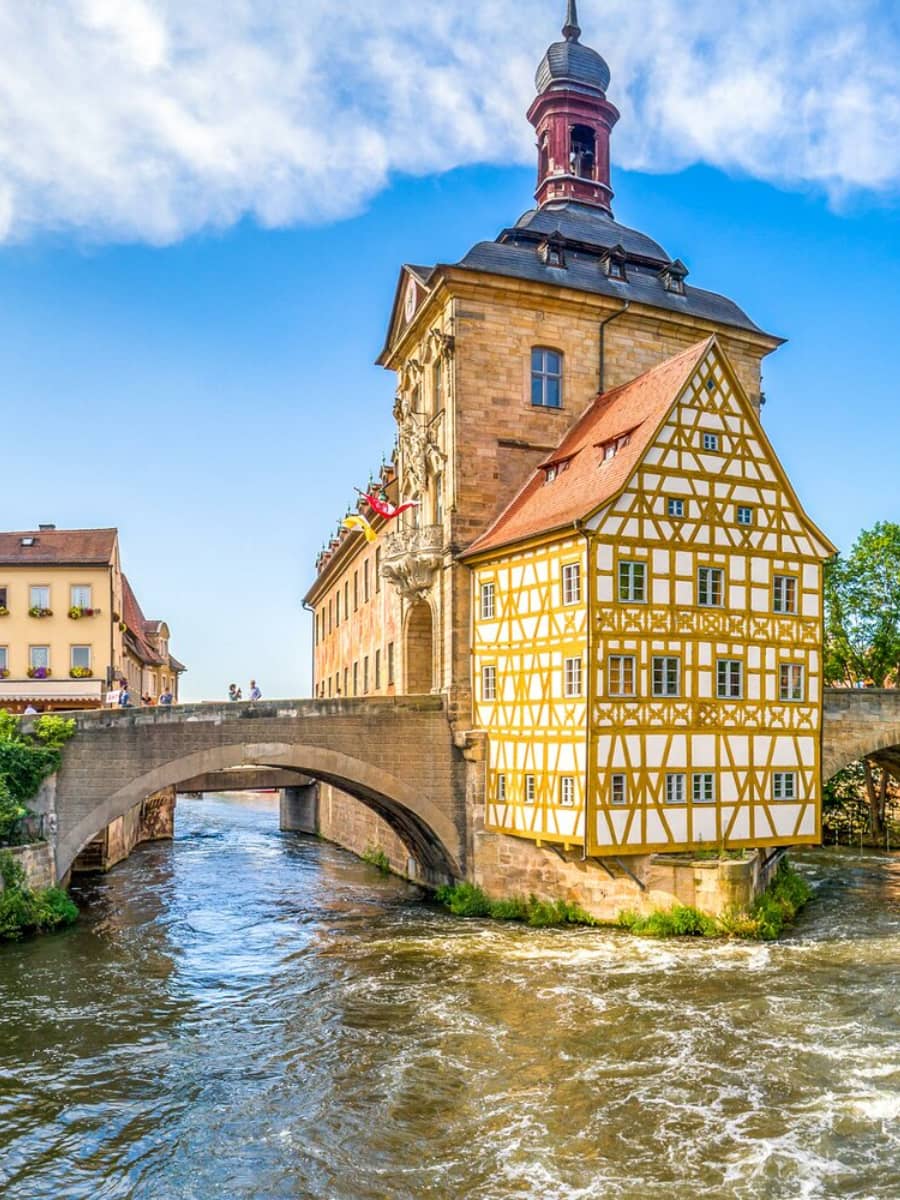
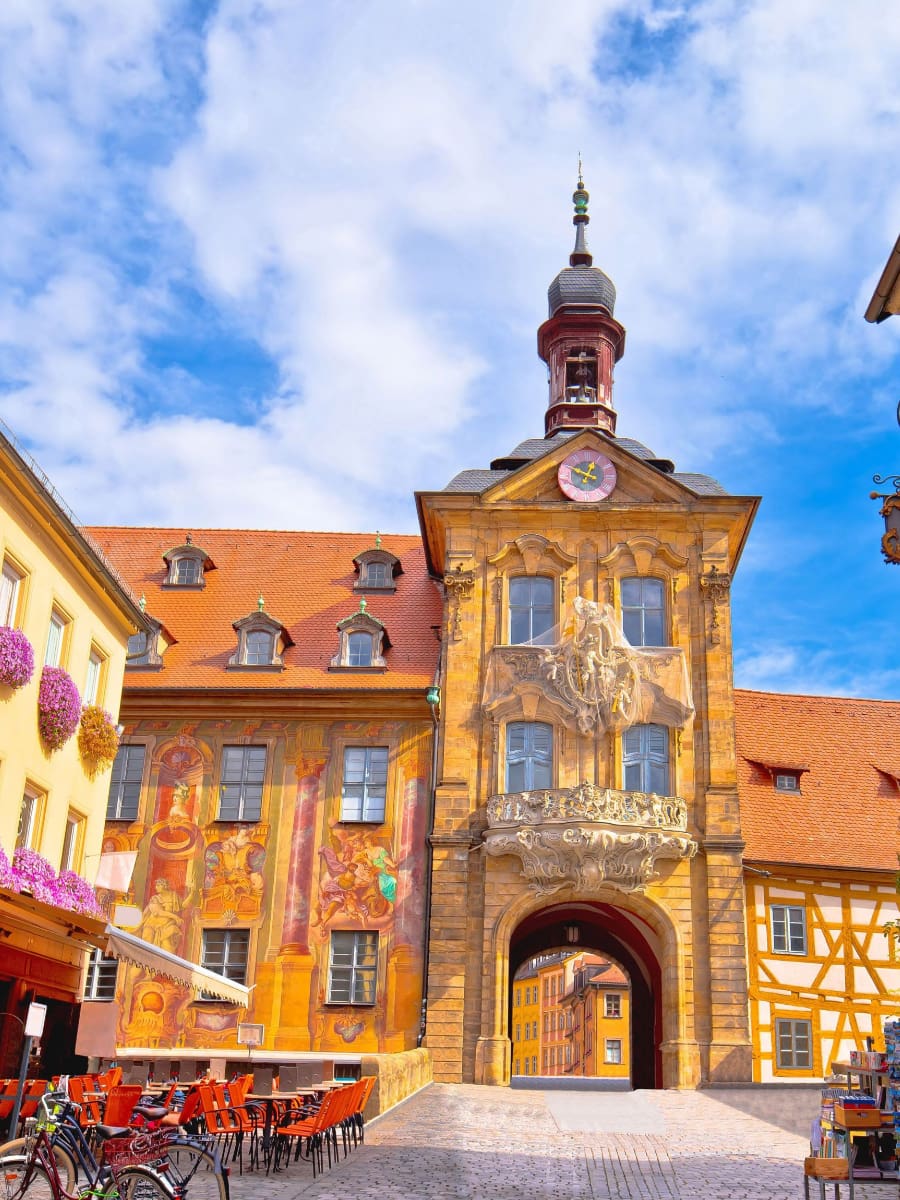
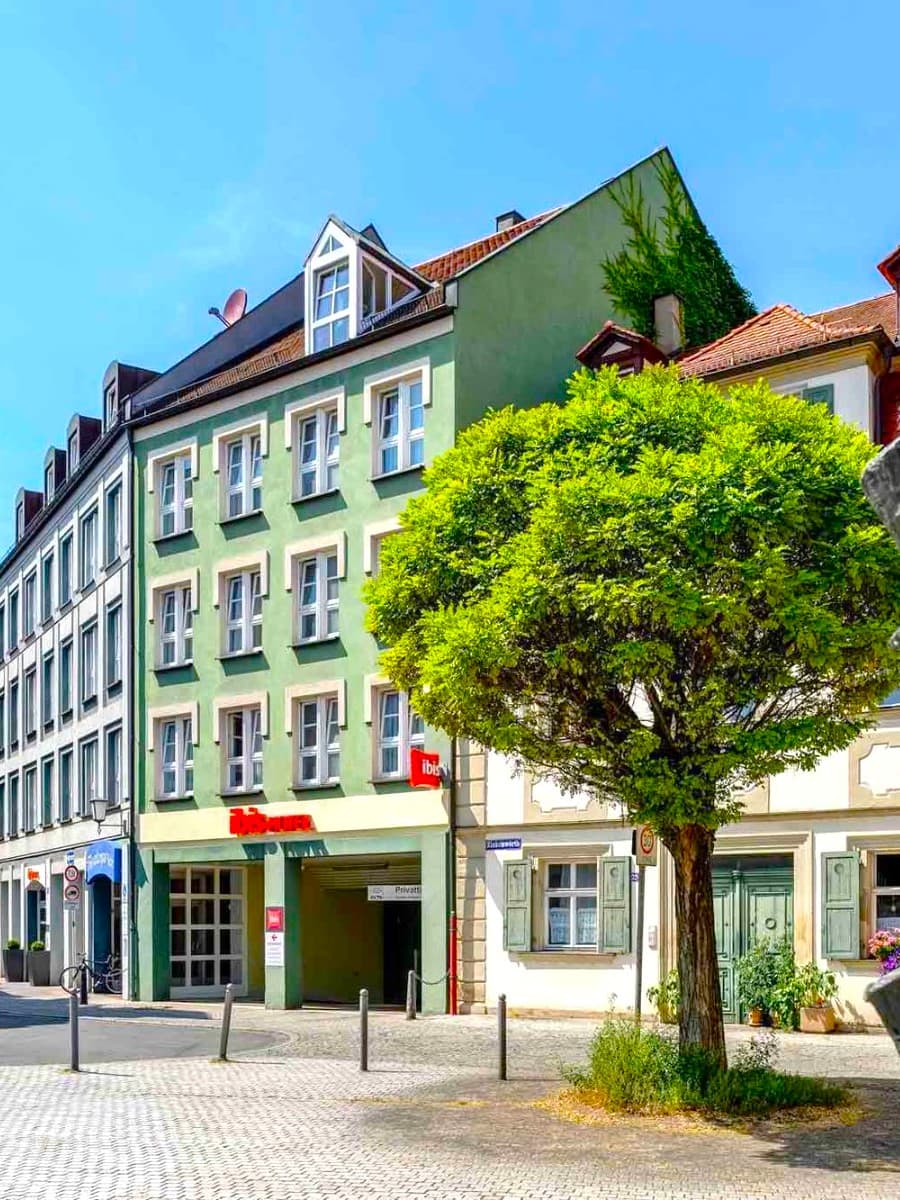
Cathedral Hill. I climbed the gentle slope to Bamberg’s Cathedral Hill (Domberg), where the Imperial Cathedral stands alongside the New Residence and Old Court. The cathedral’s interior is free to enter, allowing me to admire the famous Bamberg Rider statue and ornate tomb of Emperor Henry II without spending a cent.
Rose Garden Views. Behind the New Residence, I discovered the Rose Garden (Rosengarten) offering panoramic views over Bamberg’s red rooftops. This meticulously maintained garden provides perfect photo opportunities and a peaceful spot to rest after exploring the steep streets of the old town.
Free Bamberg Experiences:
- The picturesque Little Venice (Klein Venedig) district along the river
- The peaceful Michaelsberg Abbey gardens with city views
- The historic Geyerswörth Palace courtyard in the city center
- The atmospheric old town cemetery with ornate gravestones
- The bustling Green Market with local produce and flowers
⭐ Best Activities
- Bamberg Private Walking Tour: Discover the UNESCO-listed town of Bamberg on this private walking tour. Explore the well-preserved medieval and baroque architecture, learn about the town’s brewing traditions, and see highlights like Little Venice and the Old Town Hall built in the middle of the river.
3. Partnach Gorge
Natural Wonder. The Partnach Gorge (Partnachklamm) near Garmisch-Partenkirchen proved to be one of Bavaria’s most spectacular natural landmarks. While there is a small entry fee (€6 for adults, about $6.60), visiting during certain times in winter (when the upper section is closed) allows free access to part of this impressive limestone canyon.
Dramatic Scenery. Walking through the 700-meter-long gorge, I was mesmerized by the rushing Partnach River below and the 80-meter-high rock walls towering above. The narrow pathway, carved directly into the rock face, passes through tunnels and under waterfalls that sometimes spray mist across the path. The thundering sound of water created an unforgettable sensory experience.
Winter Magic. My winter visit revealed a completely different gorge, with massive ice formations hanging from the rock walls like frozen waterfalls. The reduced entry fee during winter months (when only the lower section is accessible) makes this an affordable natural spectacle, while the upper section sometimes offers free access.
Extended Hiking. Beyond the gorge itself, I discovered numerous free hiking trails in the surrounding area. The path to the Olympic Ski Stadium (the starting point for the gorge) offers beautiful valley views, while more ambitious hikers can continue from the gorge to the Eckbauer mountain for panoramic vistas without any additional fees.
Partnach Gorge Tips:
- The early morning visit for fewer crowds and better photography
- The “Klamm-Stüberl” rest house at the end of the gorge for refreshments
- The historic Olympic Ski Stadium at the gorge entrance
- The alternative forest path for those with claustrophobia
- The special torchlight tours offered on winter evenings (paid event)
Seasonal Activities
Christmas in Bavaria
Festive Traditions. Experiencing Bavaria during the Christmas season transformed my understanding of holiday magic. The region’s Christmas markets (Weihnachtsmärkte) date back to the 14th century and create an enchanting atmosphere unlike anything I’ve experienced elsewhere. Nuremberg’s Christkindlesmarkt, running from November 29 to December 24, stands as one of the oldest and most famous.
Market Treasures. At Munich’s Christmas Market (November 25 to December 24), I discovered handcrafted ornaments, intricate wooden nutcrackers, and traditional smokers (Räuchermännchen). The prices surprised me – many beautiful handmade items start around €10-15 ($11-16.50), making them perfect souvenirs or gifts.

Culinary Delights. The aroma of roasted chestnuts, gingerbread, and mulled wine (Glühwein) filled the air at every market I visited. In Tauber’s Reiterlesmarkt (November 29 to December 23), I savored Schneeballen (“snowballs”) – deep-fried dough balls covered in powdered sugar or chocolate for €3.50 (about $3.85).
Beyond Markets. The Bavarian Alps transform into a winter wonderland during December. I attended the magical Krampus Run (December 5), where locals dressed as fearsome Krampus creatures parade through town – a thrilling counterpoint to the gentle St. Nicholas celebrations the same day.
Christmas Market Must-Visits:
- Nuremberg Christkindlesmarkt for its famous Lebkuchen gingerbread
- Regensburg’s market at Thurn und Taxis Palace with aristocratic flair
- Munich’s Medieval Market with period costumes and crafts
- Augsburg’s Christkindlesmarkt, one of Bavaria’s oldest (dating to 1498)
Summer Festivals and Events
Festival Season. Summer in Bavaria explodes with cultural celebrations. Munich’s Tollwood Summer Festival (June 26 to July 21) transformed the Olympic Park into a multicultural celebration with international cuisine, live music, and environmental art installations – many performances are free, while headline concerts range from €25-65 ($27-71).
Beer Garden Culture. I discovered that summer is prime beer garden season. At Munich’s Augustiner-Keller (open daily May through September), I joined locals enjoying liter beers under chestnut trees. The tradition of bringing your own food while purchasing drinks creates an affordable, authentic experience – a Maß (liter) of beer costs around €9.50 (approximately $10.40).
Lake Celebrations. The Starnberger See Festival (July 19-20) surprised me with its illuminated boat parade and spectacular fireworks over Bavaria’s second-largest lake. Local bands perform on floating stages while visitors enjoy regional specialties from lakeside food stalls. Entry costs vary by event, with many free activities throughout the weekend.
Alpine Traditions. In the mountain towns, I witnessed colorful folk festivals featuring traditional costumes, music, and dancing. The Garmisch-Partenkirchen Folk Festival (August 7-16) includes alphorn blowing contests and demonstrations of ancient crafts, with most outdoor performances free to attend.
Summer Festival Highlights:
- Munich’s Kocherlball traditional dance at the Chinese Tower (July 20)
- Passau’s European Weeks Festival for classical music (June 20 to July 27)
- Regensburg’s Bürgerfest city-wide street festival (June 27-29)
- Aschaffenburg’s Stadtfest with multiple music stages (August 29-31)
- Dachau’s Summer Festival with Bavarian bands (July 12-13)
Spring Blooms in Royal Parks
Royal Splendor. Spring transformed Bavaria’s palace gardens into colorful tapestries of tulips, daffodils, and flowering trees. At Nymphenburg Palace Gardens in Munich, I wandered through formal parterres bursting with over 100,000 spring bulbs. The palace entry costs €8 (about $8.80), but the extensive gardens are free to explore.
Alpine Wildflowers. By late May, the Alpine meadows erupted with wildflowers. I hiked the Kranzberg Nature Trail near Mittenwald (May 15-June 10 is peak bloom) through fields of gentian, alpine roses, and edelweiss. The 3-hour circular route offers spectacular mountain views and requires only moderate fitness.
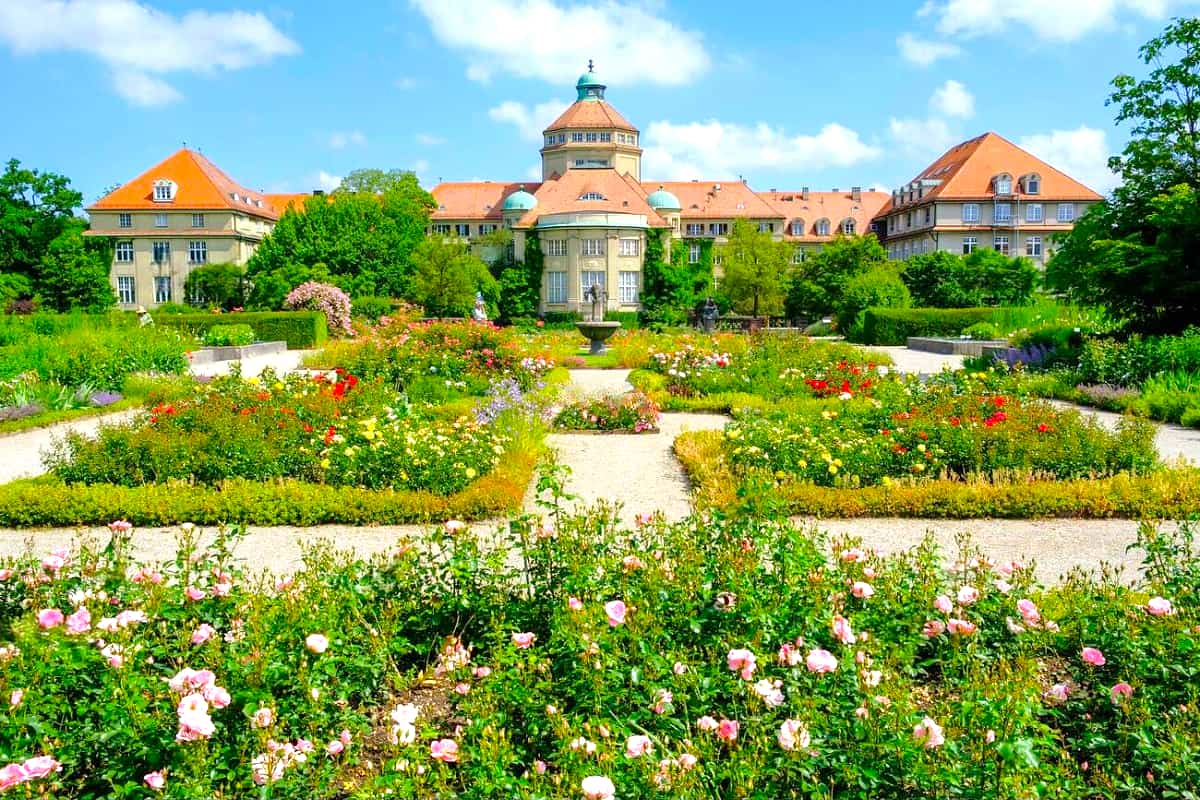
Cherry Blossoms. Bamberg’s famous cherry blossom display along the Regnitz River (typically mid-April) created a pink canopy that rivaled Japan’s more famous displays. Local cafés set up special outdoor seating during this brief but beautiful season, perfect for enjoying coffee under the blossoms.
Garden Festivals. The Würzburg Spring Festival (April 25-May 11) celebrates the awakening gardens of the Residenz Palace with special tours, plant markets, and garden workshops. The festival’s opening weekend features a wine village showcasing local vintages from €4 per glass (approximately $4.40).
Spring Bloom Experiences:
- Herrenchiemsee Palace Gardens with formal French-style plantings
- Munich’s Botanical Garden with over 14,000 plant species (€5.50 entry)
- Linderhof Palace’s terraced gardens with mountain backdrop
- Bayreuth’s Hermitage water gardens with trick fountains
- Memmingen’s historic cemetery gardens with rare tulip varieties
Autumn Foliage Walks
Golden Landscapes. Autumn painted Bavaria’s forests in spectacular shades of gold, orange, and crimson. The Bavarian Forest National Park near Neuschönau offered my favorite fall hiking experience, with ancient woodlands transformed into a kaleidoscope of color. The peak foliage period typically falls between October 10-25.
Vineyard Hikes. The hills around Würzburg surprised me with their beauty during harvest season. The 13km Franconian Wine Trail through terraced vineyards provides both stunning fall colors and opportunities to sample new wine at family-owned vineyards along the route. September weekends feature special harvest festivals in different villages.
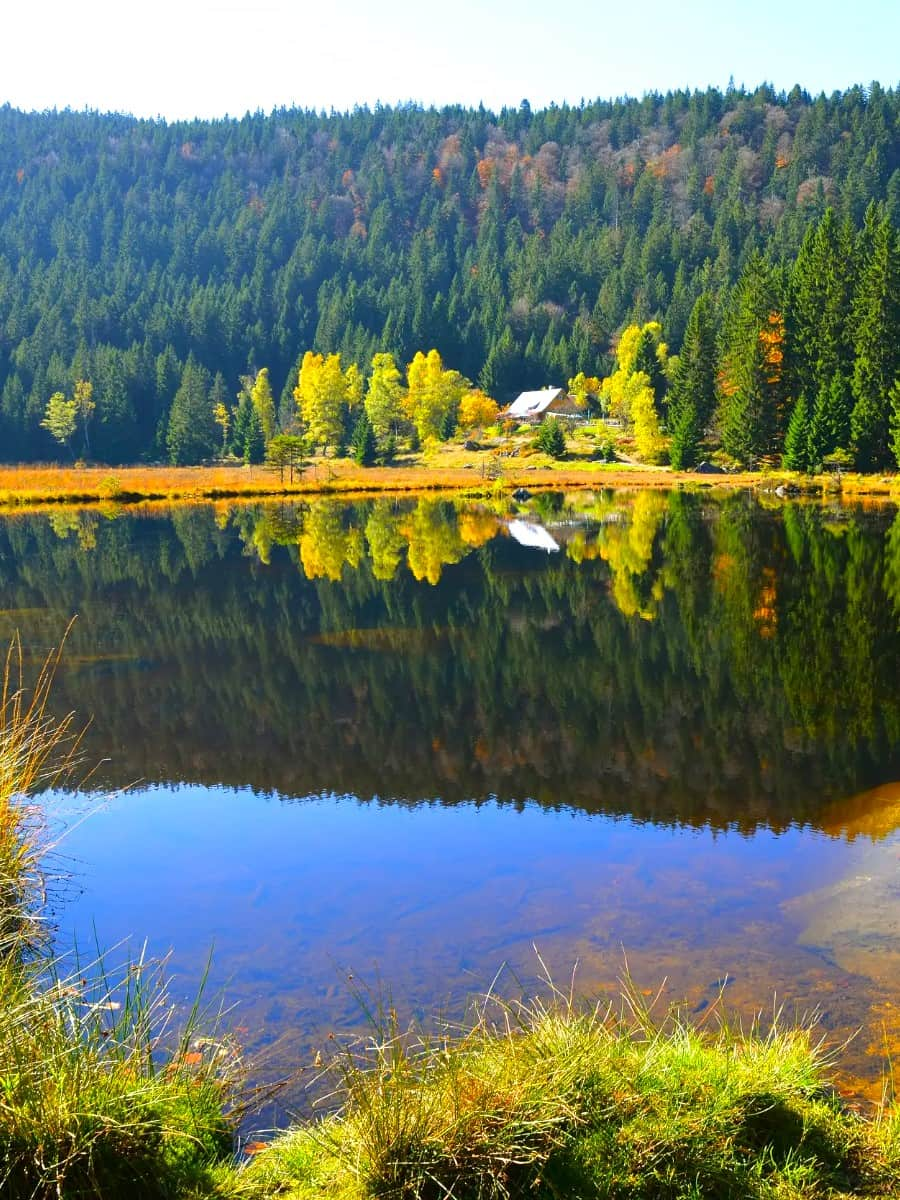
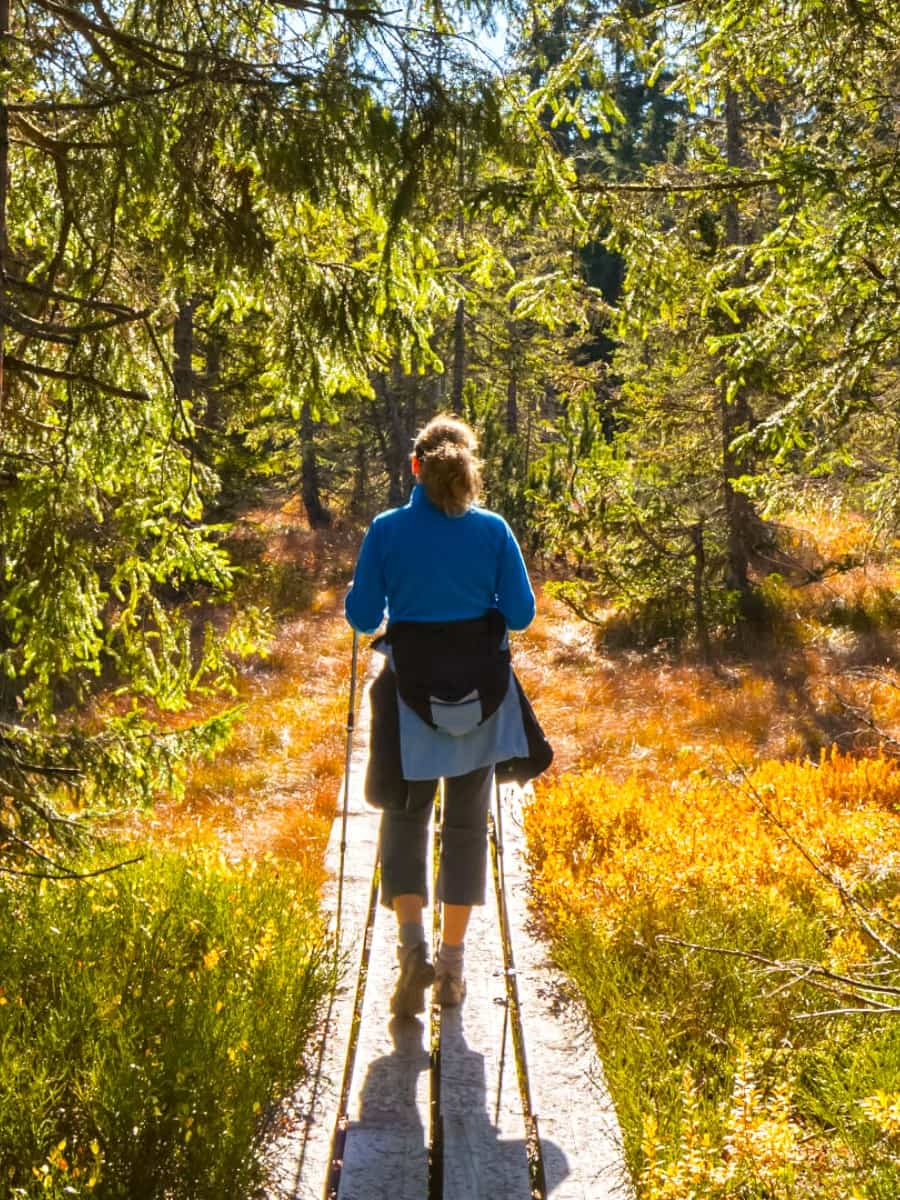
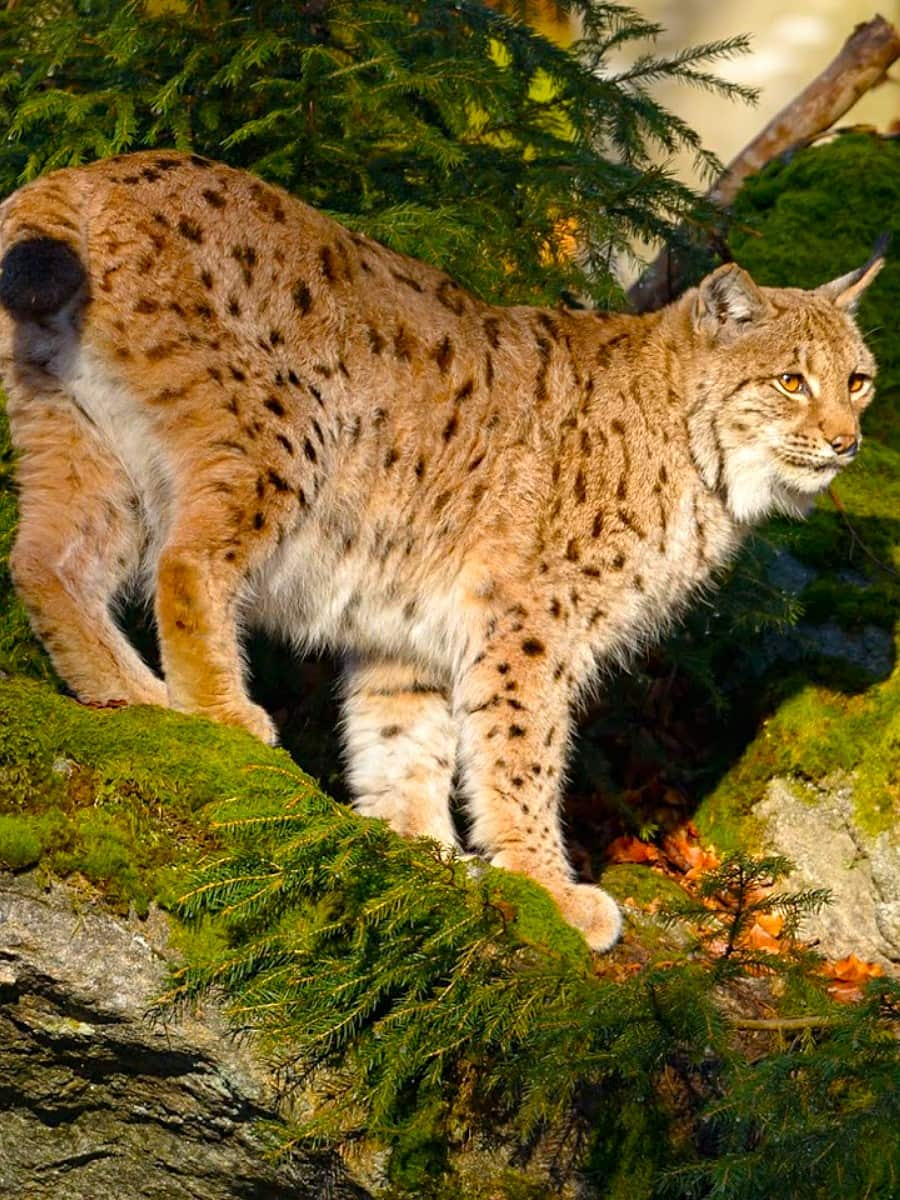
Alpine Color. The mountains around Berchtesgaden National Park display dramatic autumn scenery. I hiked the moderate Soleleitungsweg trail (October 5-20 for peak color), which follows a historic brine pipeline with panoramic views of golden larches against Alpine peaks. The 3-hour route requires no special equipment beyond good walking shoes.
Lake Reflections. Autumn at Eibsee near Garmisch-Partenkirchen offered mirror-like reflections of colorful trees and the Zugspitze mountain. The 7km lake circuit trail provides constant views and numerous photography spots. Early morning visits (before 9am) reward with the calmest water for perfect reflections.
Autumn Walk Recommendations:
- Partnach Gorge with red and gold leaves contrasting against rock walls
- Ammergau Alps Nature Park’s Meditation Trail near Ettal
- Altmühltal Nature Park’s limestone valleys near Eichstätt
Day Trips from Bavaria
1. Salzburg, Austria
Musical Heritage. Just a short train ride from Munich, Salzburg captivated me with its stunning baroque architecture and Mozart legacy. As one of the most beautiful places to visit near Bavaria, this Austrian gem offers a perfect balance of culture and Alpine scenery. The Bayern Ticket (€26 for one person, €32 for two, approximately $28.50/$35) covers round-trip travel and makes this an affordable day trip.
Fortress Views. Hohensalzburg Fortress dominates Salzburg’s skyline from its perch atop Festungsberg hill. I took the funicular railway up (€13.30 round-trip) and was rewarded with breathtaking views of the Alps. This 11th-century castle remains one of Austria’s most popular tourist landmarks, drawing visitors from around the world.
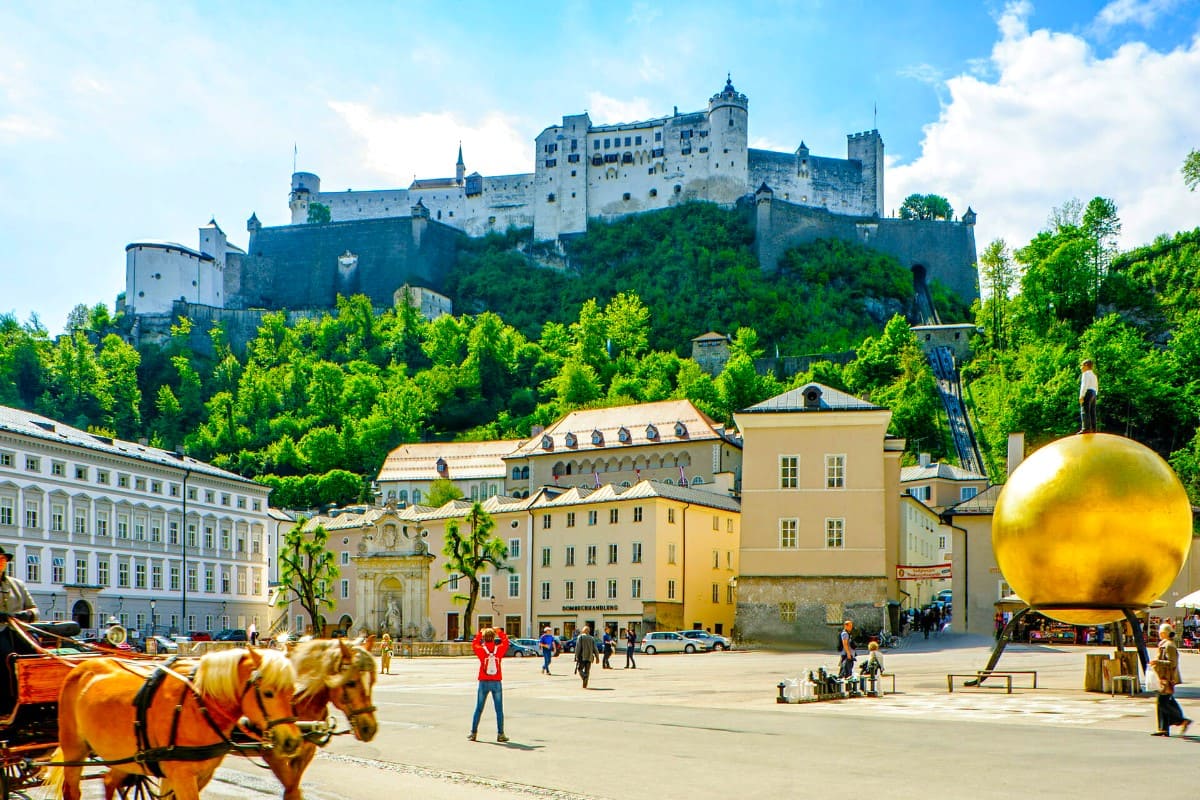
Old Town Charm. Salzburg’s compact Altstadt earned its UNESCO World Heritage status through well-preserved baroque architecture. I wandered through narrow lanes like the Getreidegasse, lined with wrought-iron guild signs and charming shops. The historic old town features beautiful streets and traditional architecture that transport you centuries back in time.
Sound of Music Sites. The Mirabell Gardens with their tranquil floral displays provided the perfect backdrop for iconic scenes from “The Sound of Music.” Rather than taking an expensive tour, I created my own self-guided route using online maps to discover filming locations throughout the city. This is one of the best things to see when visiting from Bavaria.
Salzburg Day Trip Essentials:
- Fortress Hohensalzburg with panoramic Alpine views
- Mirabell Palace Gardens with famous movie locations
- St. Peter’s Abbey with historic cemetery and catacombs
- Salzburg Cathedral’s impressive baroque architecture
- Mozart’s Birthplace museum on Getreidegasse
⭐ Best Activities
- Tour: Hallstatt Tour from Salzburg: Visit the picture-perfect village of Hallstatt on this day trip from Salzburg. Though technically in Austria, this tour is a popular excursion from Bavaria, offering stunning lake views, Alpine scenery, and the chance to explore one of Europe’s most photographed villages.
- Tour: Eagle's Nest in Berchtesgaden Tour from Salzburg: Visit Hitler’s mountaintop retreat, the Eagle’s Nest, on this historical tour from Salzburg. Cross from Austria into Bavaria to explore this significant WWII site, enjoy spectacular Alpine views, and learn about the area’s complex history from your knowledgeable guide.
- Tour + Ticket Online: Swarovski Crystal Worlds + Tandem Paragliding Experience the magic of crystals and soar through the Austrian Alps with this exciting combo package. Visit the dazzling Swarovski Crystal Worlds, featuring 15 Chambers of Wonder filled with sparkling exhibits and fantastical art installations.
2. Dachau Concentration Camp Memorial
Solemn History. My visit to Dachau Concentration Camp Memorial Site offered a profound glimpse into one of history’s darkest chapters. Located just 30 minutes from Munich, the capital of Bavaria, this former camp now serves as a powerful memorial. The site welcomes around 800,000 visitors annually who come to learn and reflect.
Guided Experience. I joined a tour with specially trained guides approved by the Memorial Site (€53, approximately $58). These knowledgeable guides conveyed this difficult subject with dignity and respect for the victims. The tour departs from central Munich and includes all travel arrangements by train and bus, making it a convenient day trip from Bavaria.
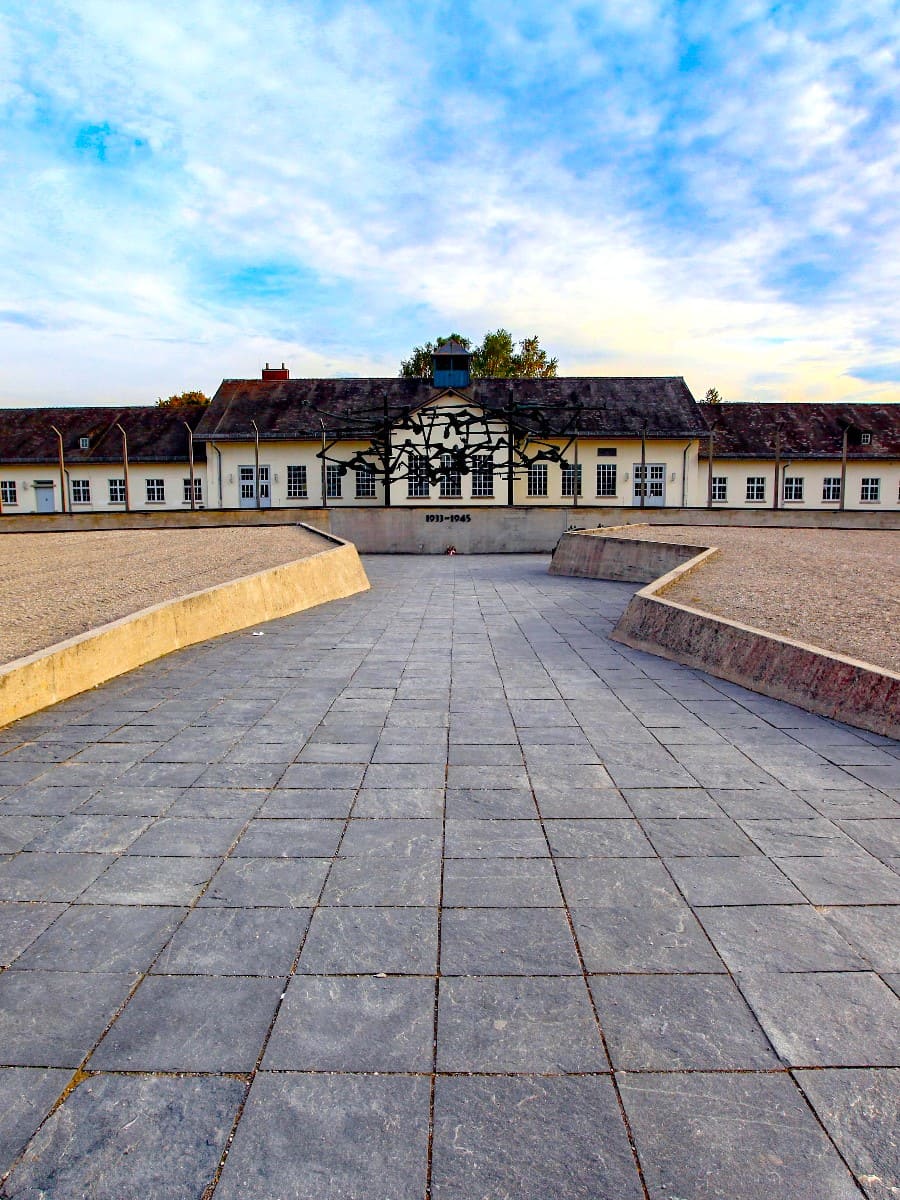
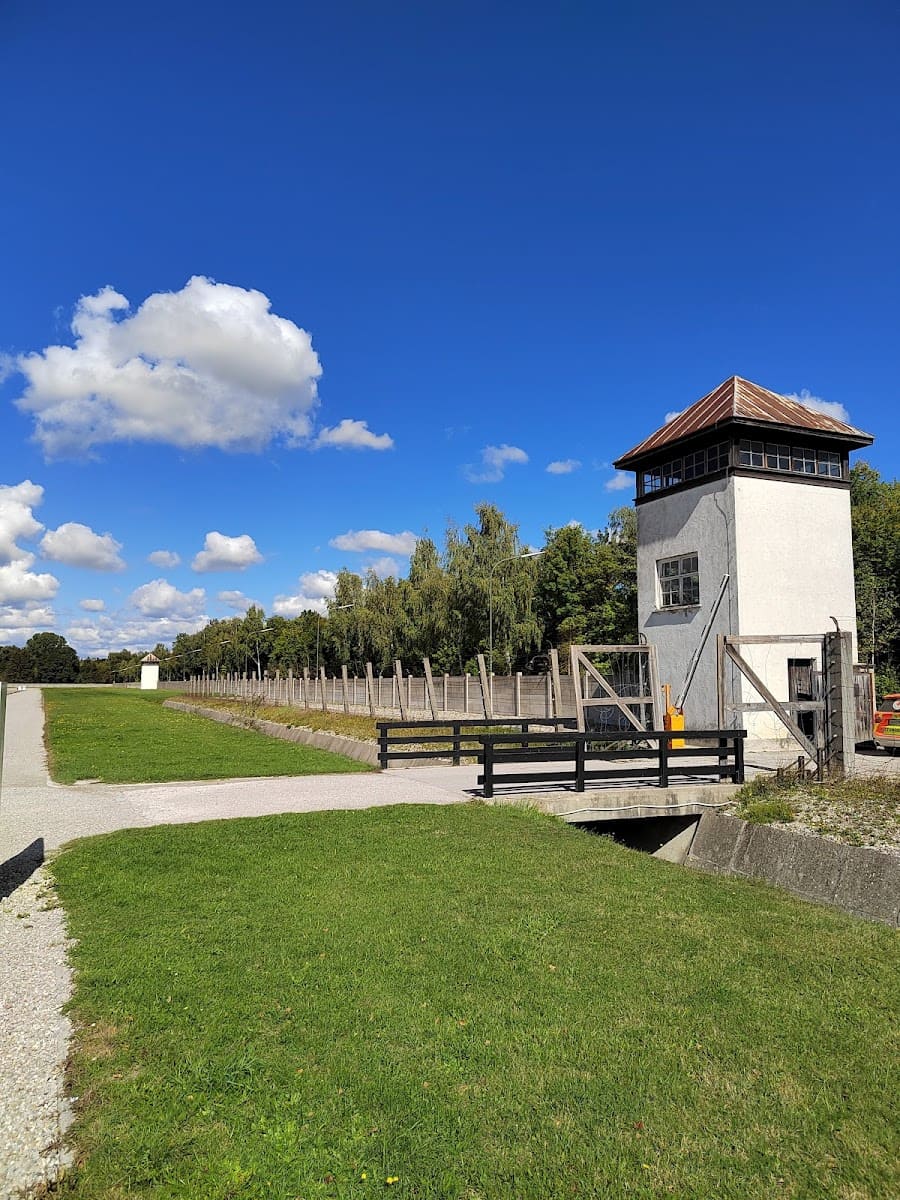
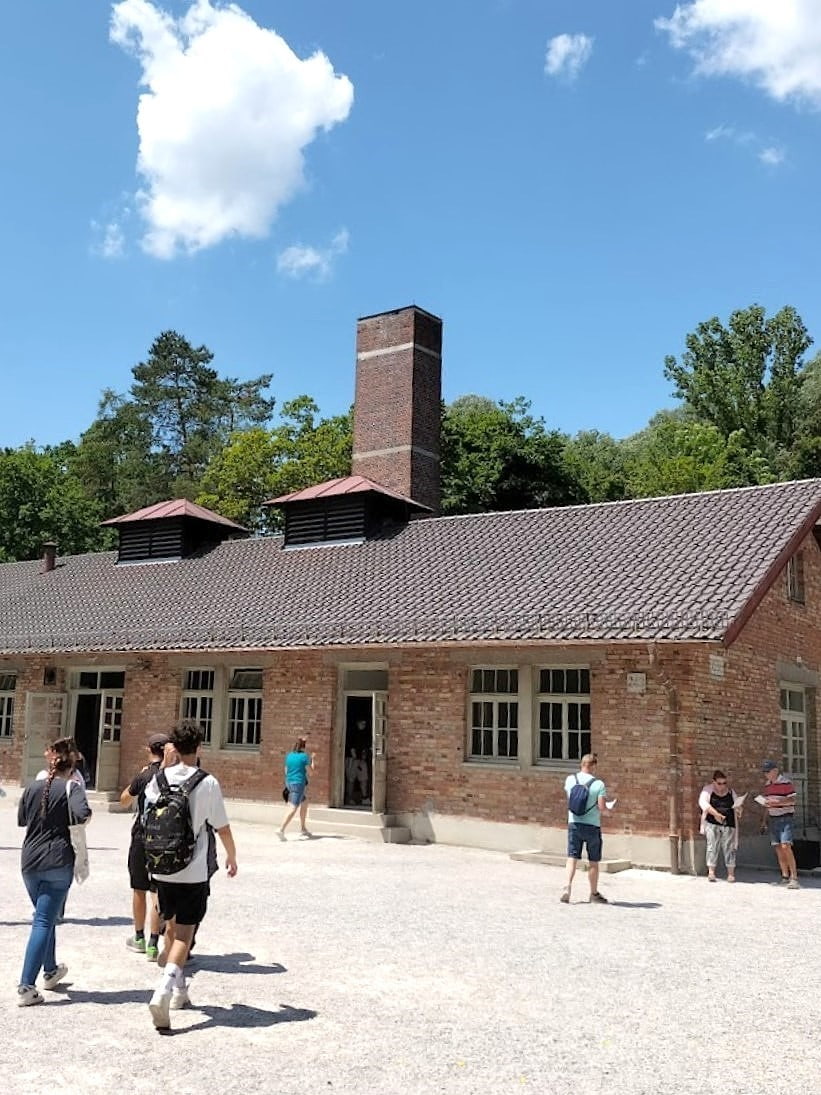
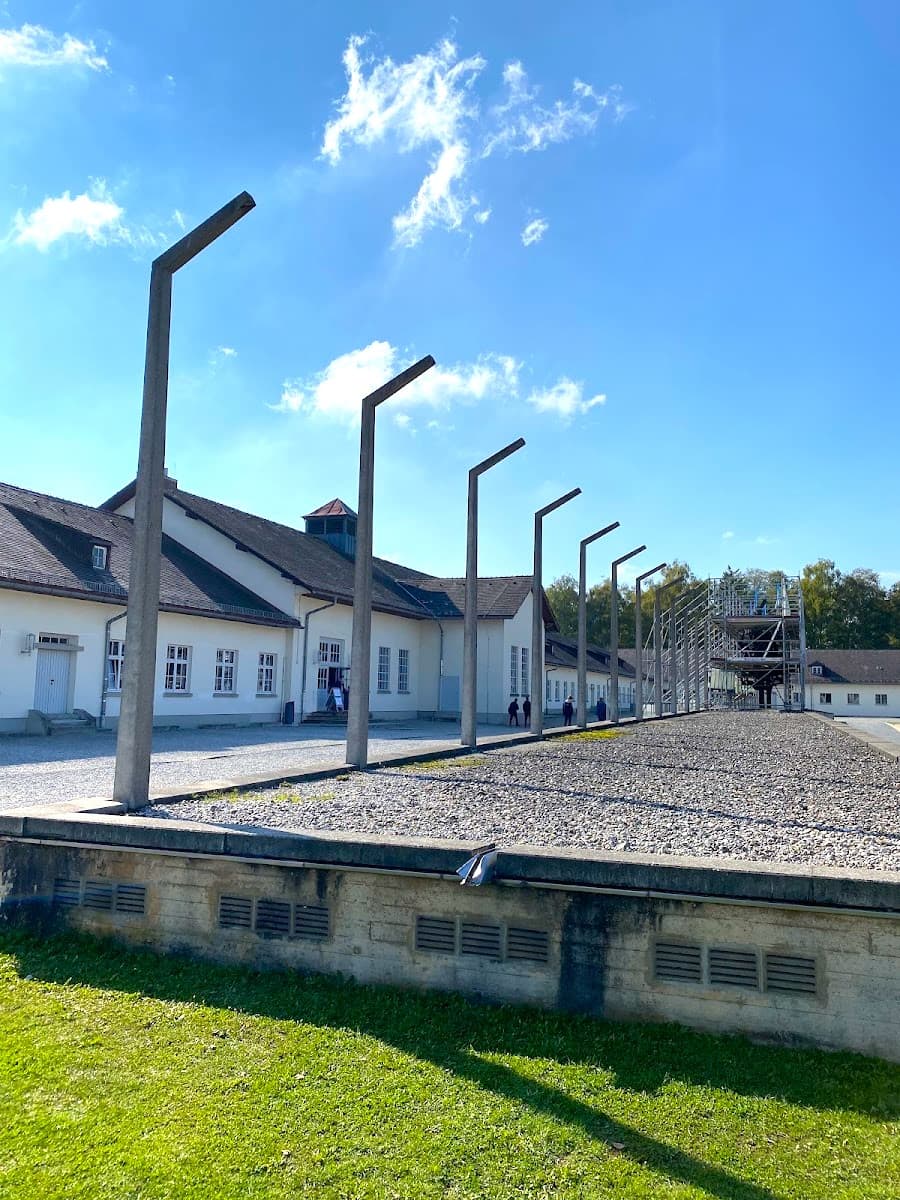
Historical Significance. Opened in 1933 as the first Nazi camp in Germany, Dachau became a model for all other camps. Walking through the grounds, I saw the remaining original buildings including the main entrance gate with its infamous “Arbeit Macht Frei” inscription. The experience was deeply moving and educational.
Permanent Exhibition. The comprehensive exhibition housed in the former maintenance building provided detailed insights into prisoners’ lives, the camp’s design, and its historical context. I found the documentary film particularly illuminating, though emotionally challenging. This is one of the most important places to see in Bavaria for those interested in WWII history.
Dachau Memorial Site Features:
- Main entrance gate (Jourhaus) and guard watchtowers
- Reconstructed prisoner barracks showing living conditions
- Original crematorium and memorial sites
- Documentary film (English showings at 10:15am, 11:45am, and 2:00pm)
- Religious memorials representing different faiths
⭐ Best Activities
- Dachau Concentration Camp Tour: Take a sobering and educational tour of the Dachau Memorial Site from Nuremberg. Learn about the camp’s history as the first Nazi concentration camp and gain insights into this dark period of German history with a respectful and informative guide.
3. Herrenchiemsee Palace
Island Splendor. My journey to Herrenchiemsee Palace began with a scenic train ride from Munich Central Station to Chiemsee, Bavaria’s largest lake. This day trip to King Ludwig II’s Versailles-inspired palace combines natural beauty with royal opulence. The tour starts at 9:20 am and includes both train and boat transportation to this magnificent schloss.
Royal Extravagance. Stepping off the boat onto Herreninsel Island, I was immediately struck by the grandeur of Ludwig’s vision. The palace interior features a stunning Hall of Mirrors that actually exceeds its Versailles counterpart in length. The king’s elevated dining table, constructed so he wouldn’t have to see his servants, reveals his eccentric personality.
Garden Grandeur. The formal French gardens feature spectacular fountains that rival those at Versailles. Walking through the meticulously maintained parterres and tree-lined avenues, I felt transported to another era. The central Neptune Fountain shoots water 25 meters high and operates from April through October.
Island Hopping. I recommend purchasing the combination ticket that includes visits to both Herreninsel and the charming smaller Fraueninsel. The latter features a still-active Benedictine Convent dating back over 1000 years. This is one of Bavaria’s most popular excursion destinations, combining culture, history and natural beauty.
Herrenchiemsee Palace Highlights:
- Majestic buildings inspired by the Palace of Versailles
- King Ludwig II museum in the former monastery
- Boat trip across Bavaria’s largest lake
- Fraueninsel with its historic Benedictine nunnery
- Spectacular gardens with mountain and lake views
| Day Trip Option | Travel Time | Basic Price | What’s Included |
|---|---|---|---|
| Salzburg, Austria | 2 hours | €26-32 | Bayern Ticket (train + public transport) |
| Dachau Memorial | 30 minutes | €53 | Guided tour with transportation |
| Herrenchiemsee | 1 hour | €22 | Boat and palace grounds access |
⭐ Best Activities
- Herrenchiemsee Palace Rail Trip from Munich: Visit King Ludwig II’s magnificent island palace on this convenient day trip from Munich. Travel by rail to Bavaria’s largest lake, Chiemsee, then take a boat to explore the opulent Herrenchiemsee Palace, modeled after Versailles, with its stunning gardens and royal apartments.
FAQ
Is Bavaria worth seeing?
Absolutely! Bavaria is one of the most beautiful regions, offering fairytale castles like Neuschwanstein, charming medieval towns such as Rothenburg ob der Tauber, and stunning natural landscapes like the Bavarian Alps and Königssee Lake.
What is Bavaria best known for?
Bavaria is best known for its iconic attractions, including Neuschwanstein Castle, Oktoberfest in Munich, the Romantic Road, and its rich beer culture.
Is it safe to travel to Bavaria?
Yes, Bavaria is one of the safest states. It has low crime rates and is very clean. You can walk comfortably at night in most areas.
How many days in Bavaria is enough?
A minimum of 7 days is ideal to explore Bavaria’s highlights at a relaxed pace. Spend 2 days in Munich, 1 day at Neuschwanstein Castle, 1 day exploring Rothenburg ob der Tauber, and the rest visiting places like Salzburg or the Bavarian Alps.
